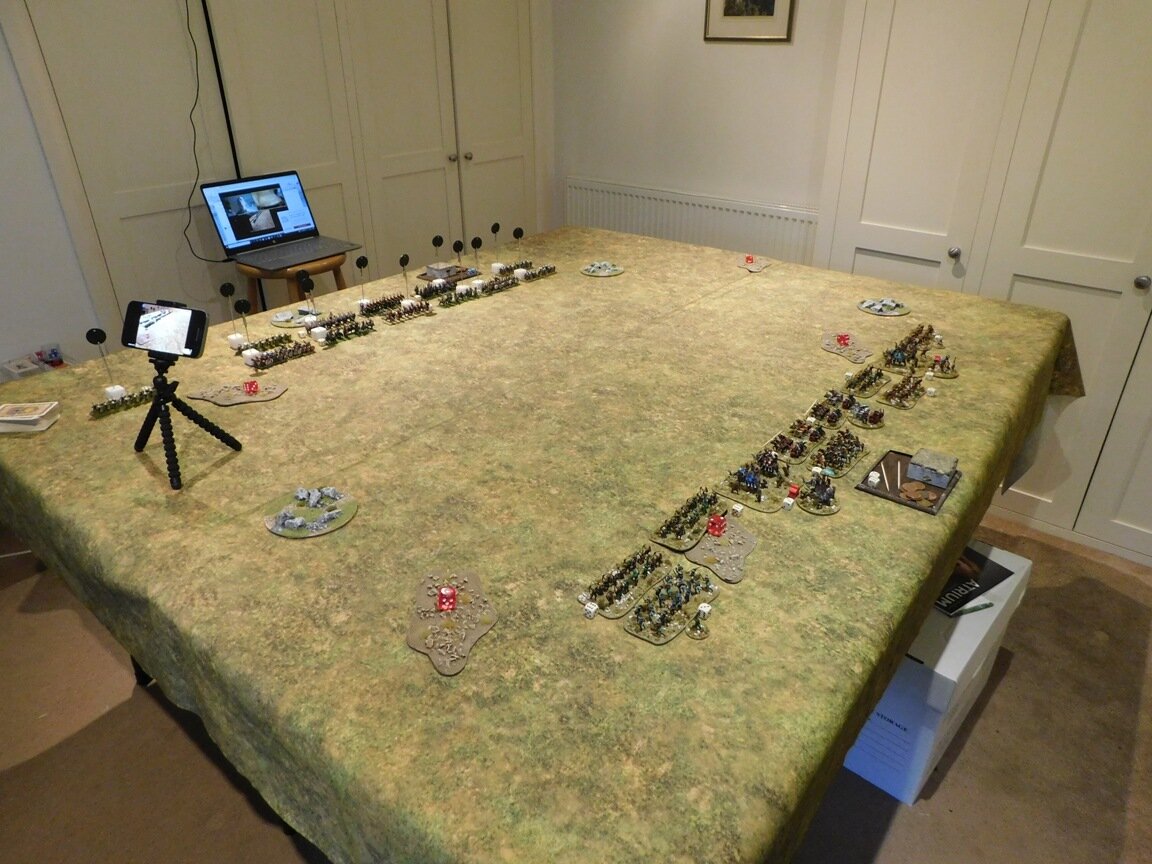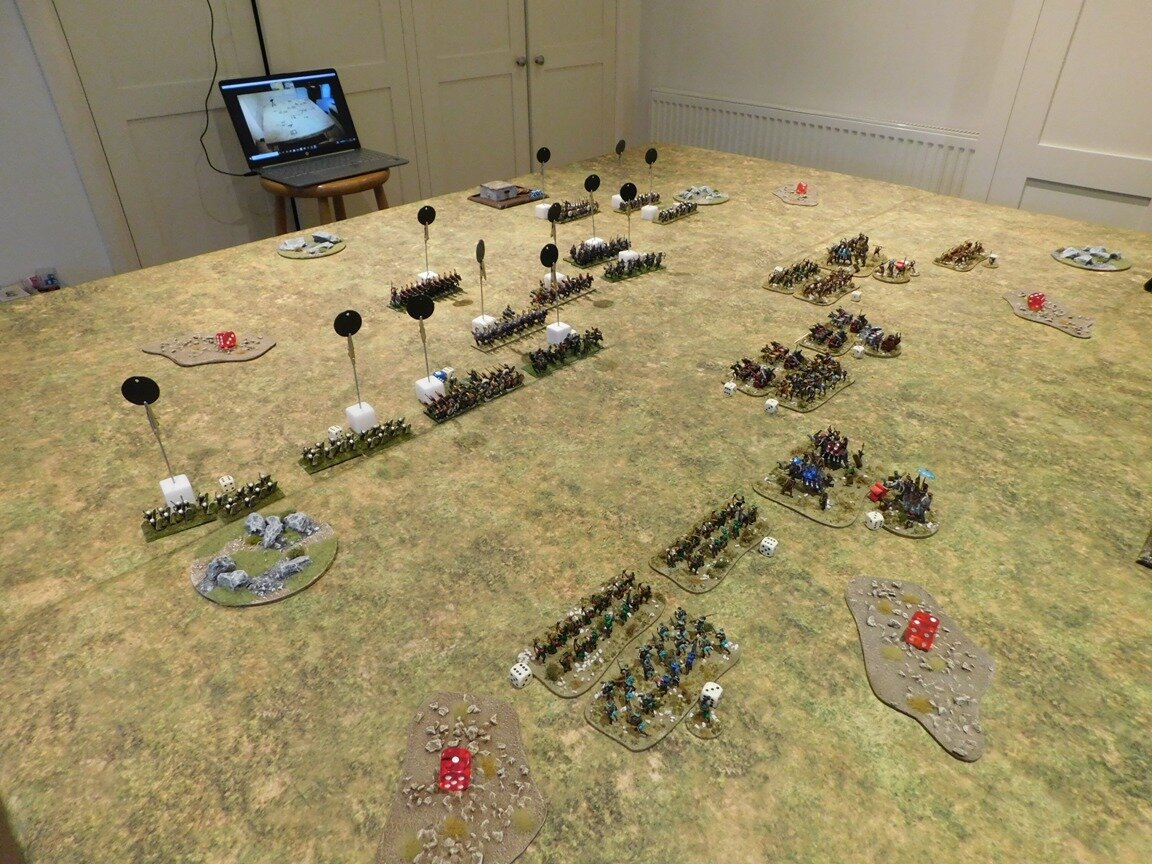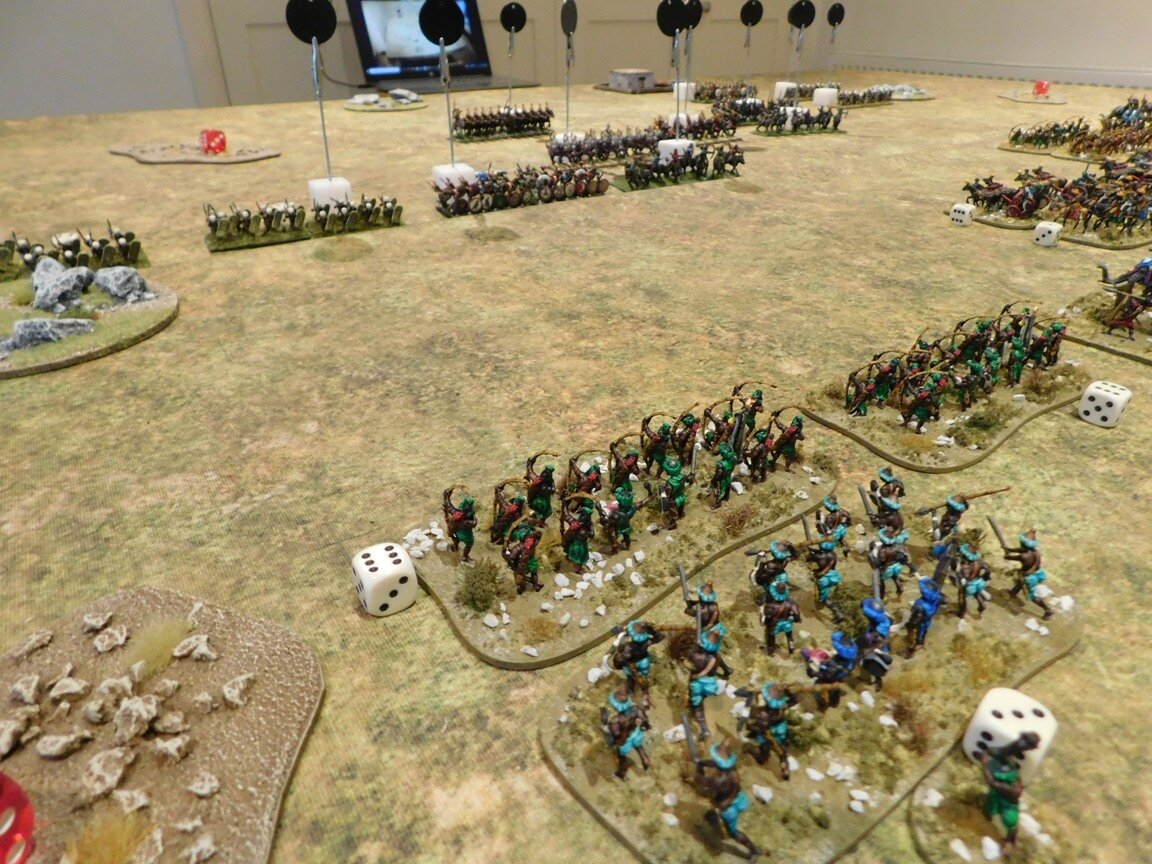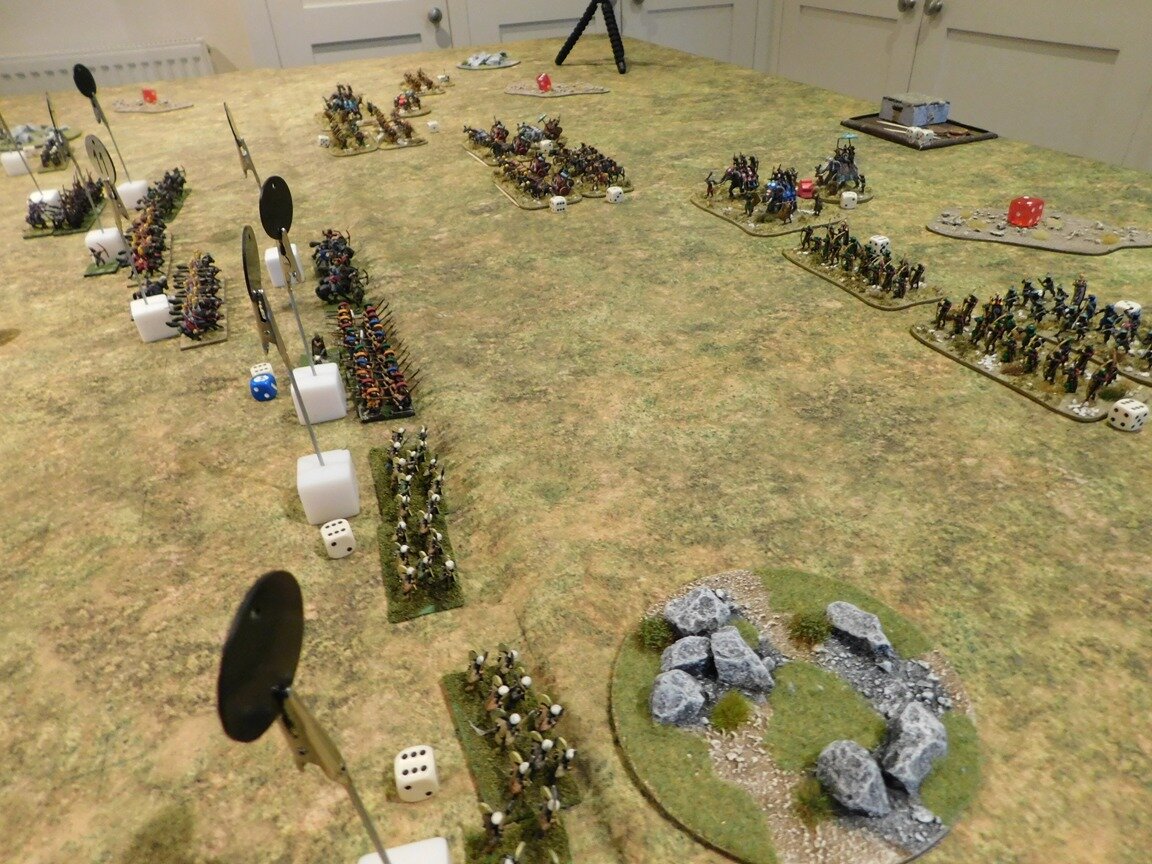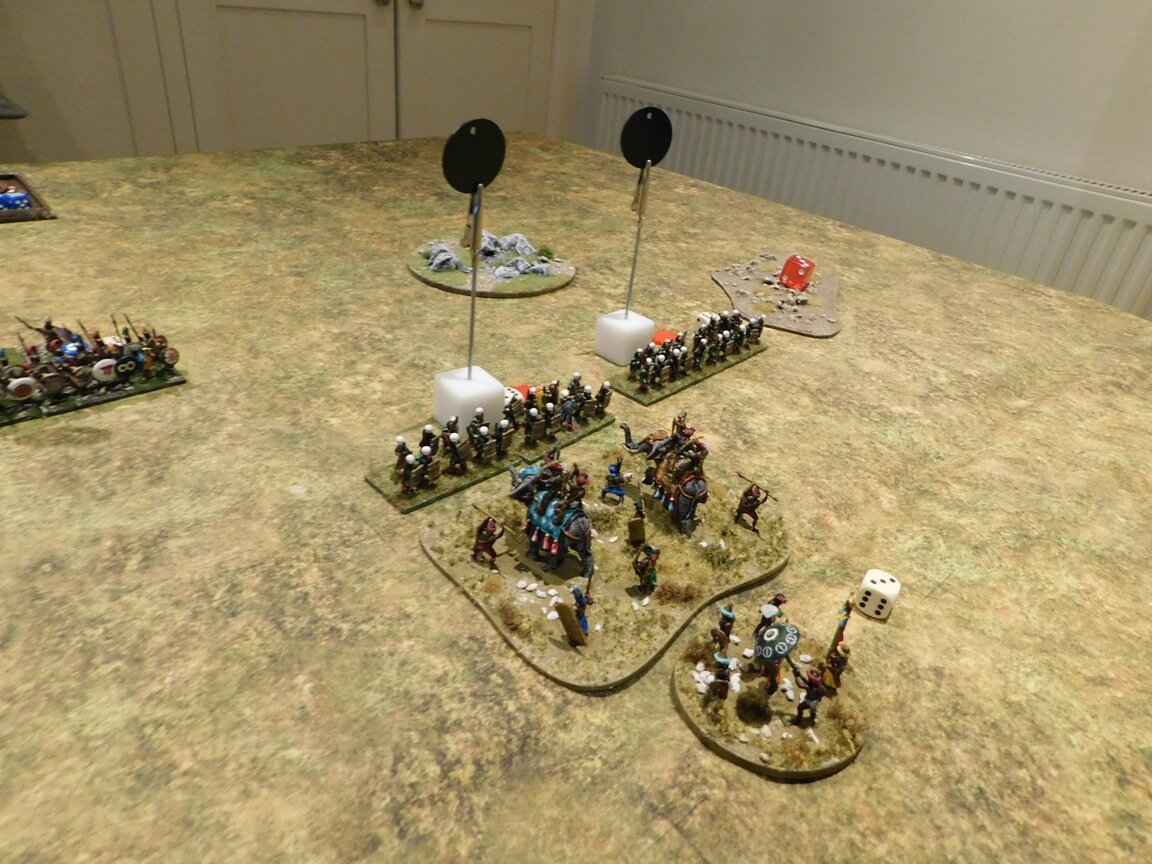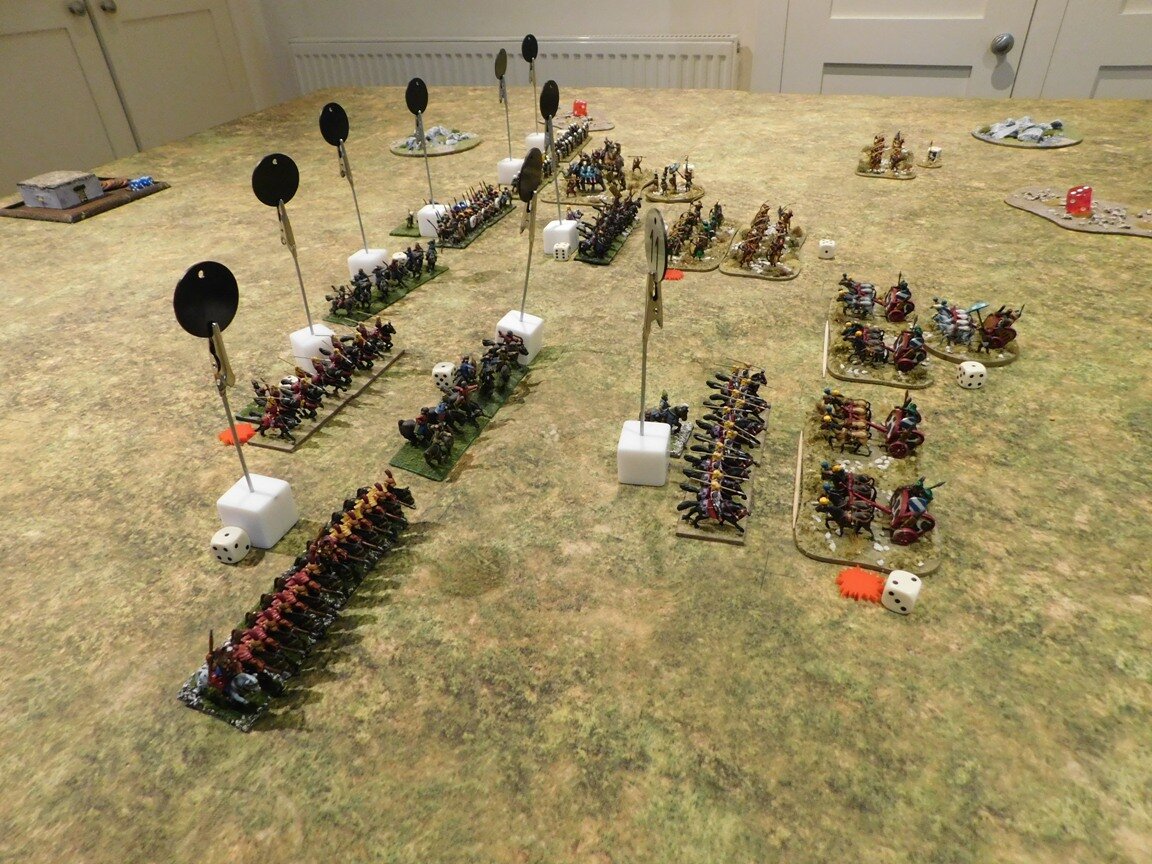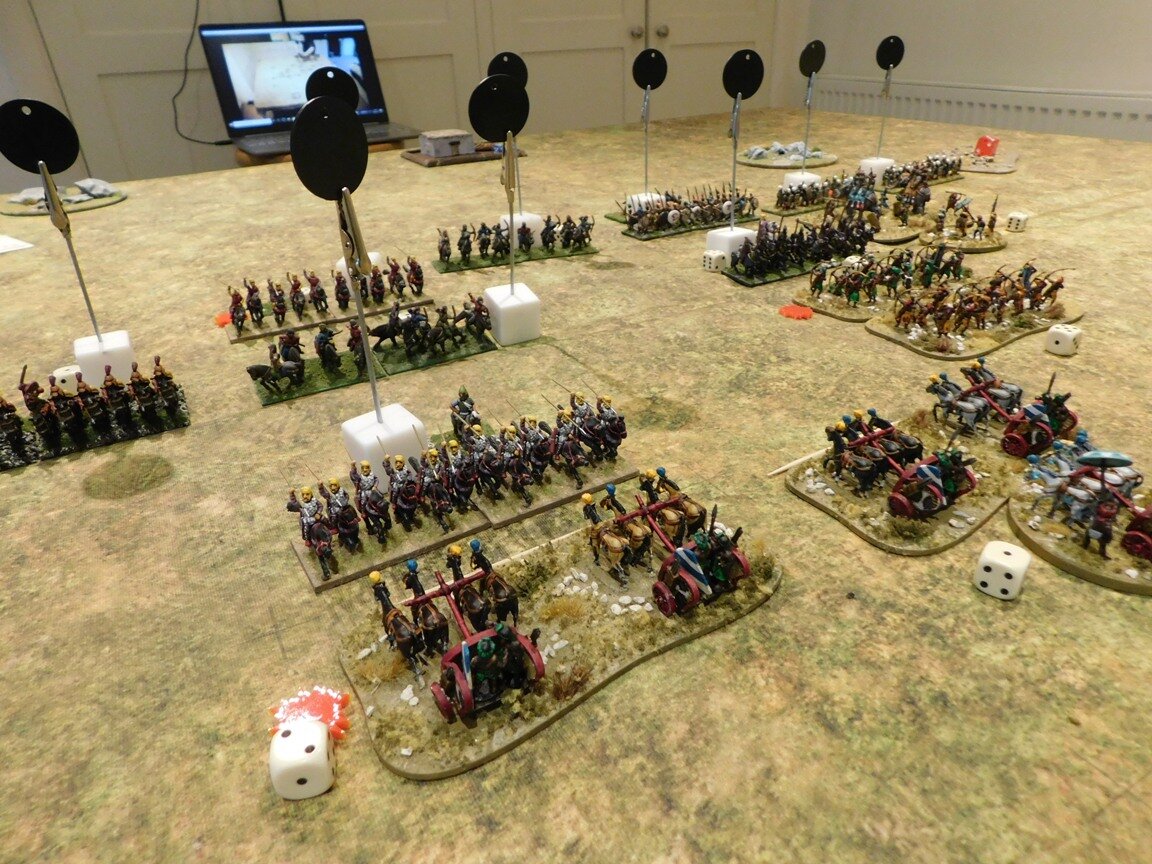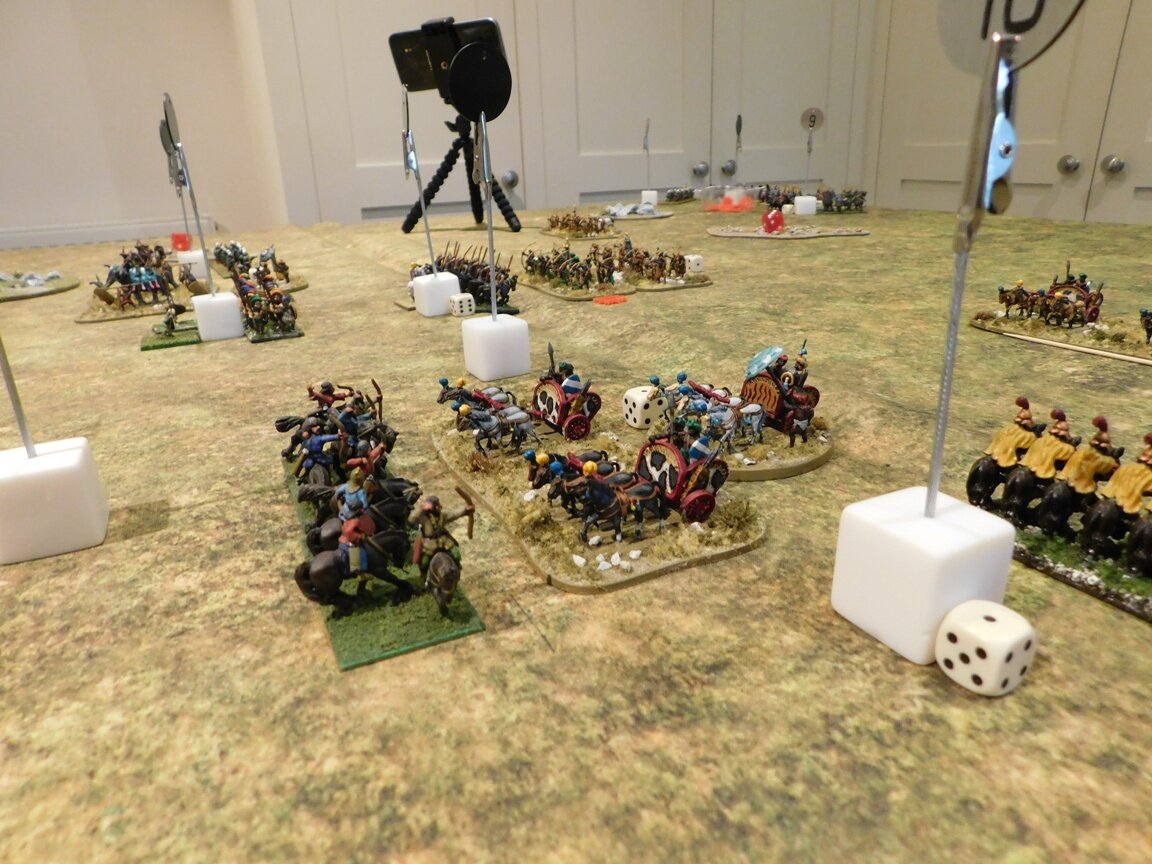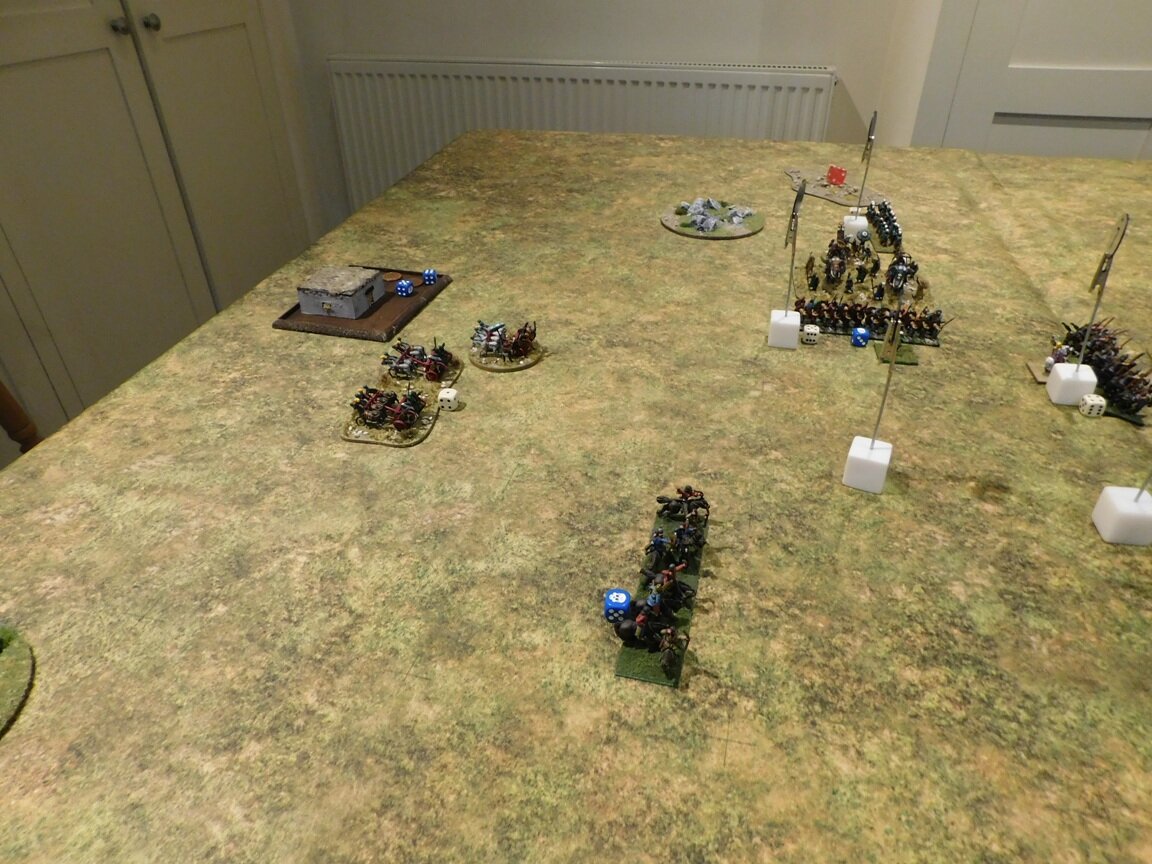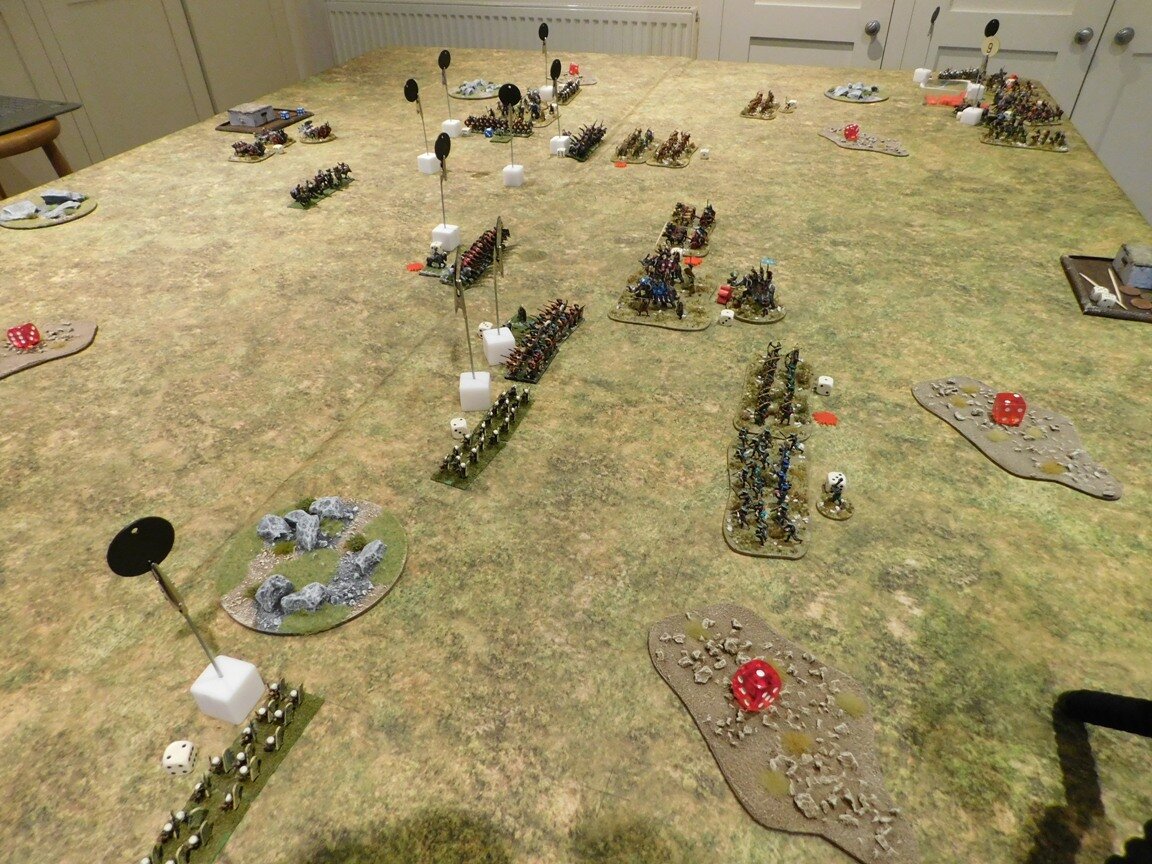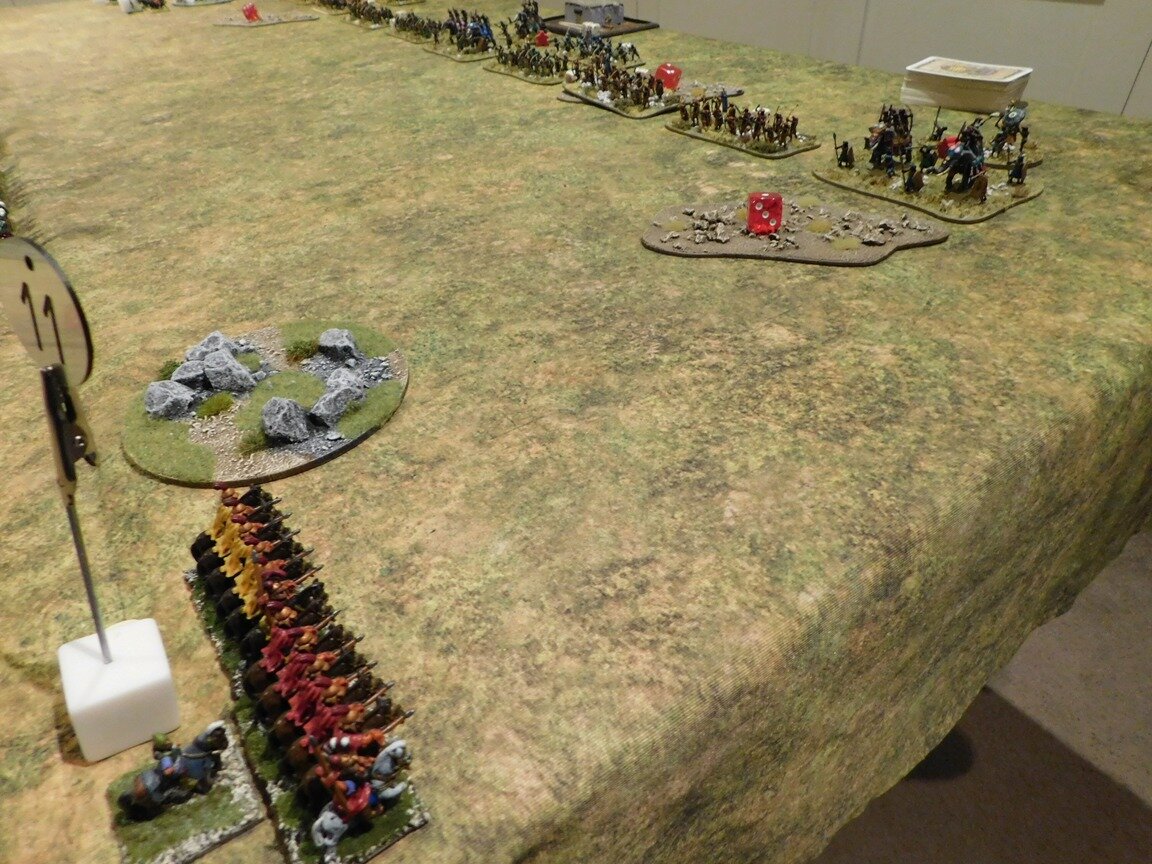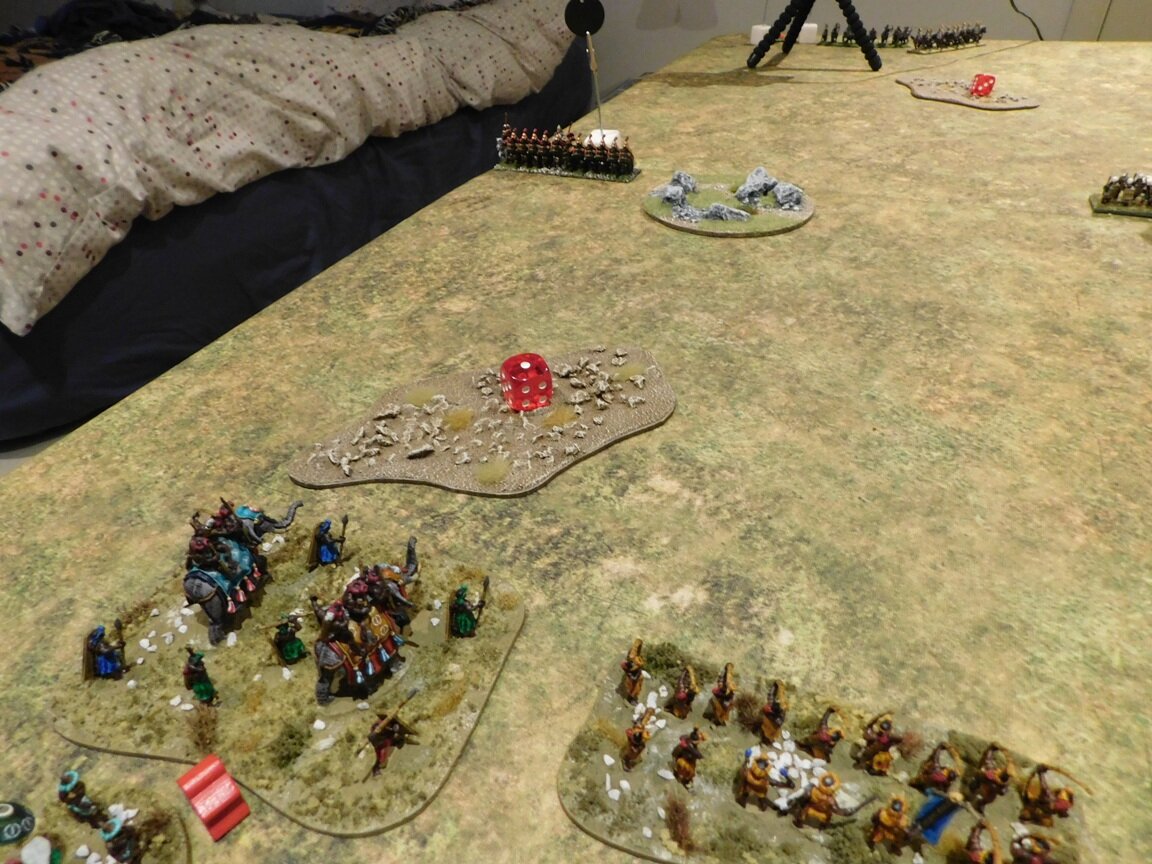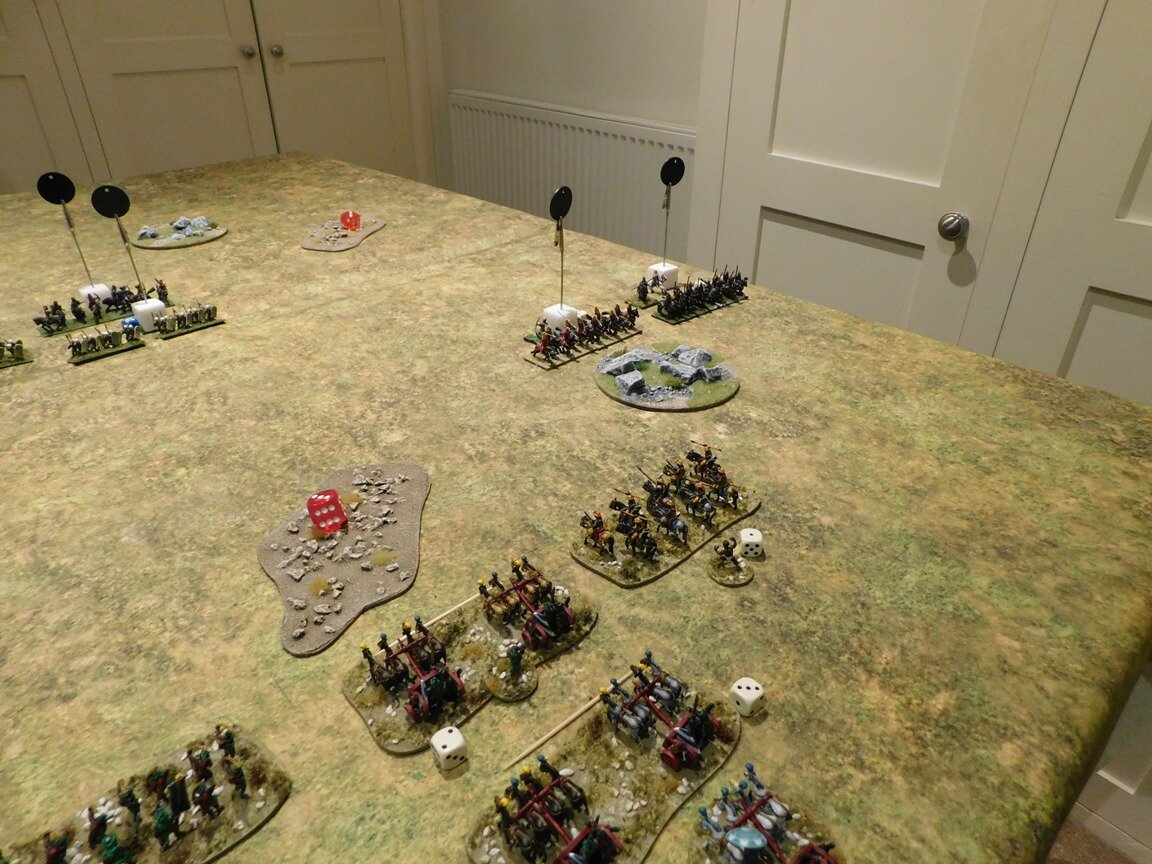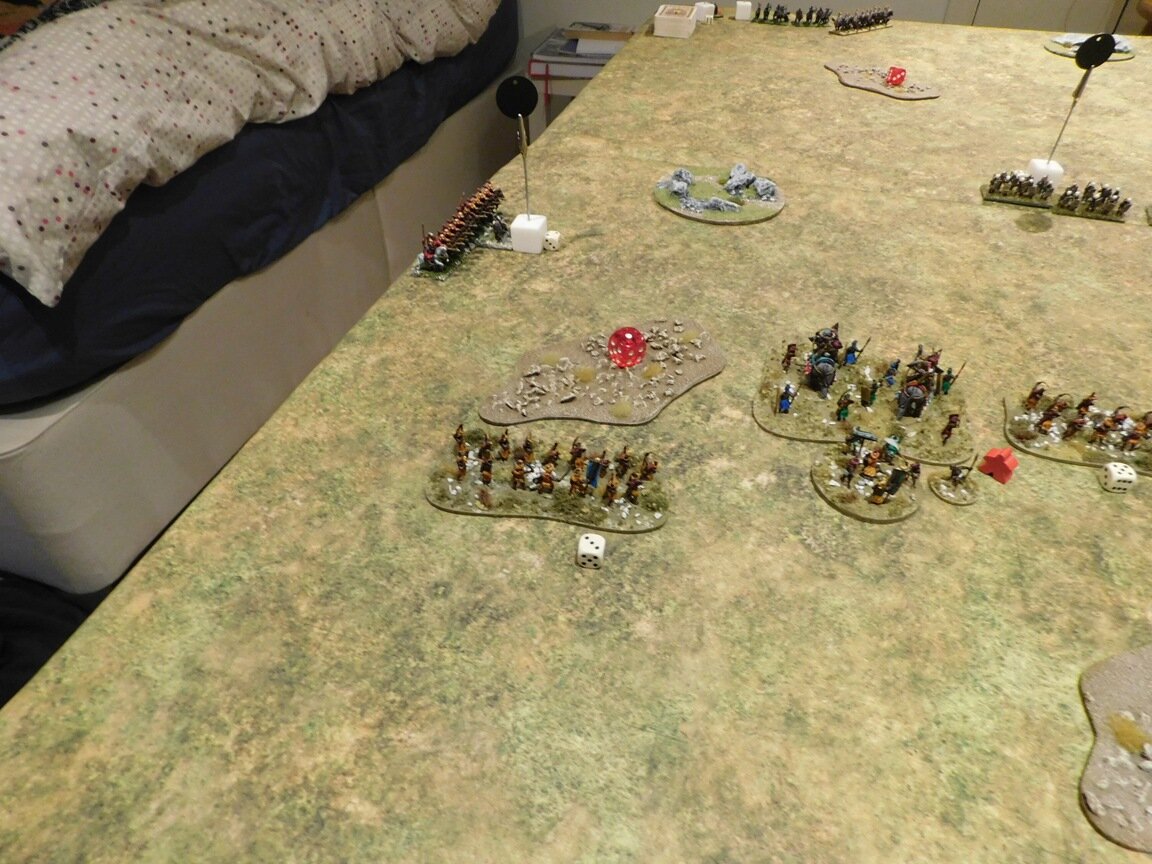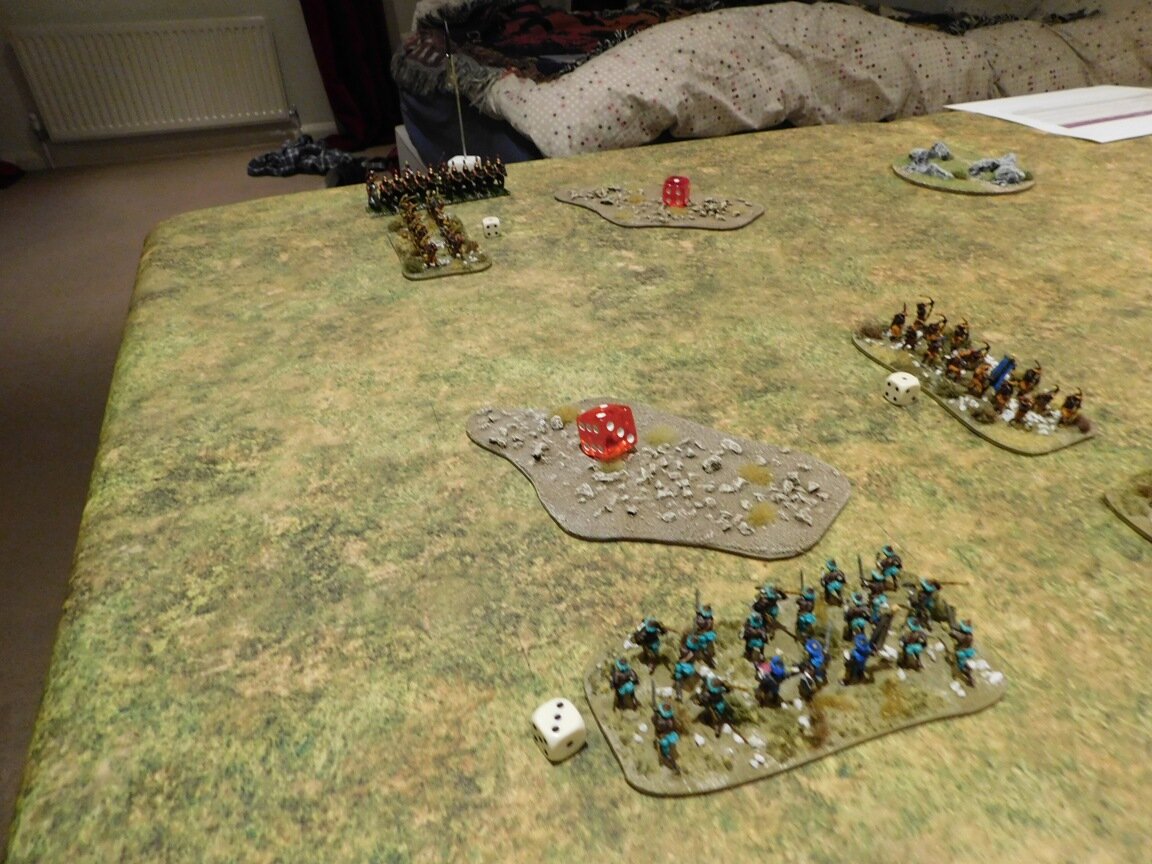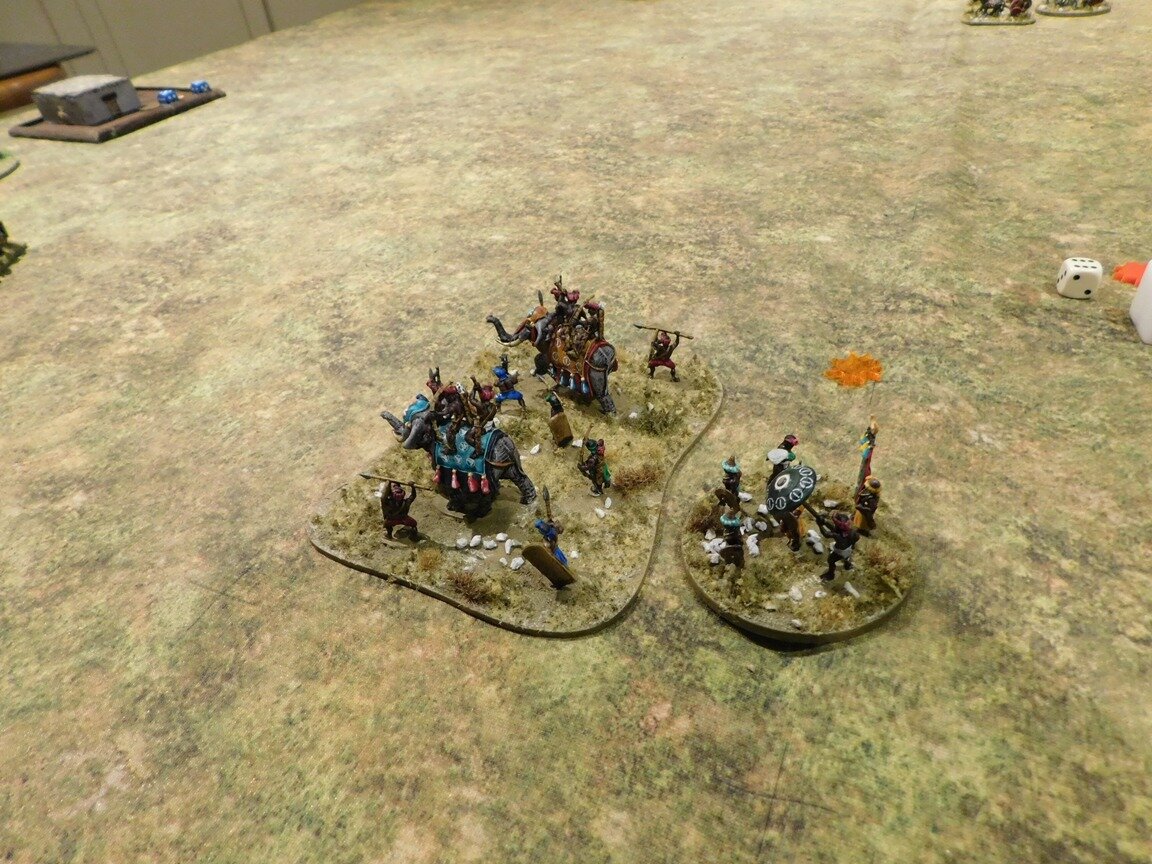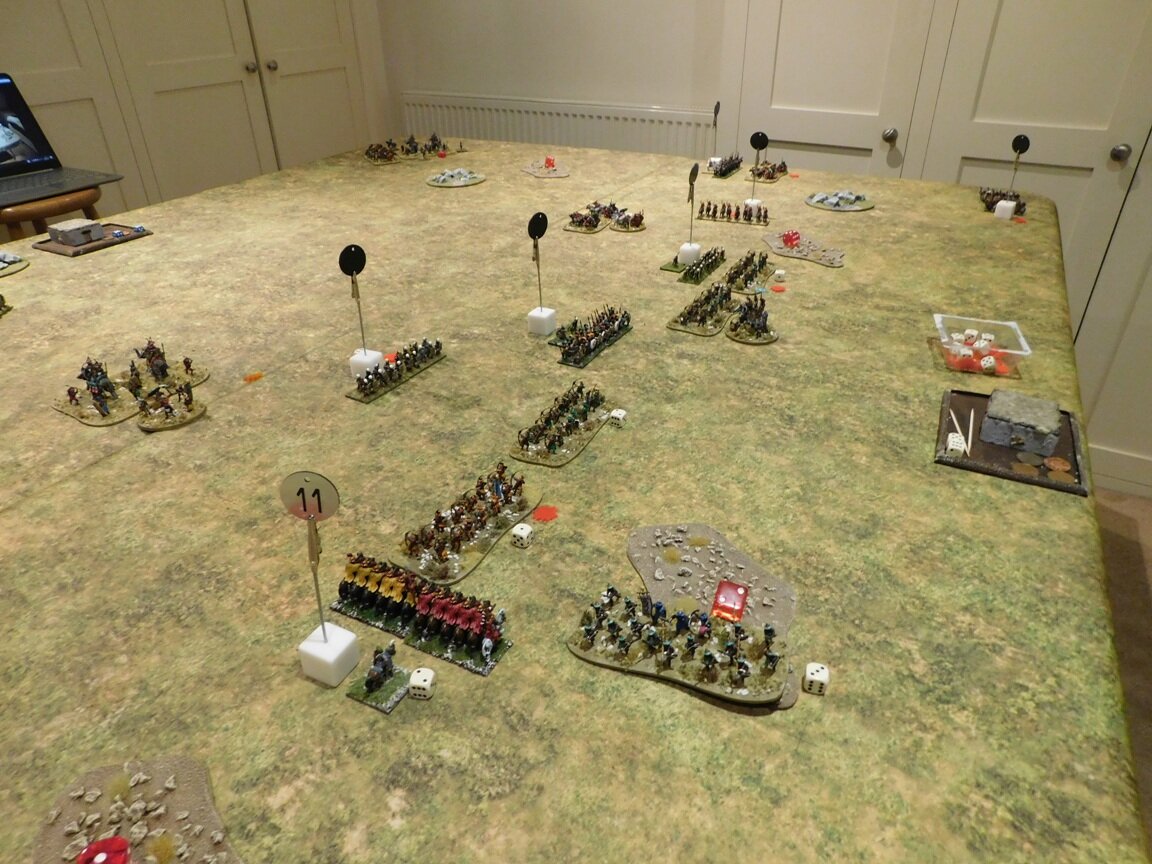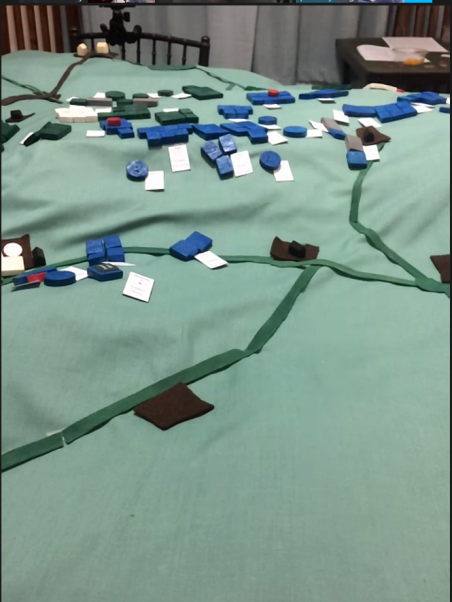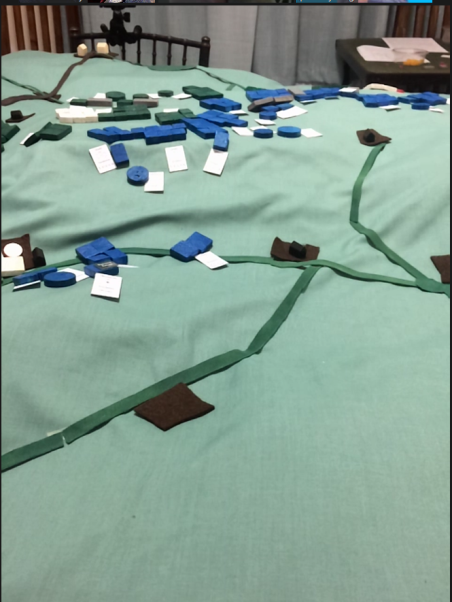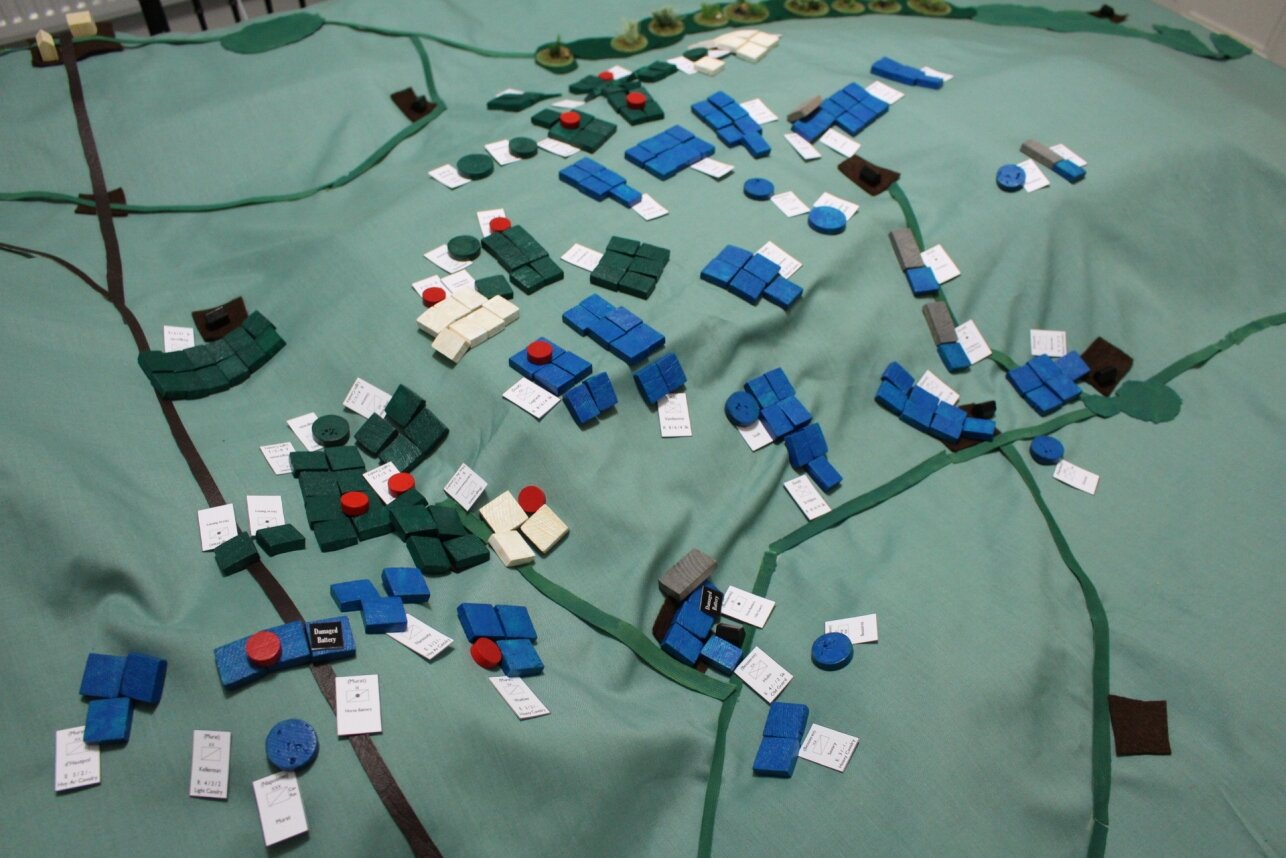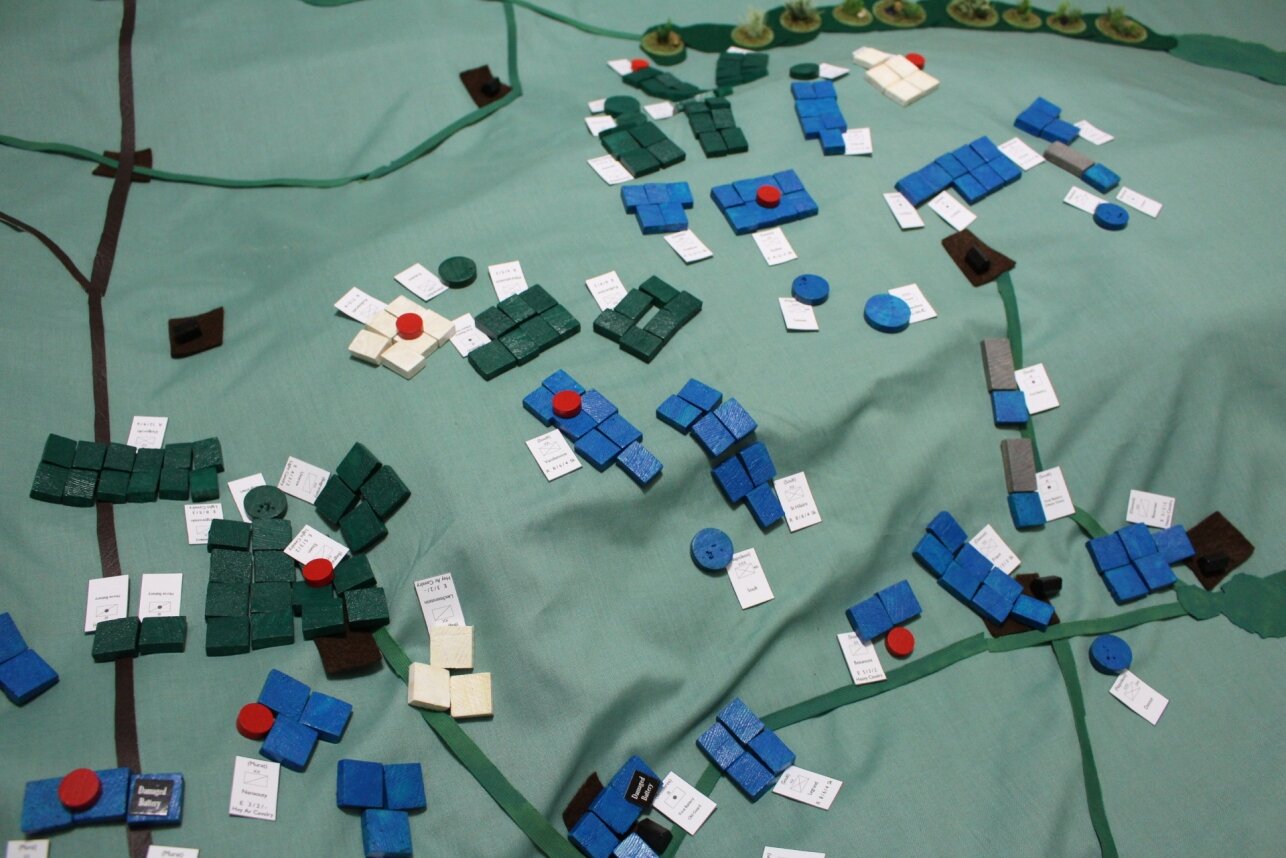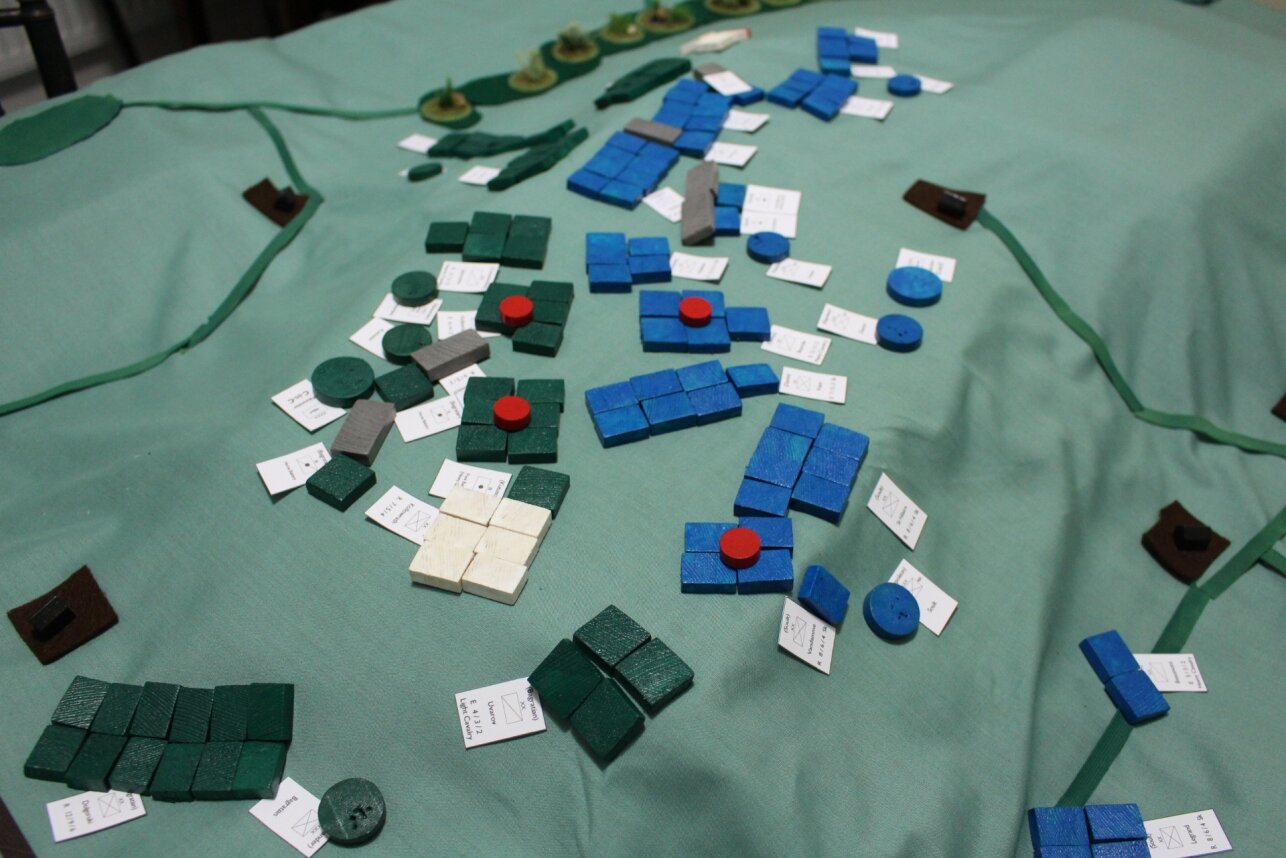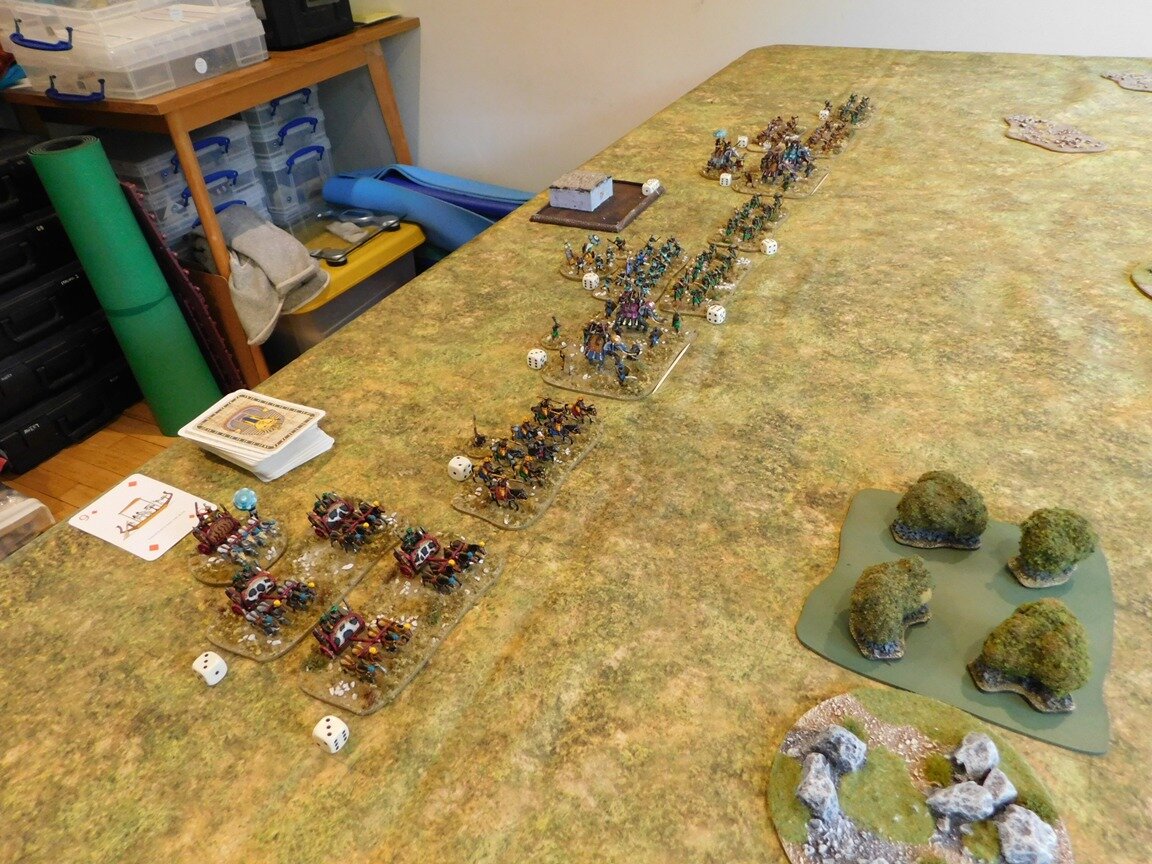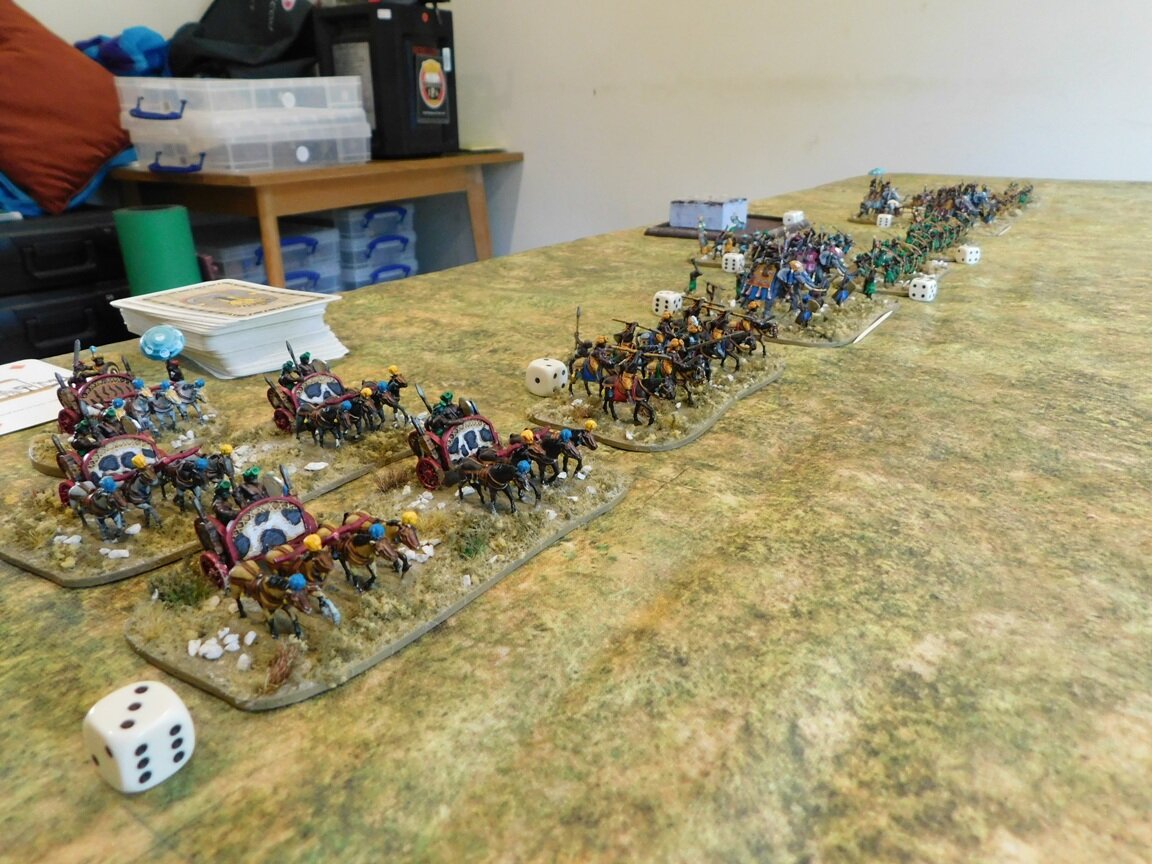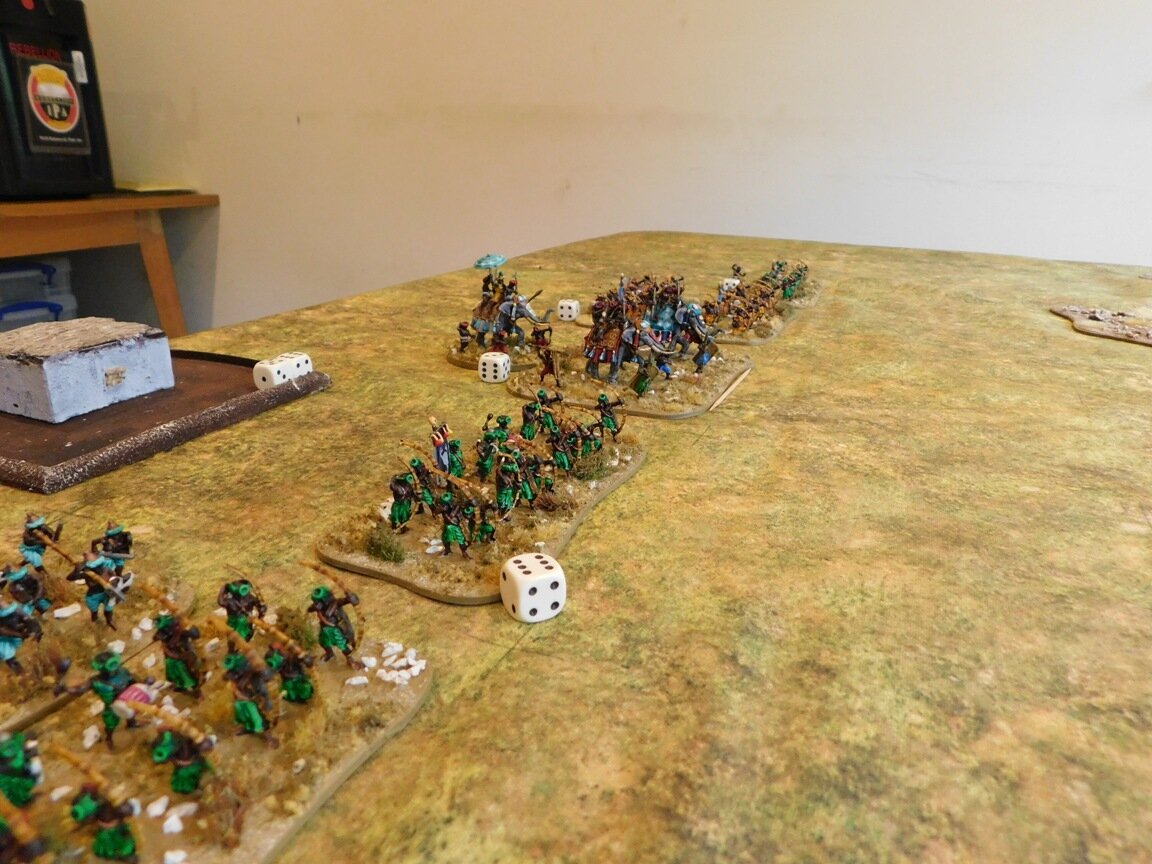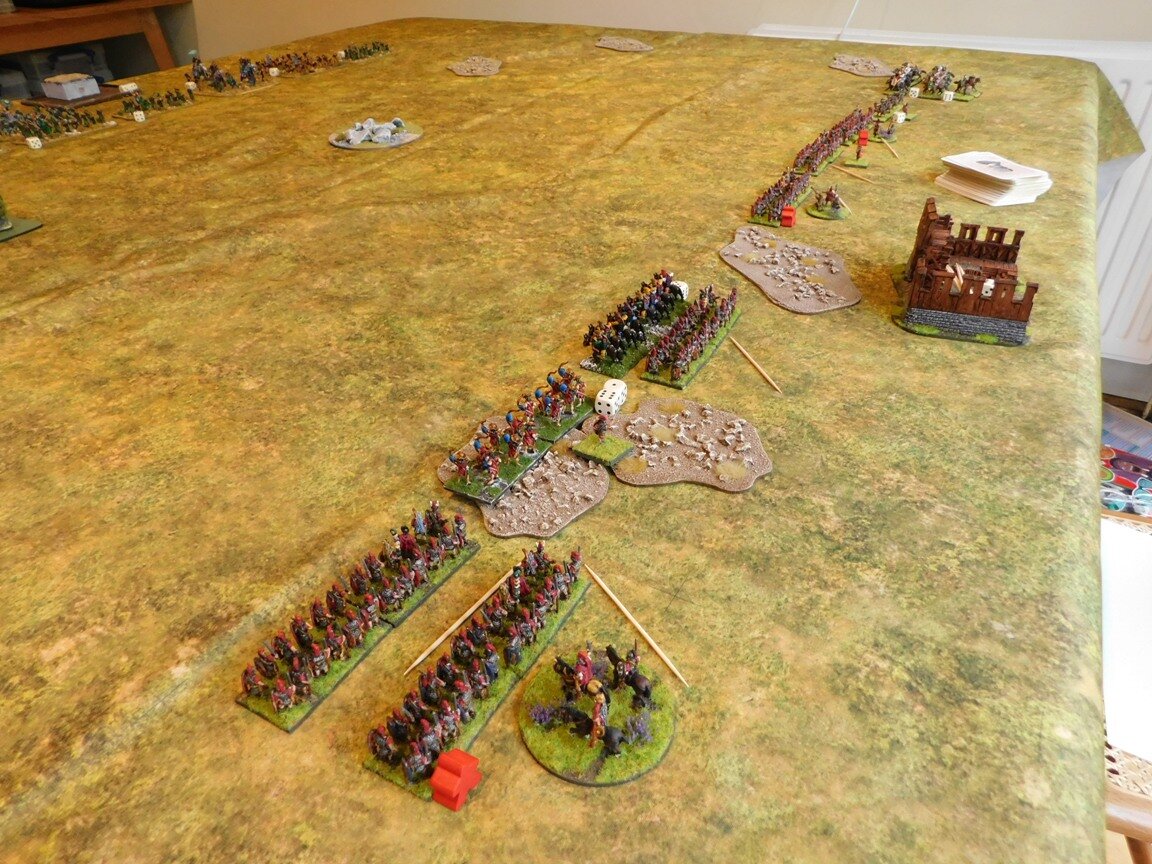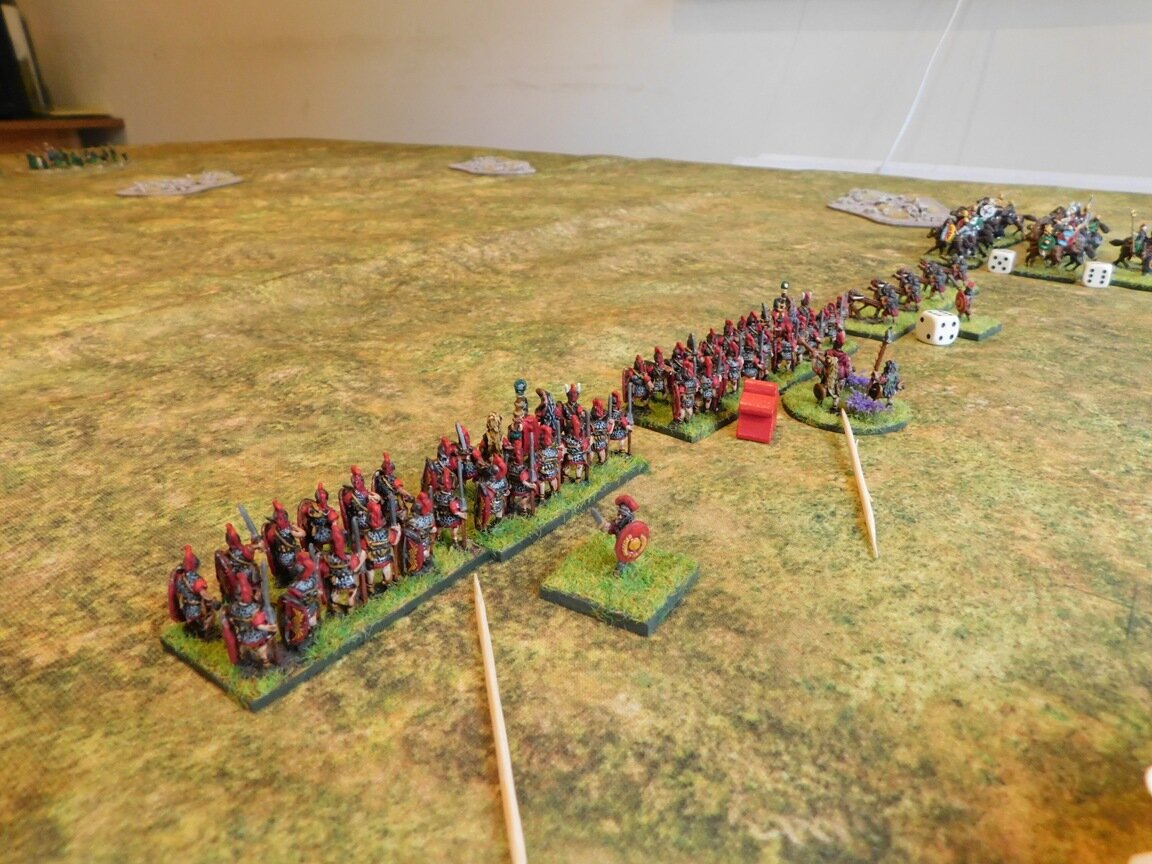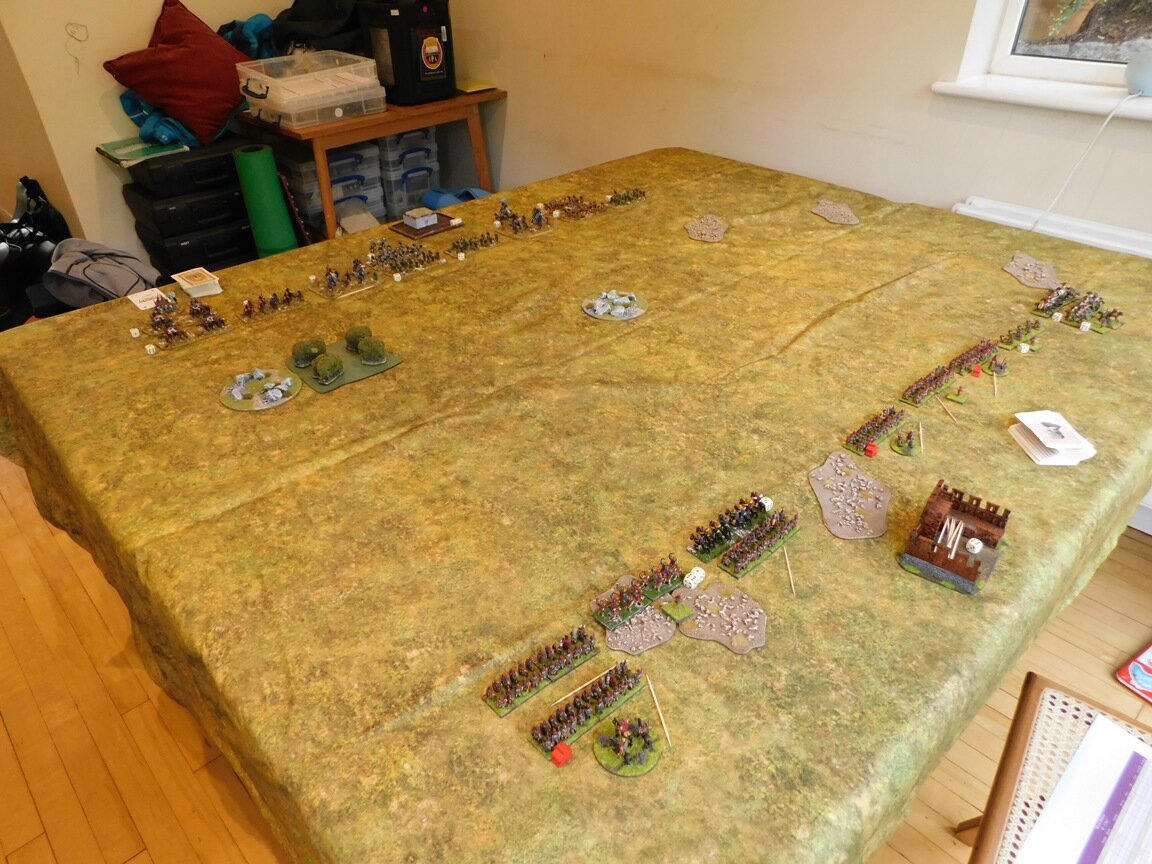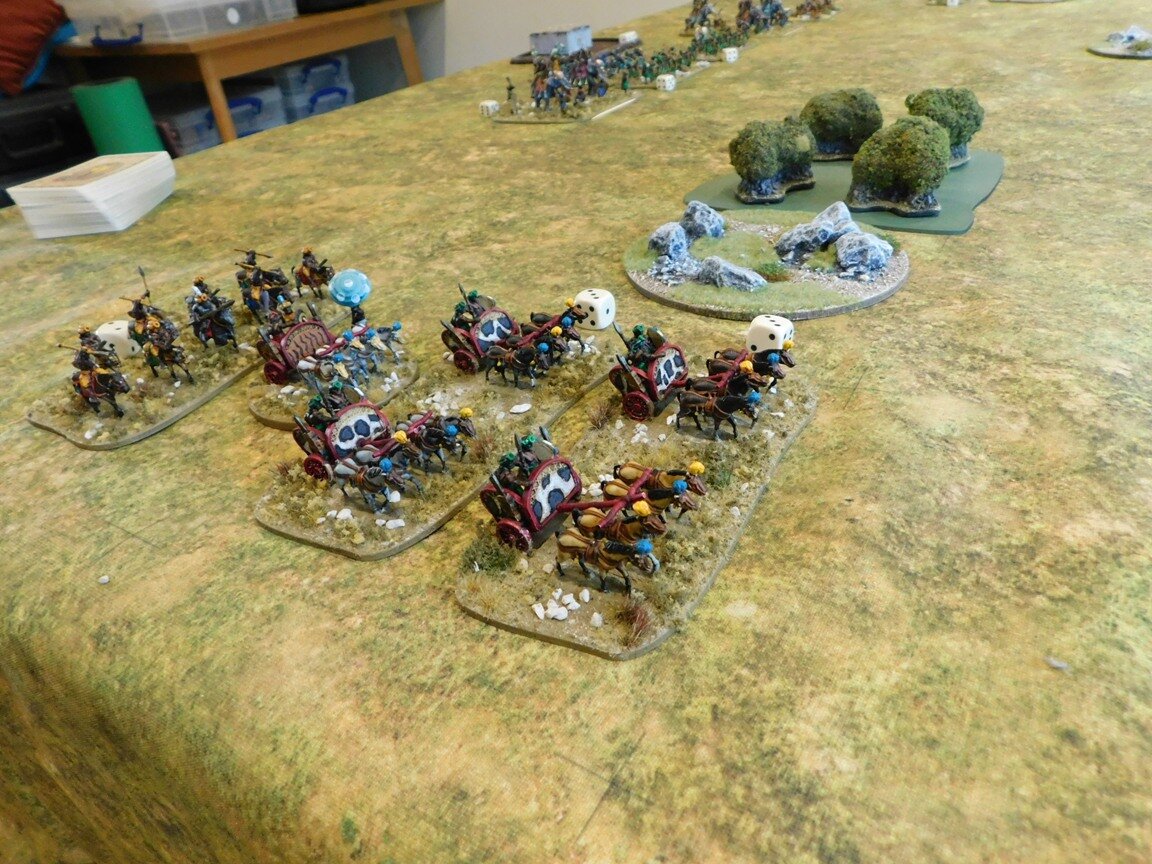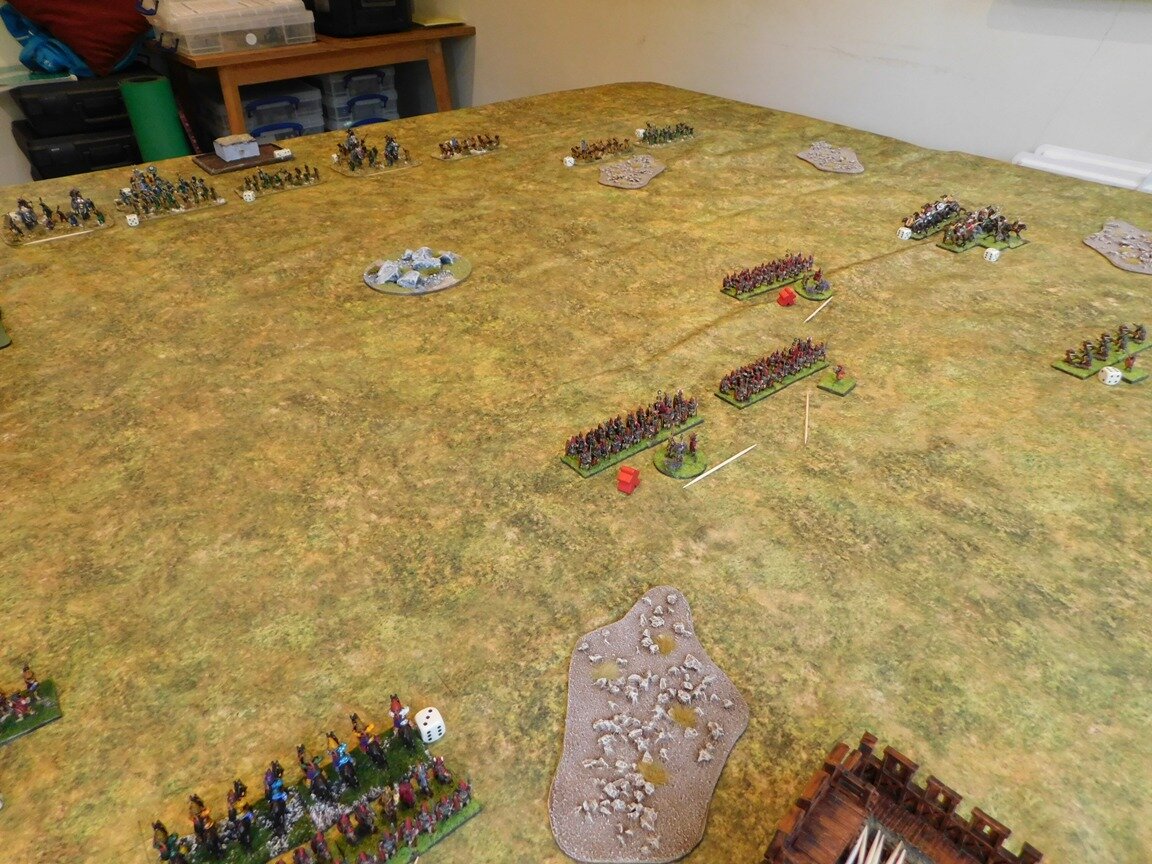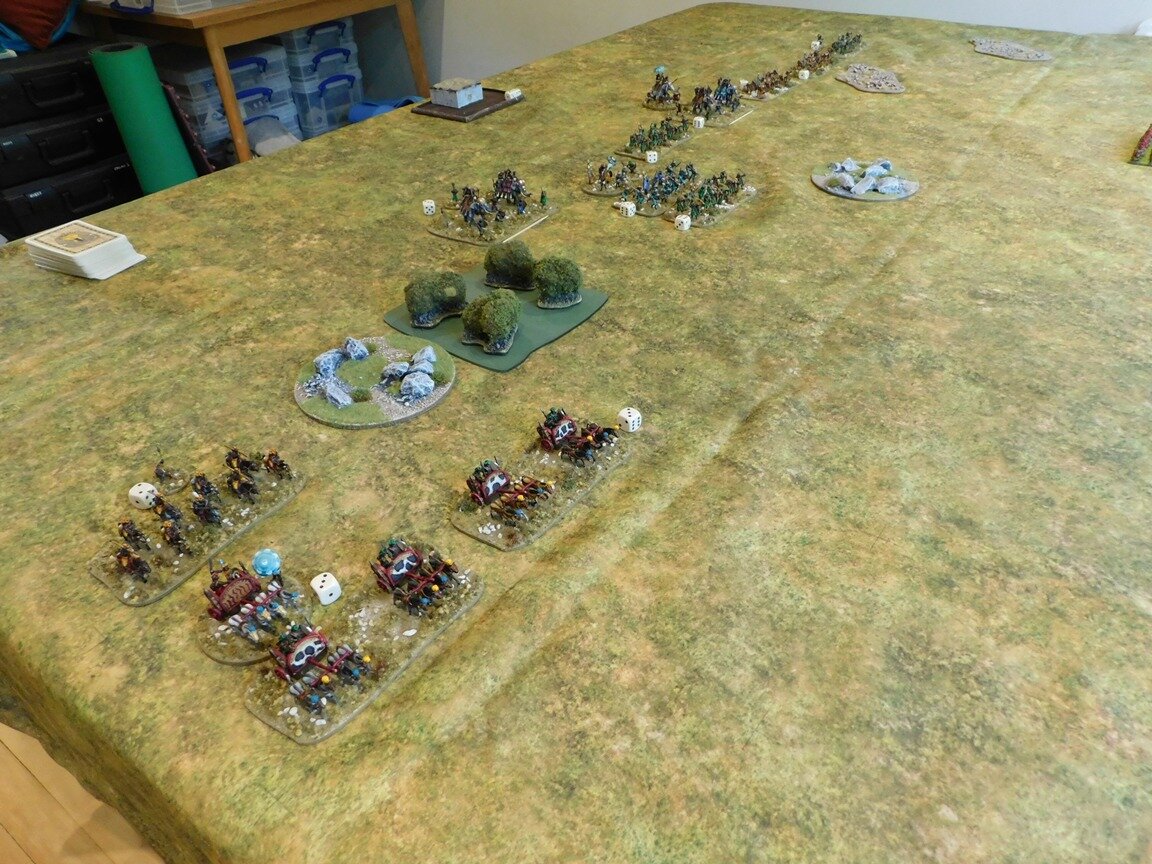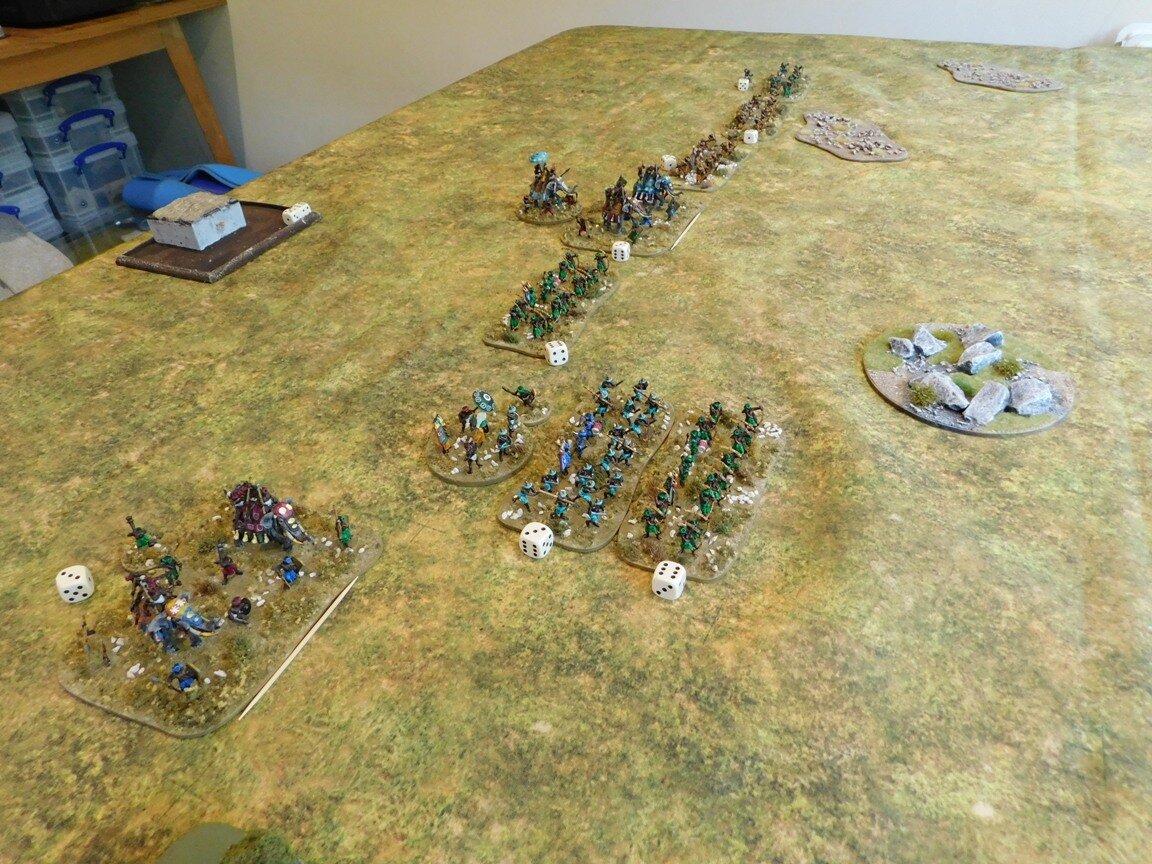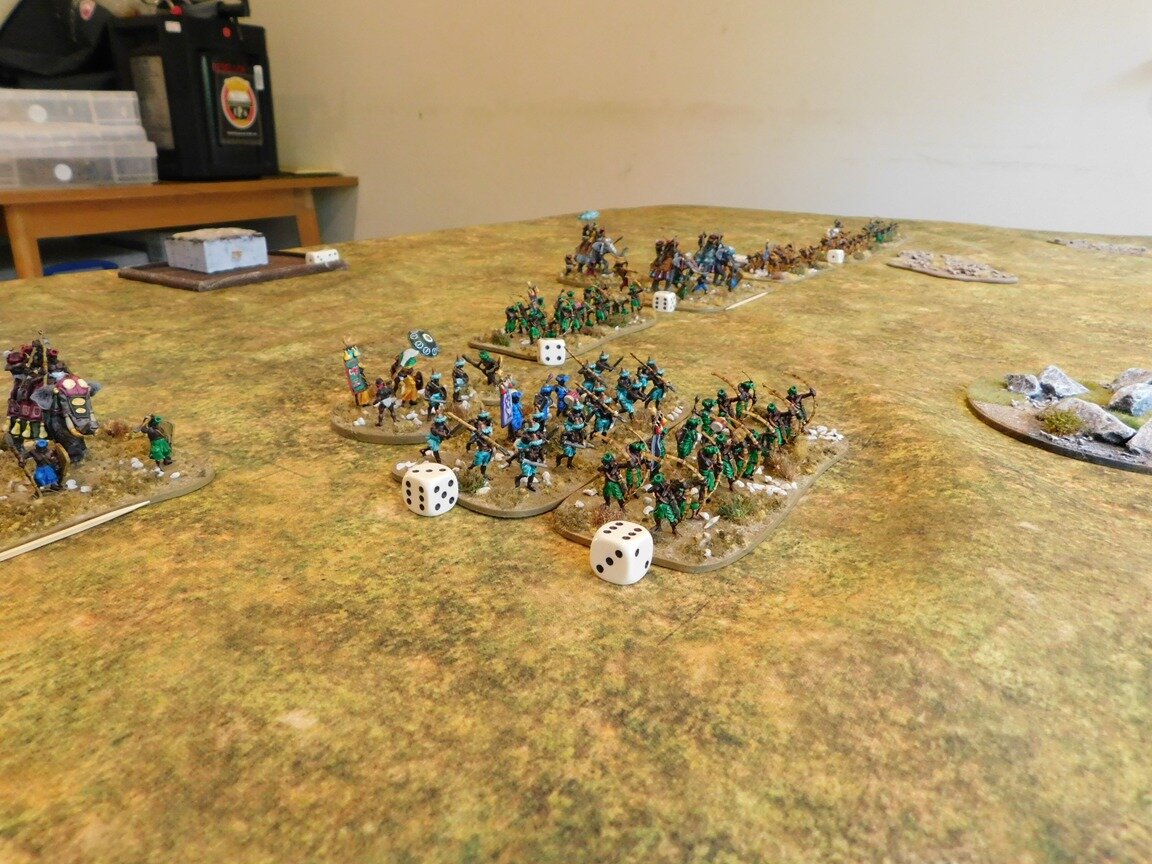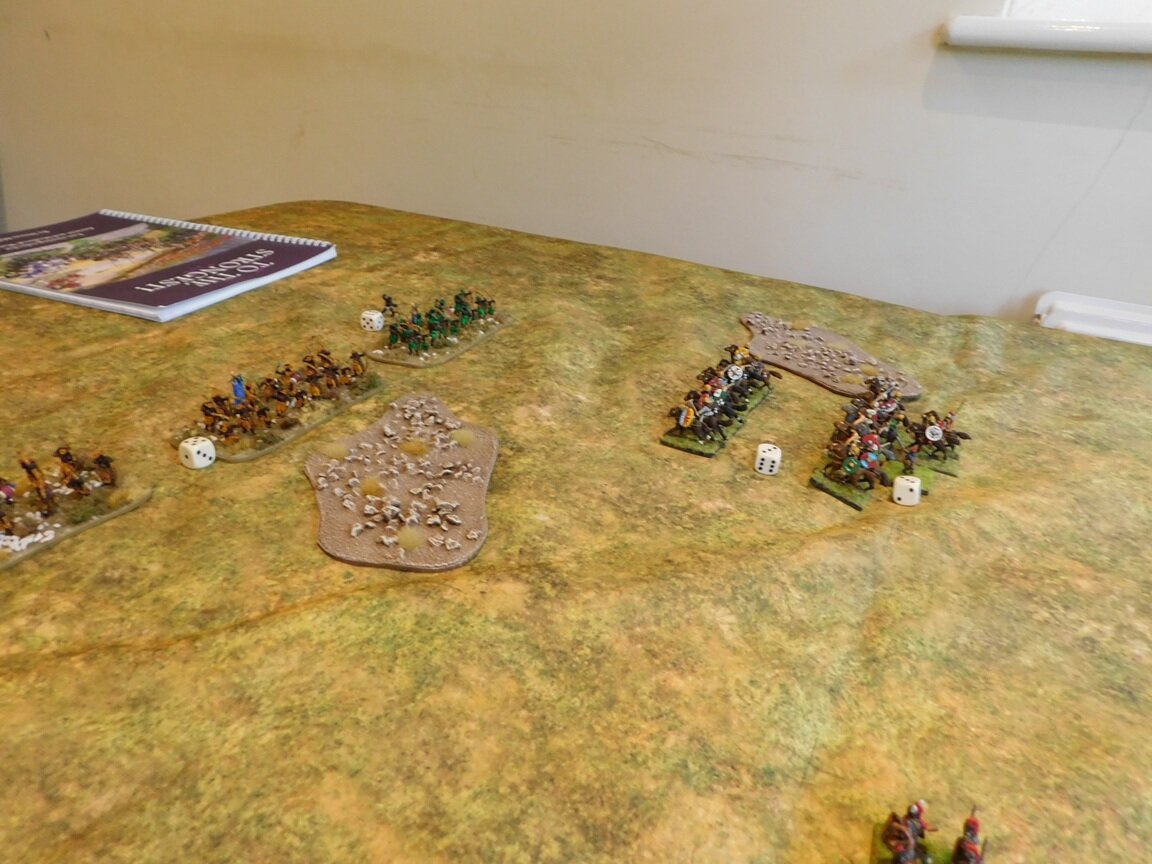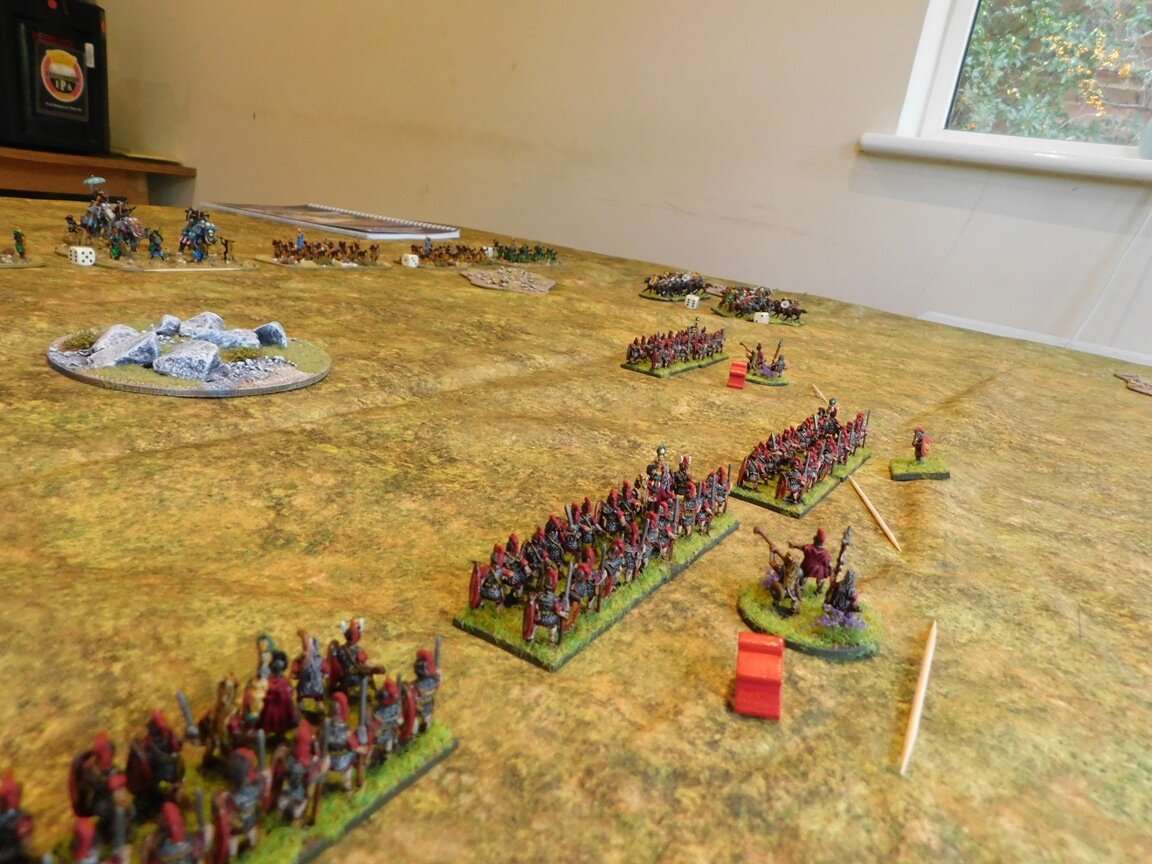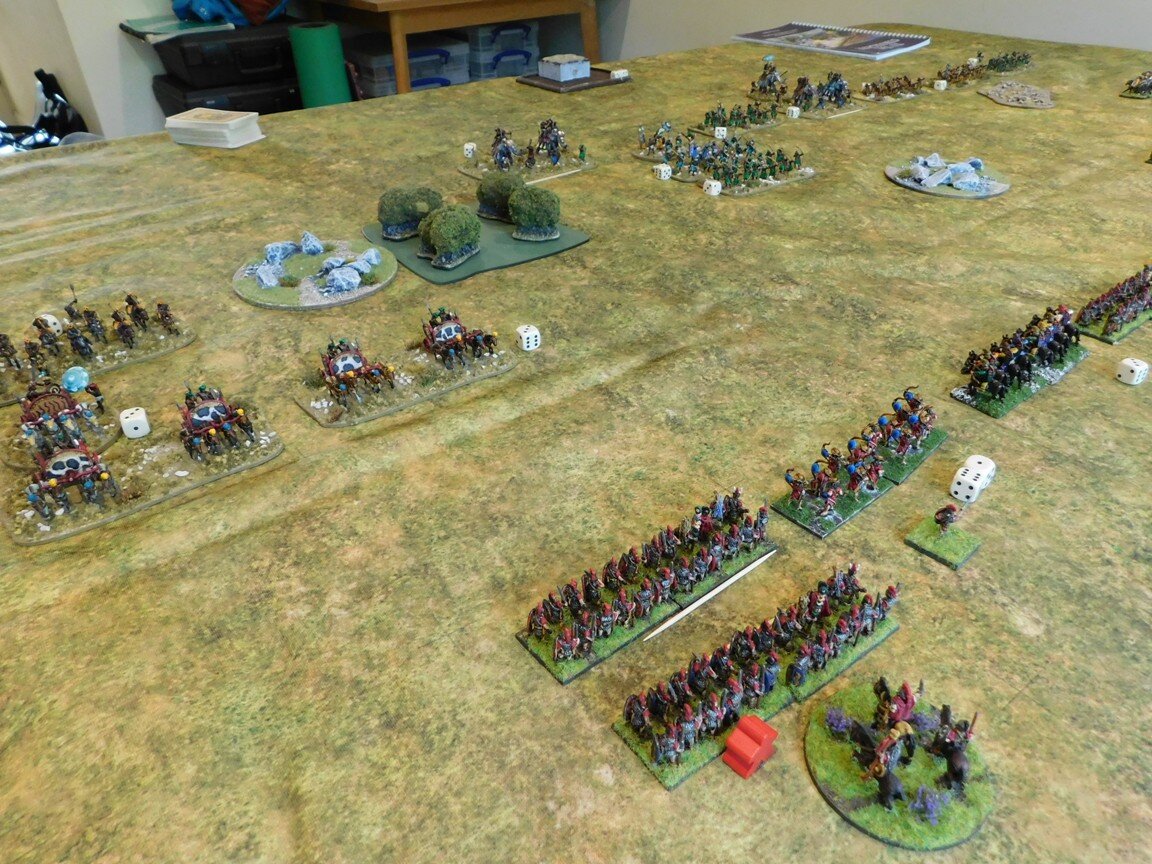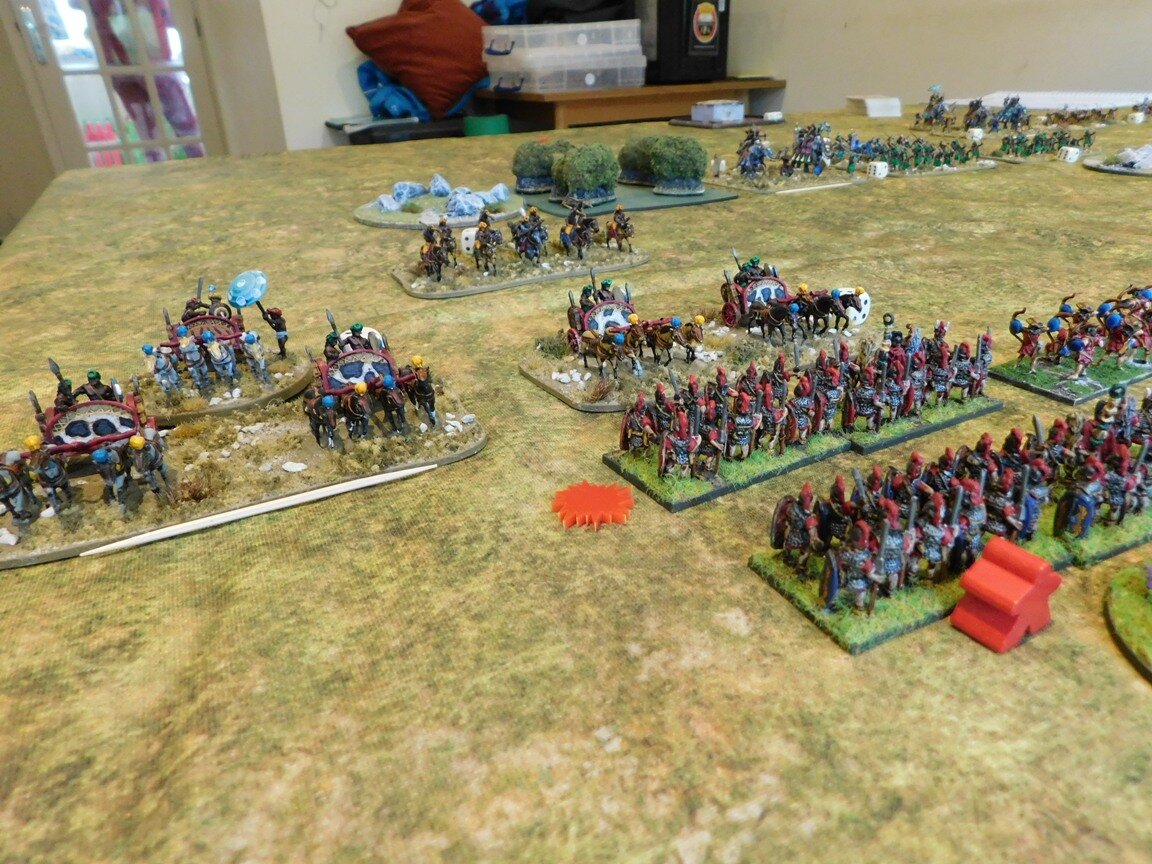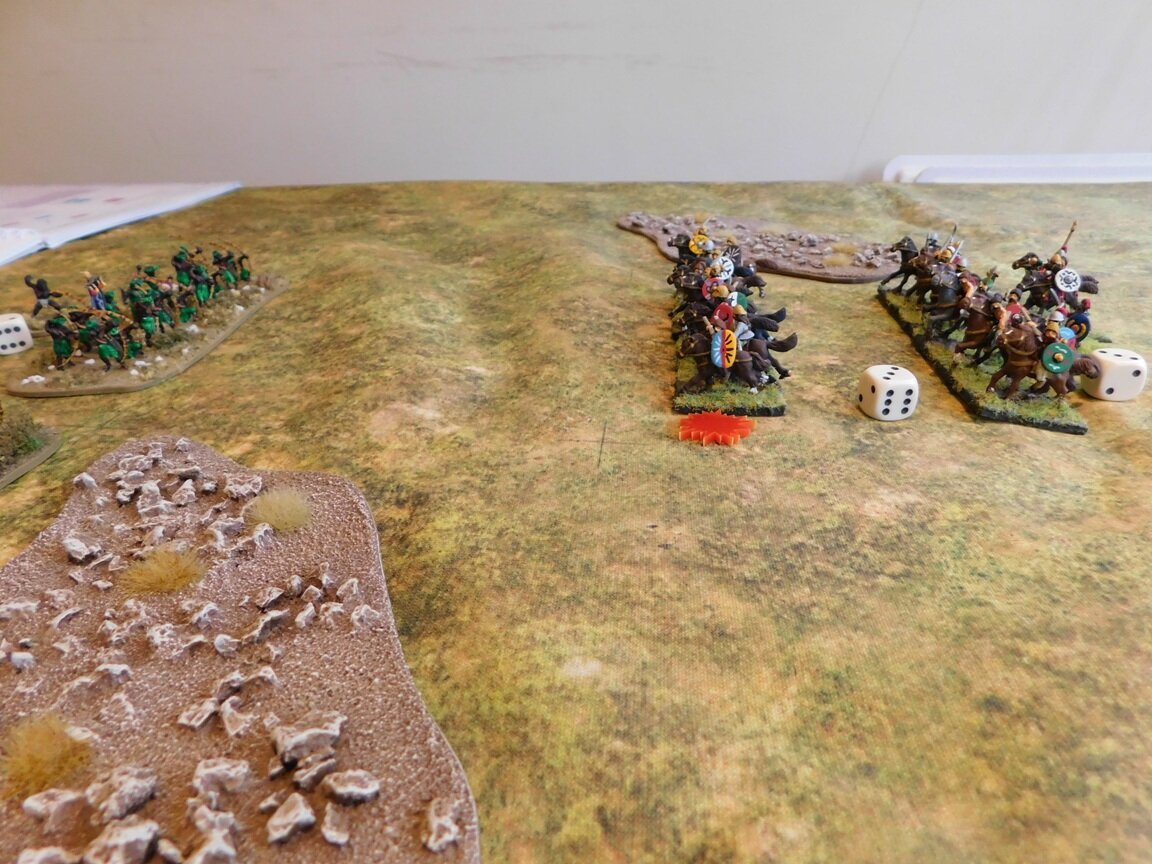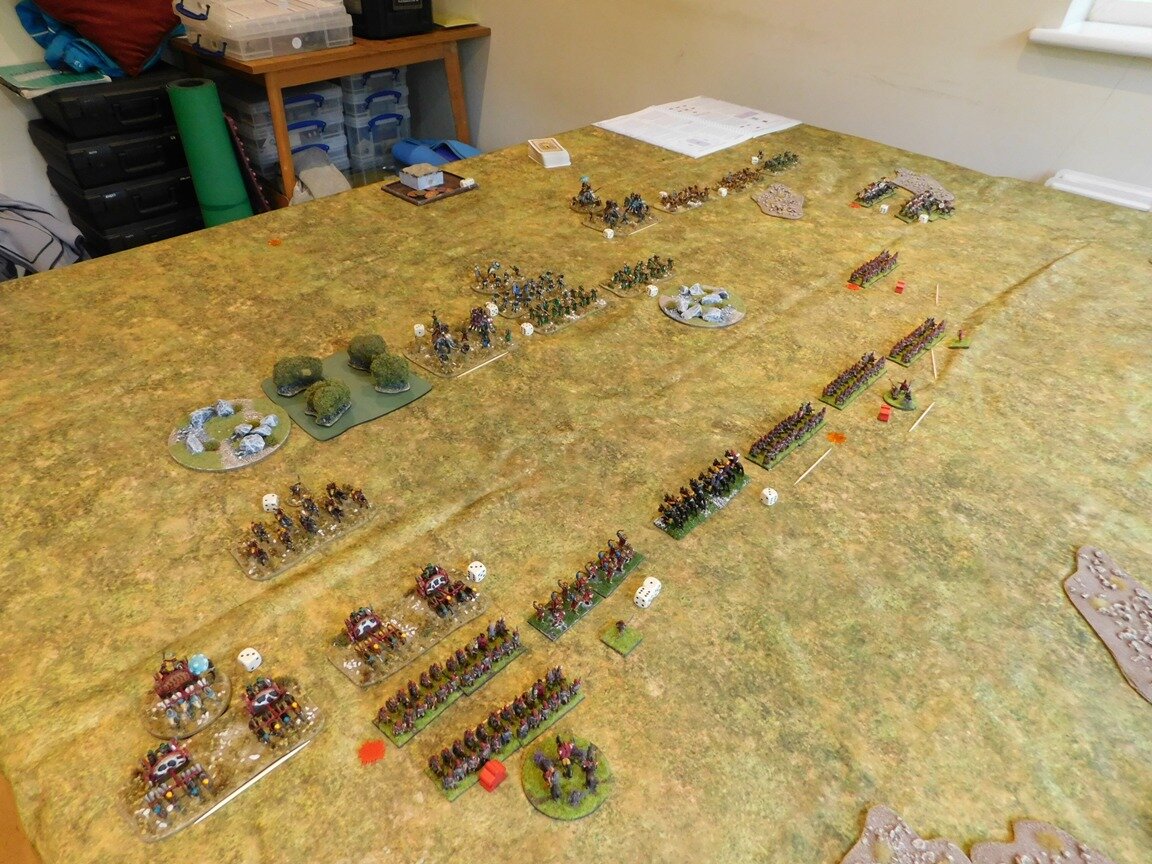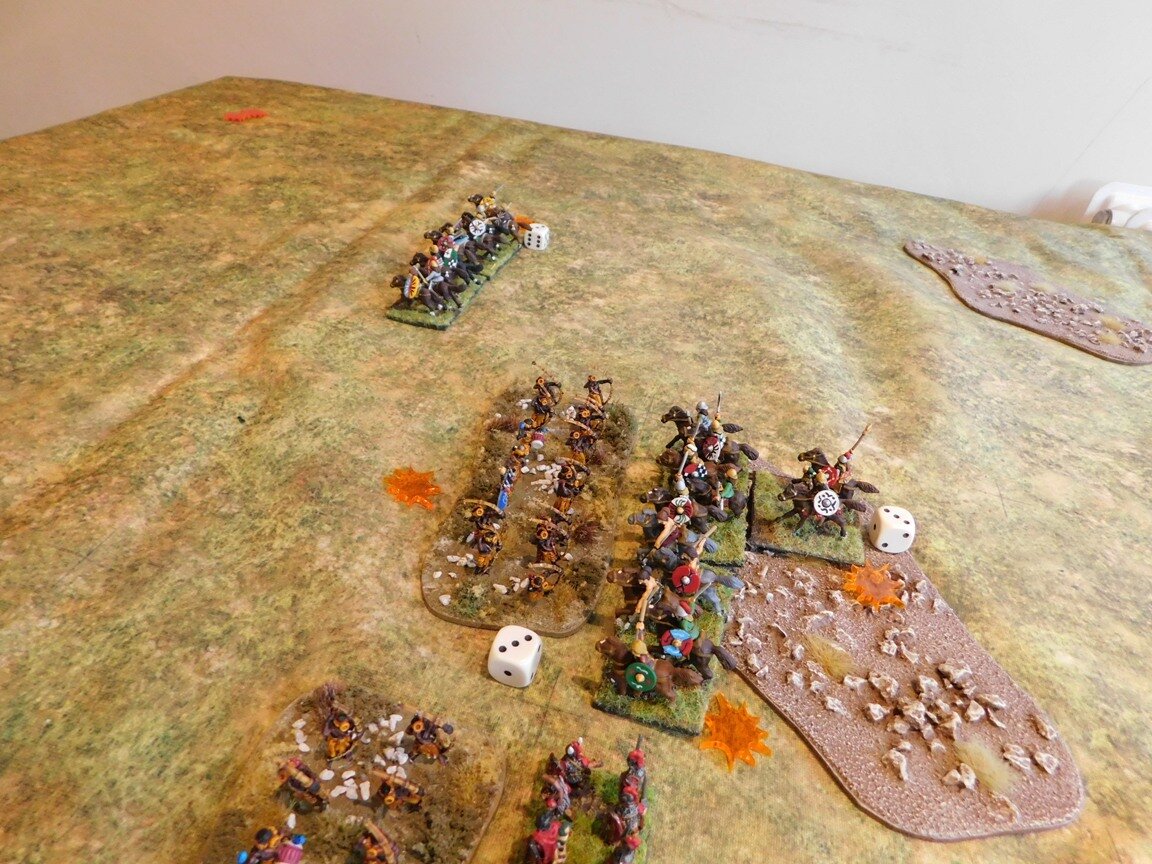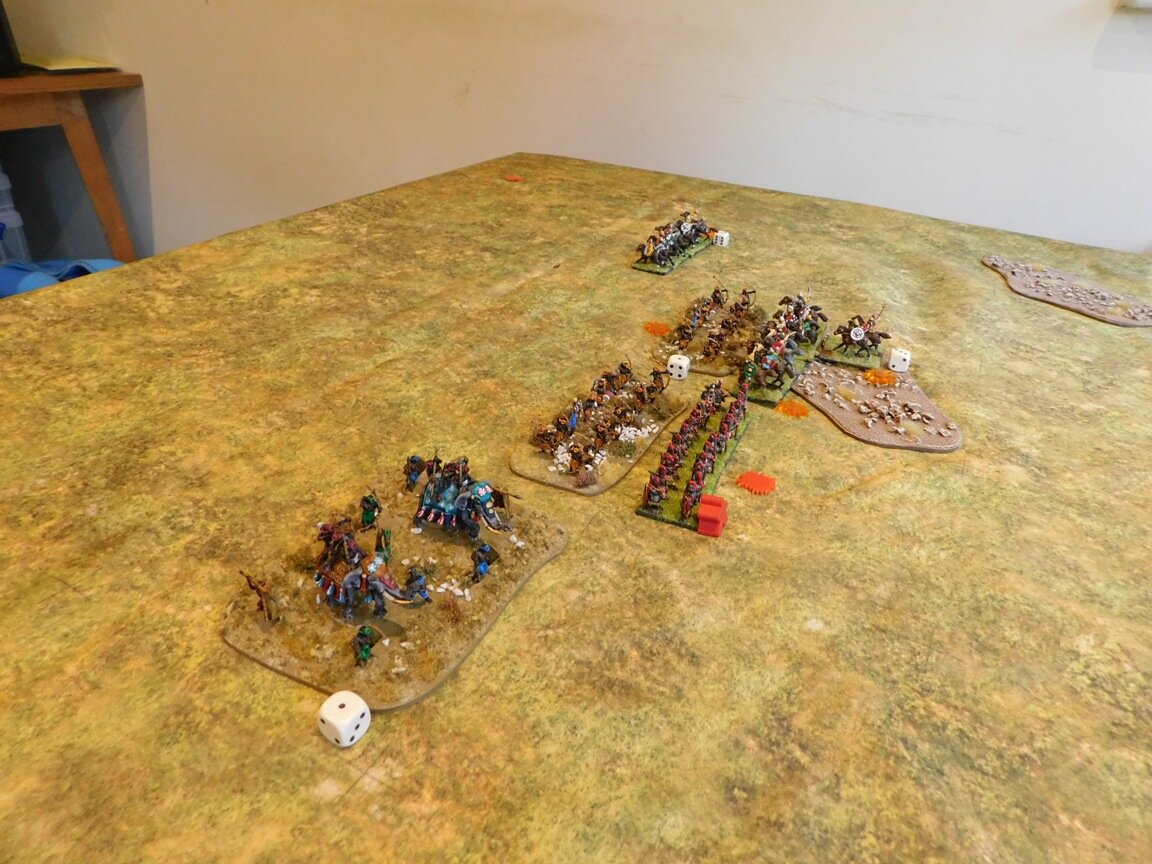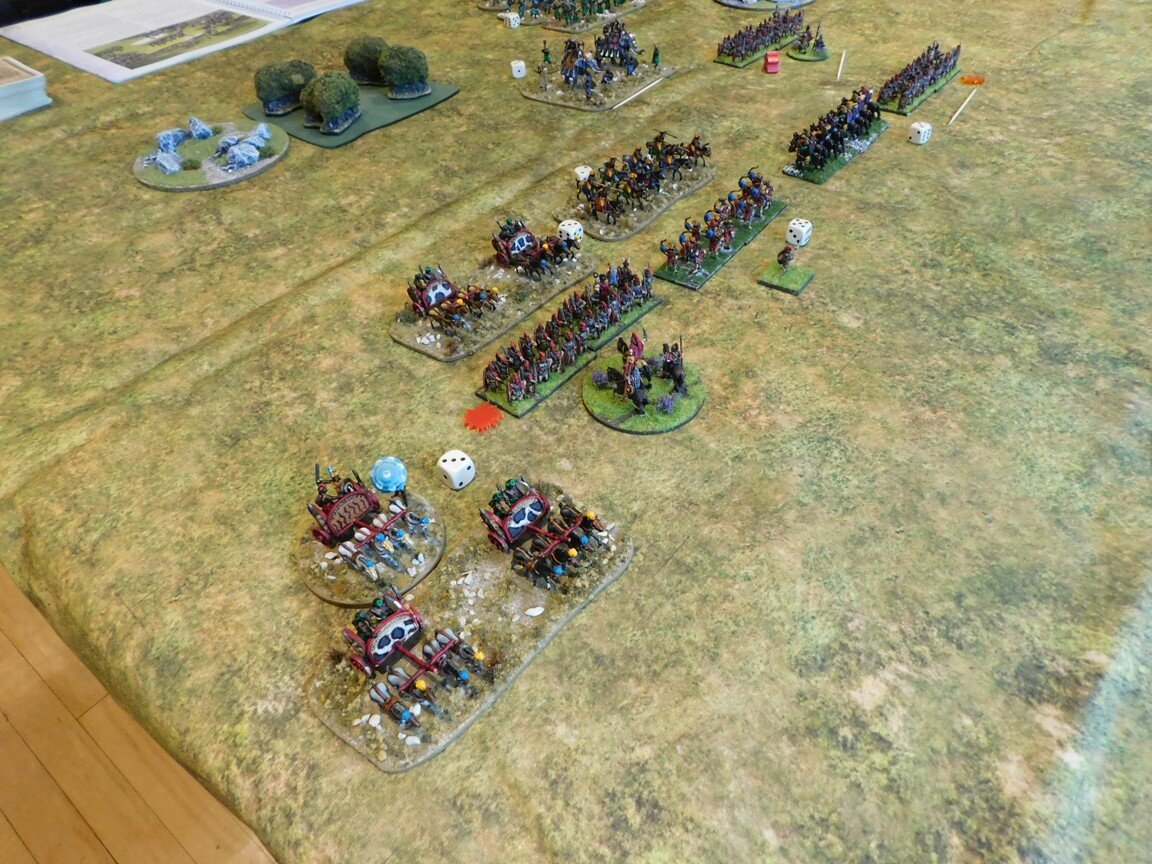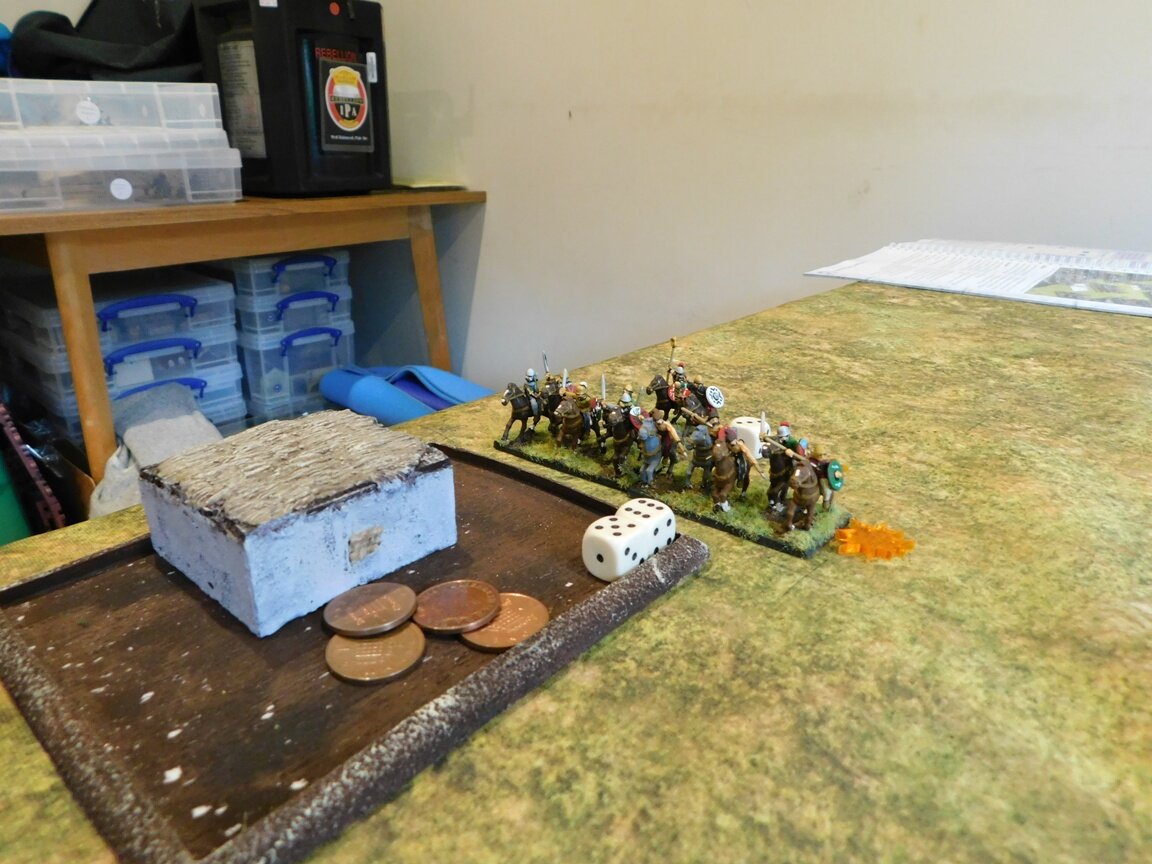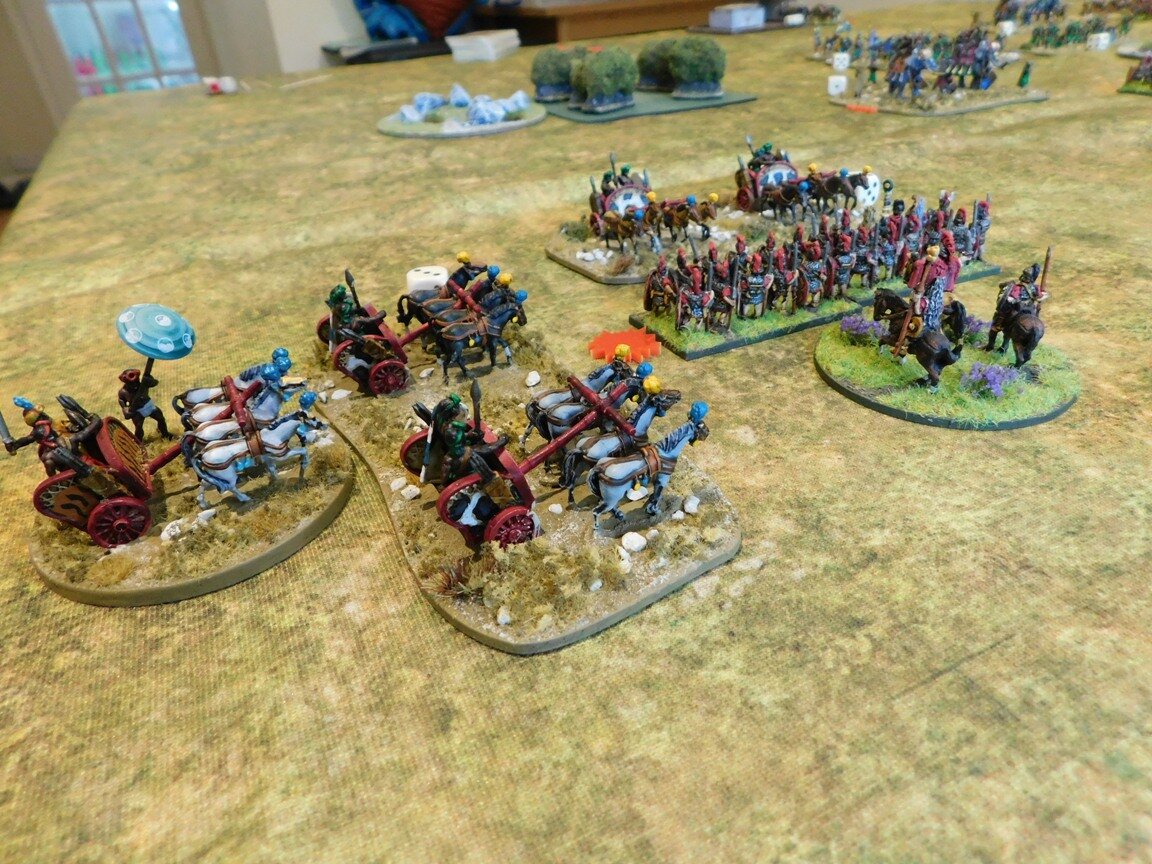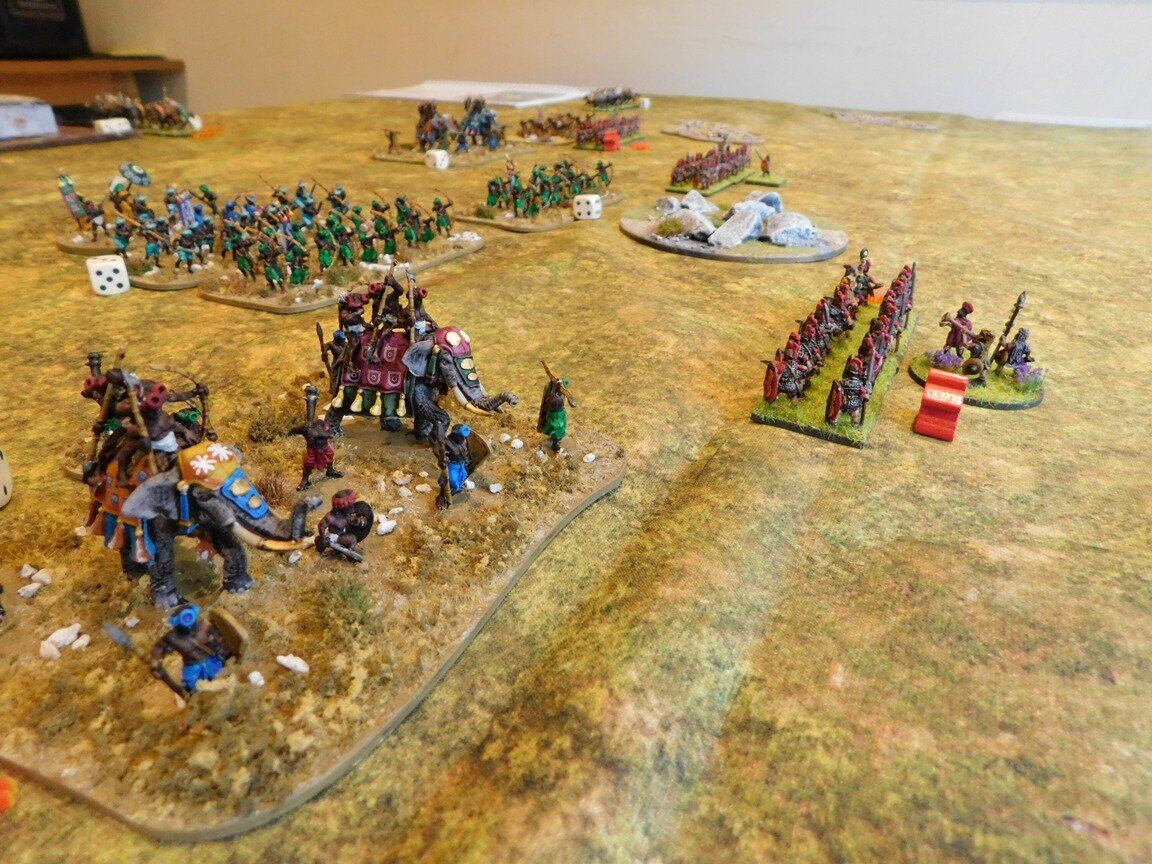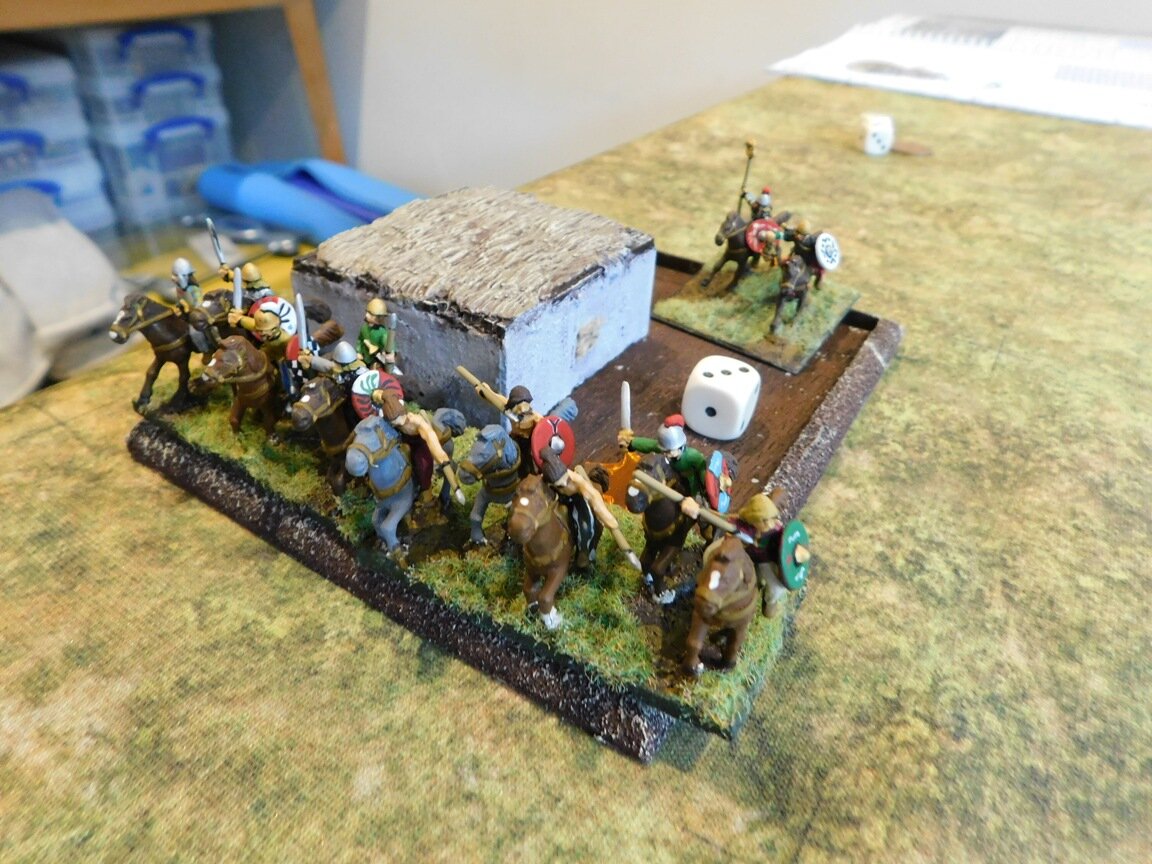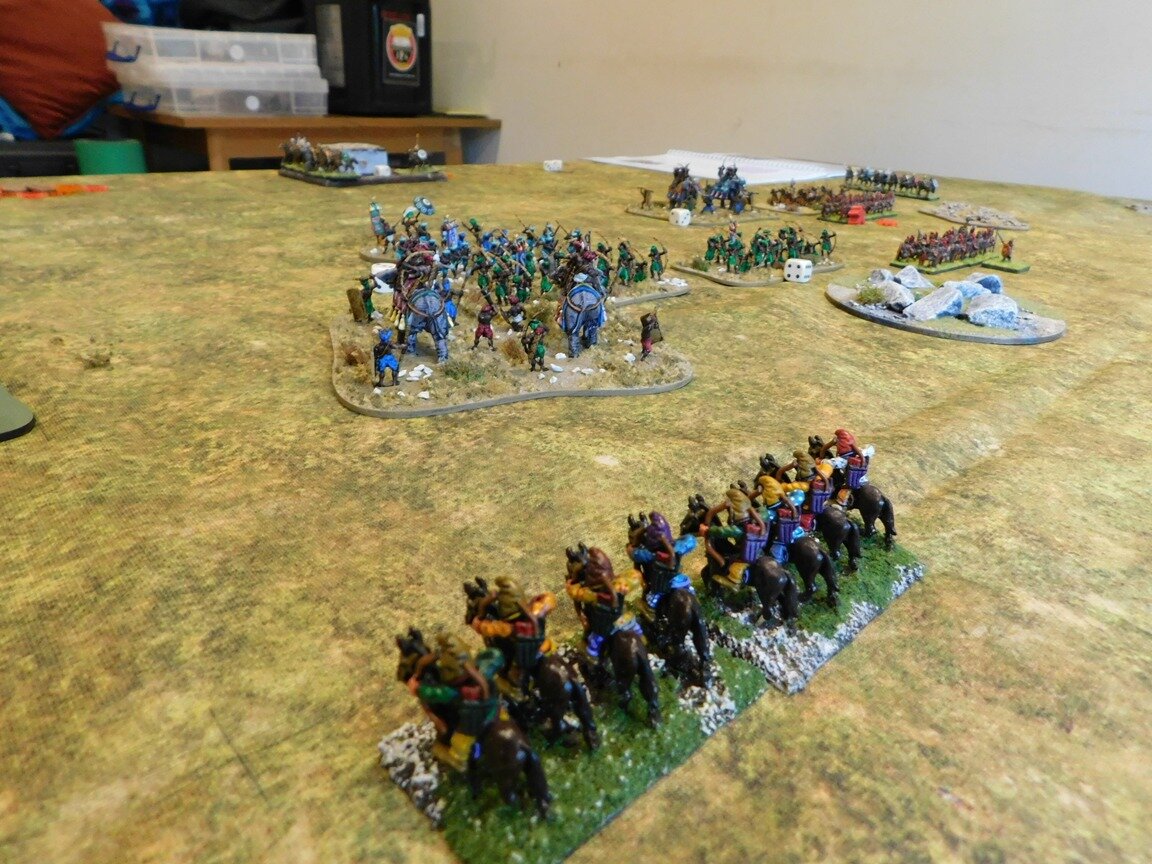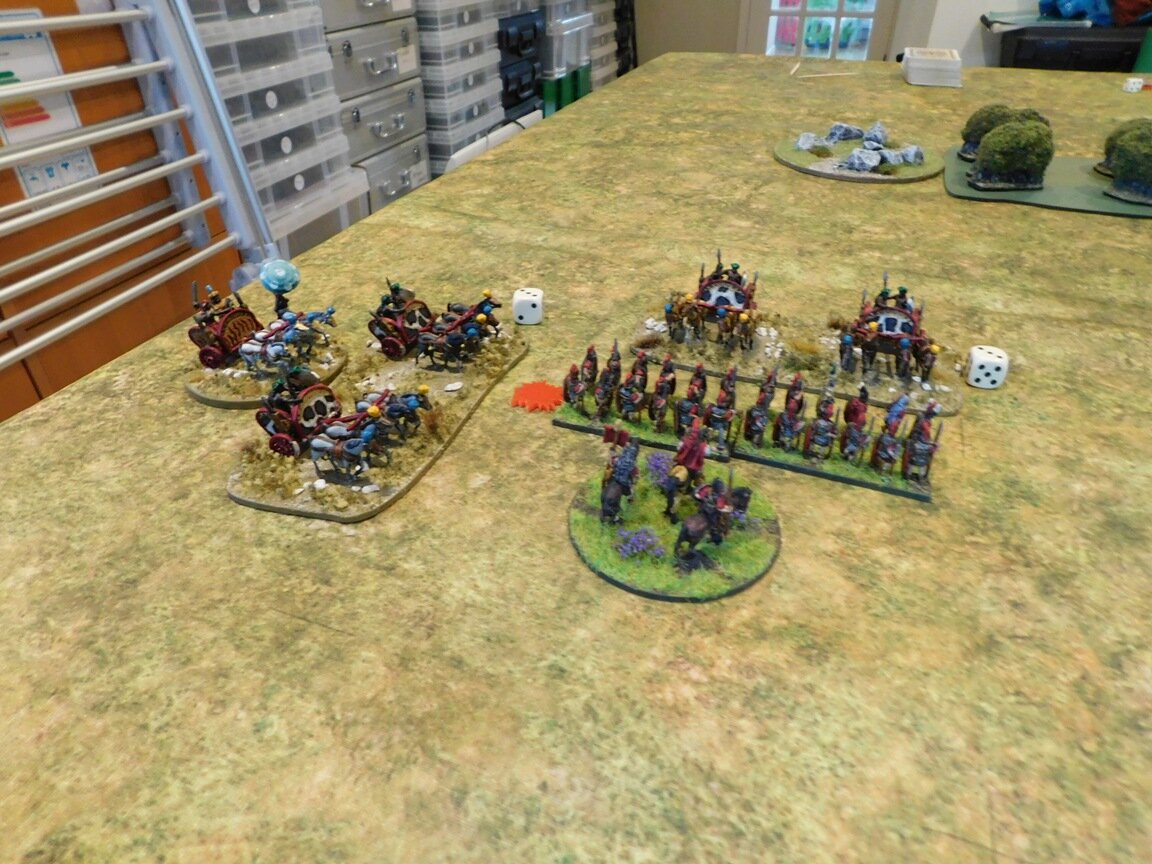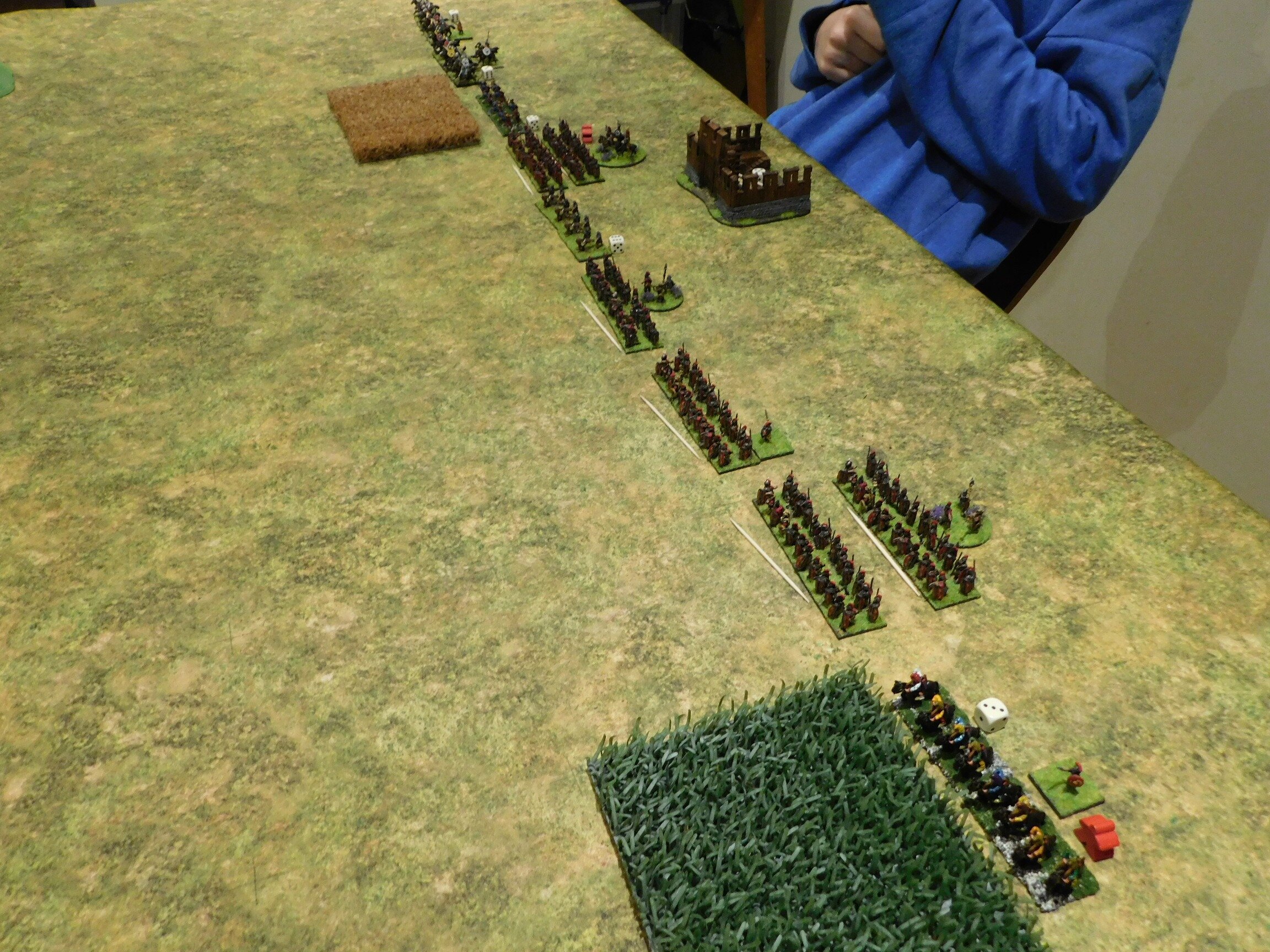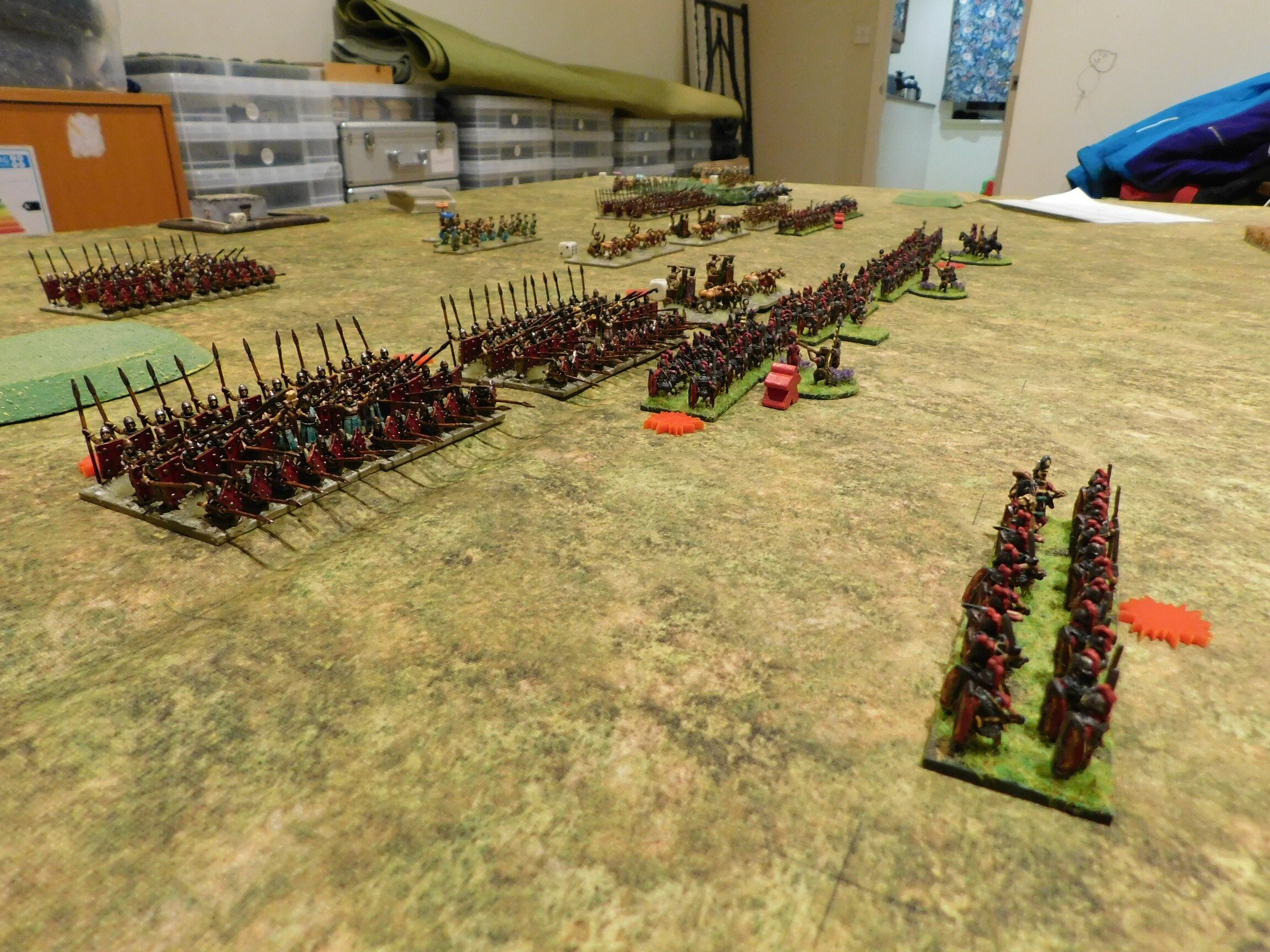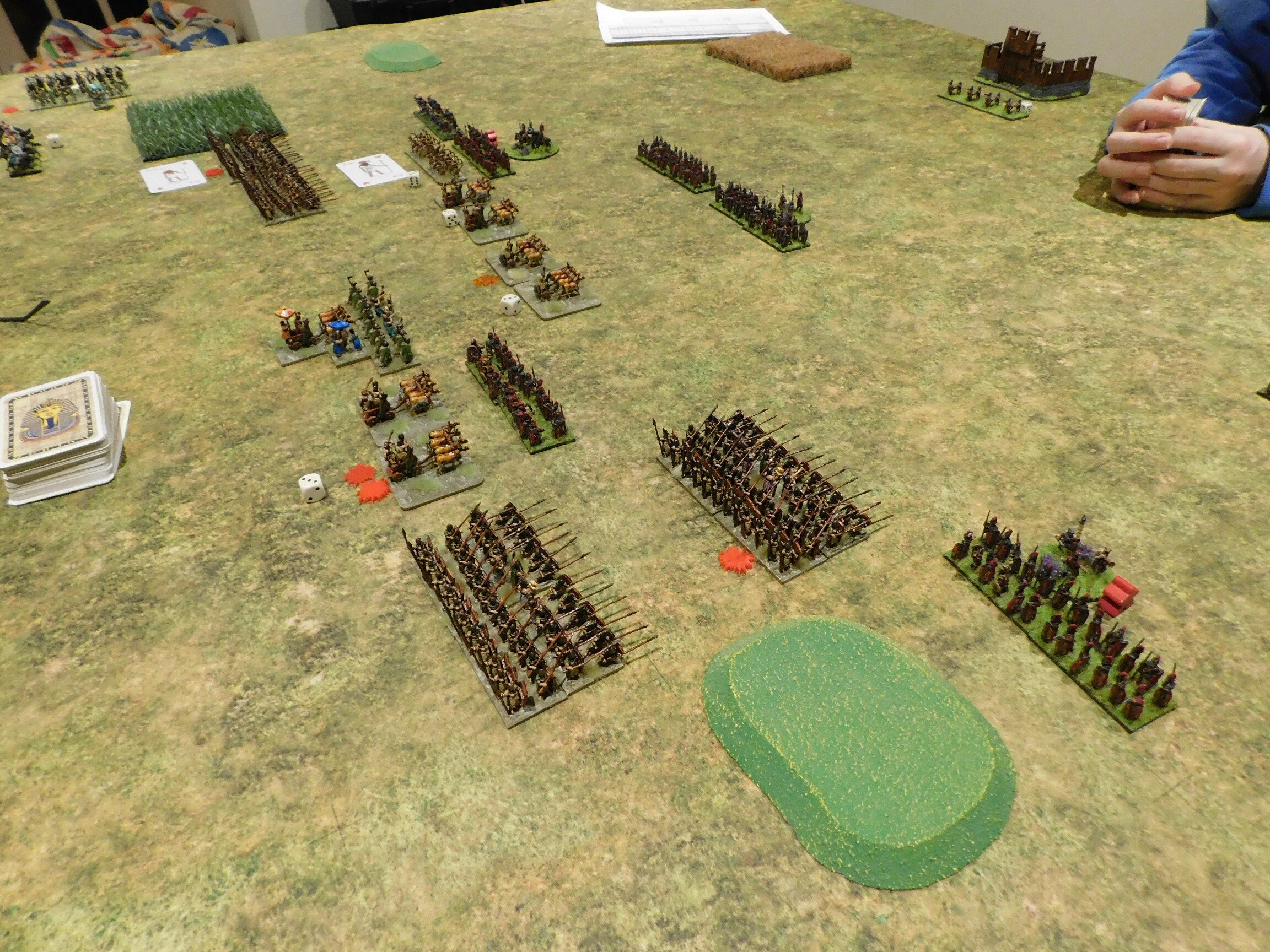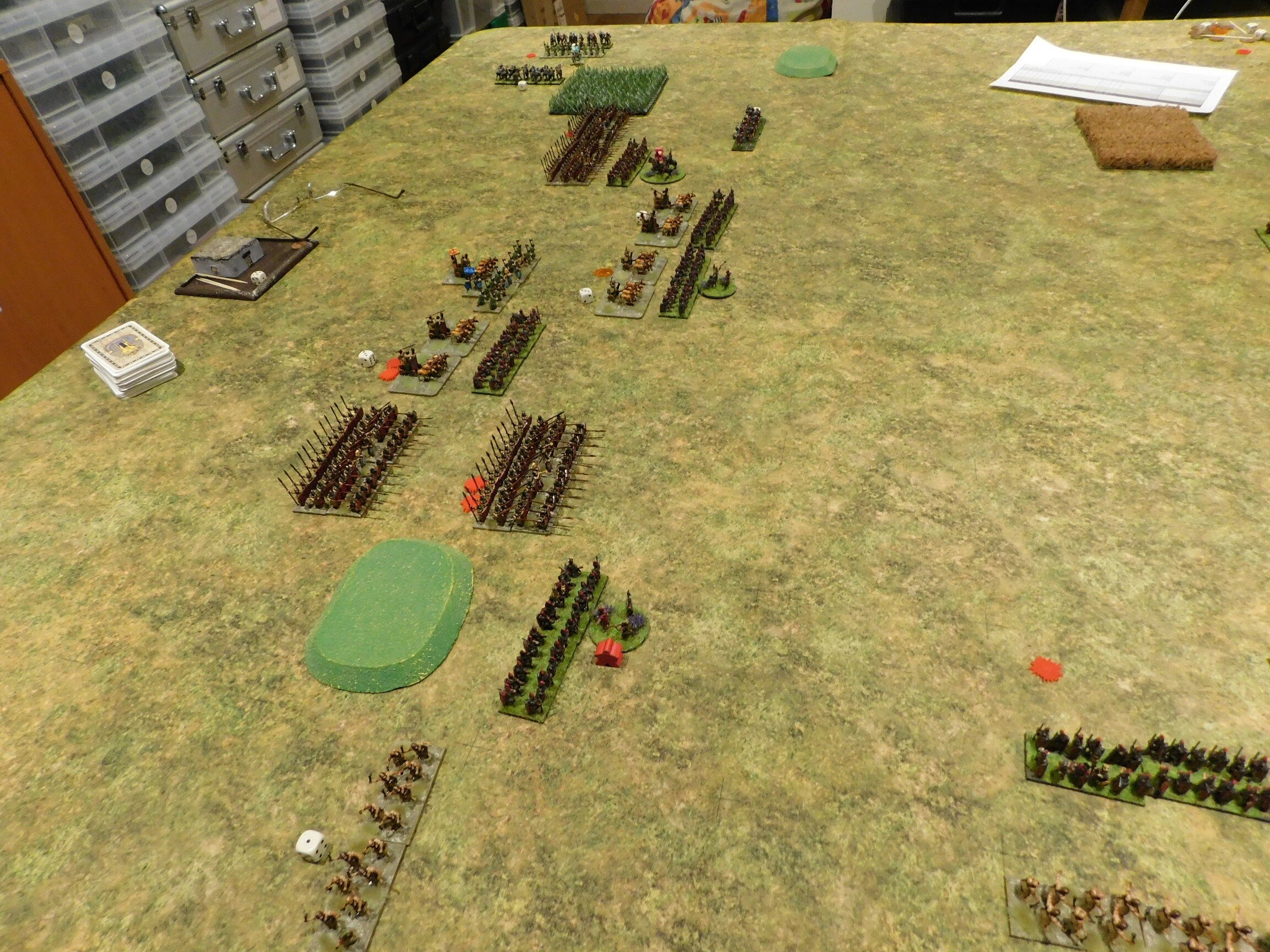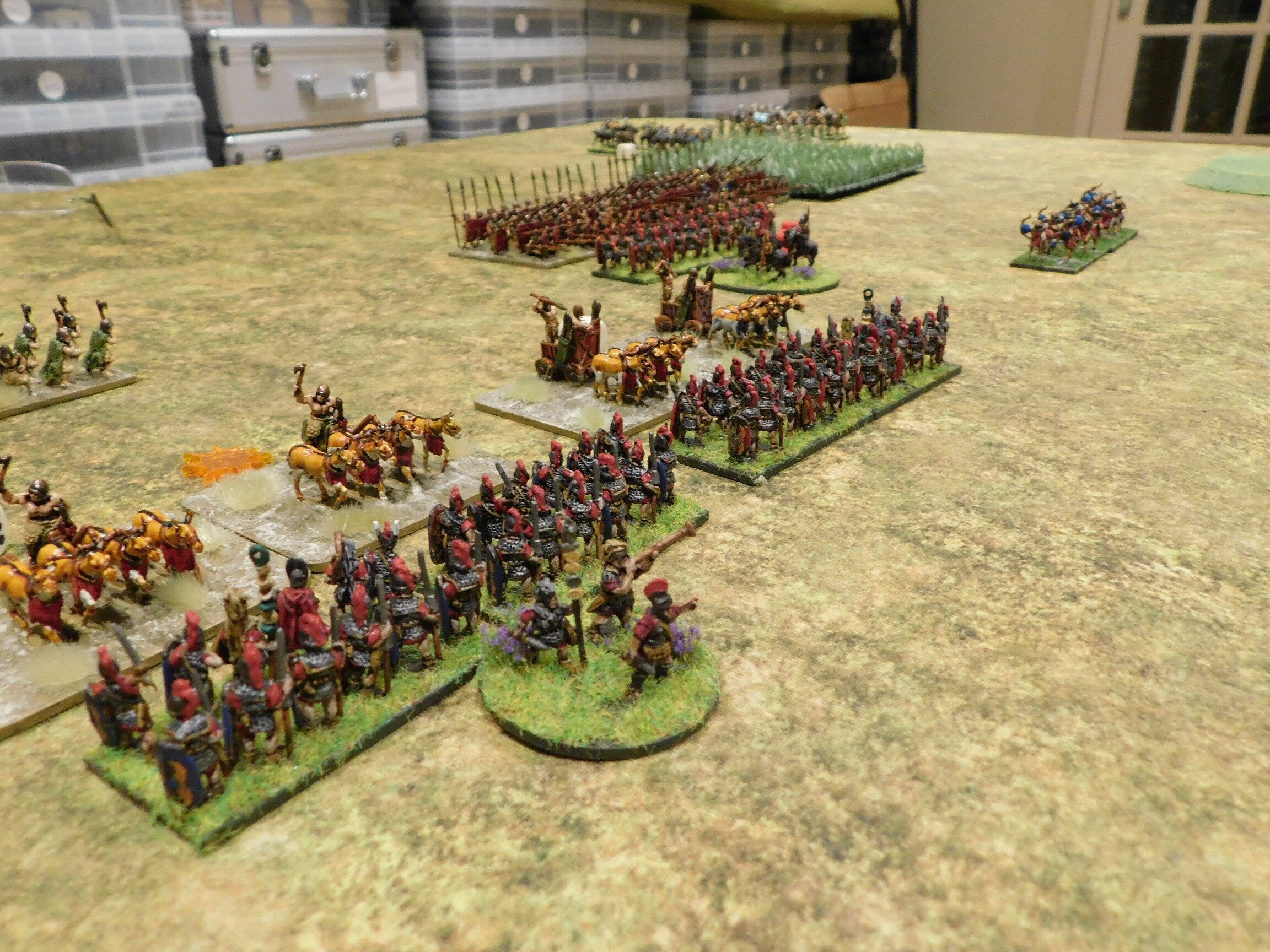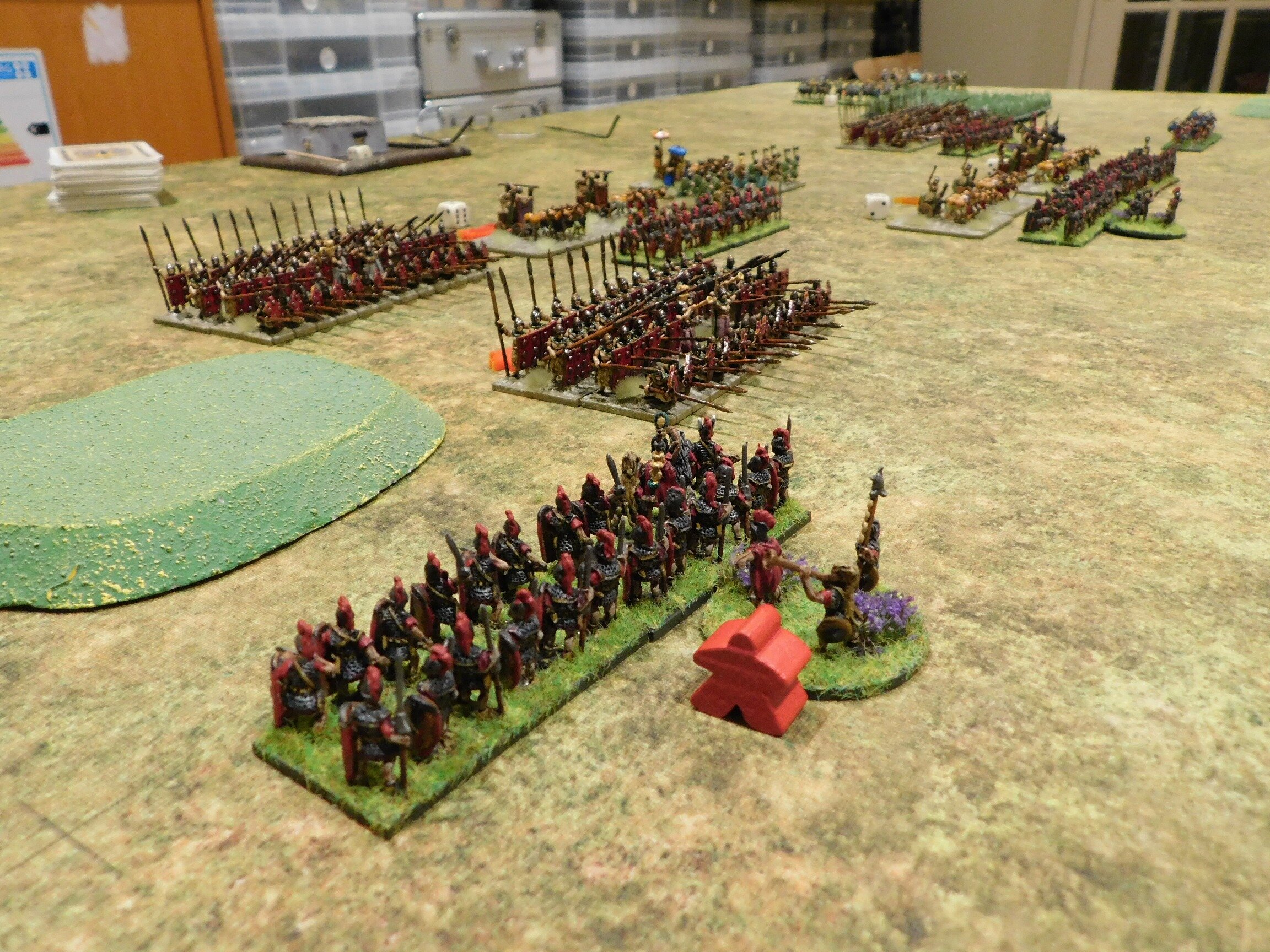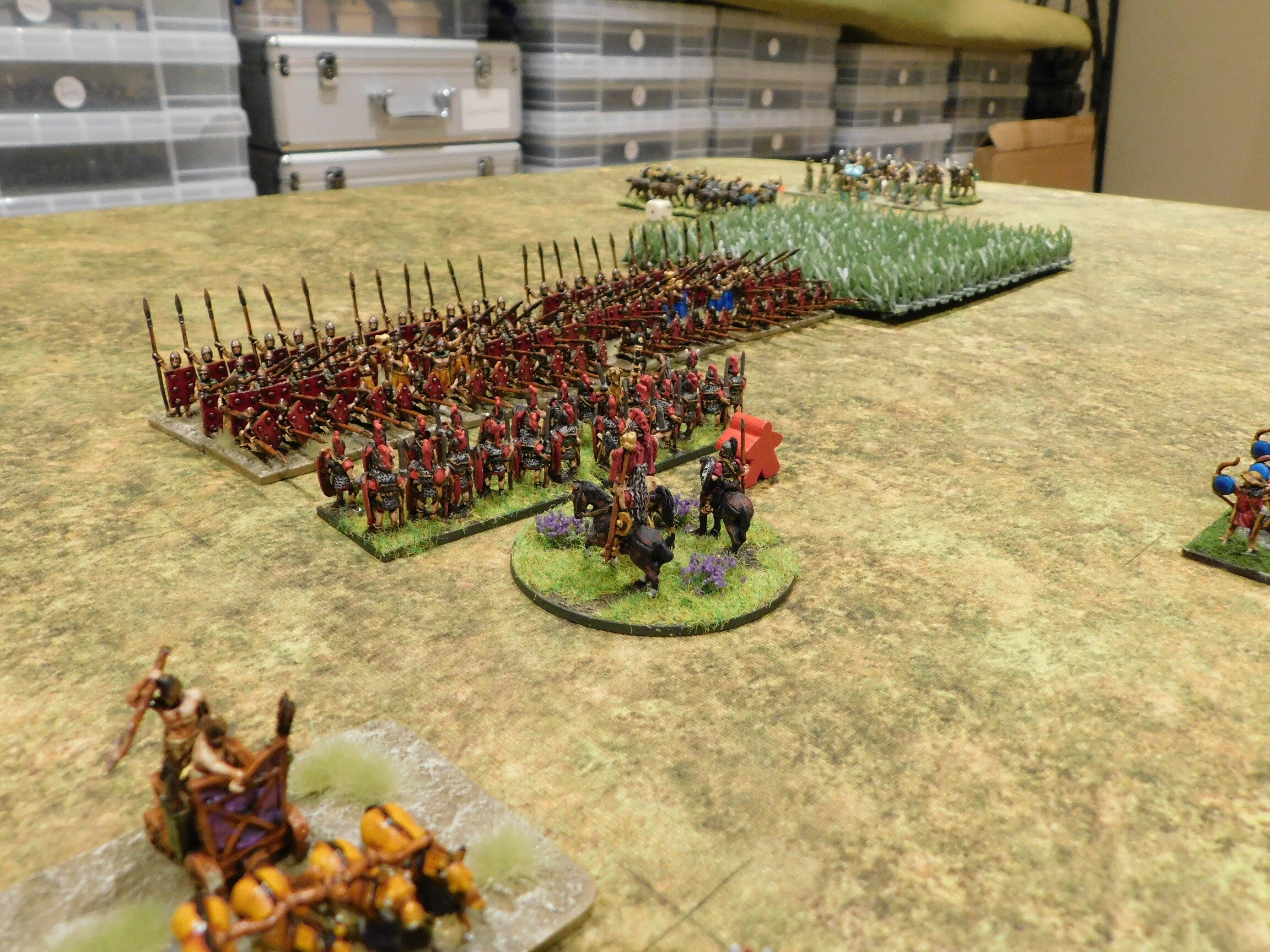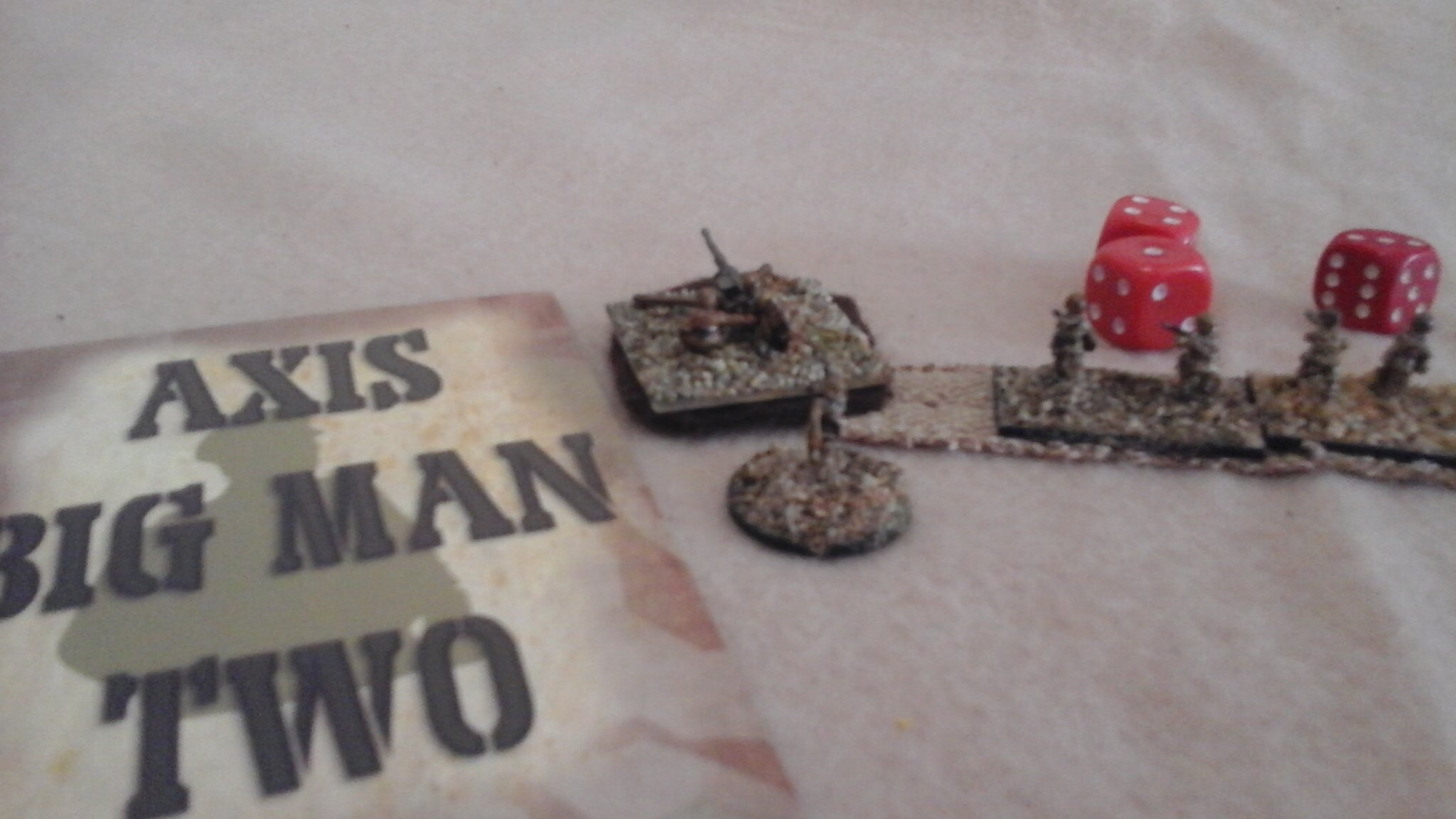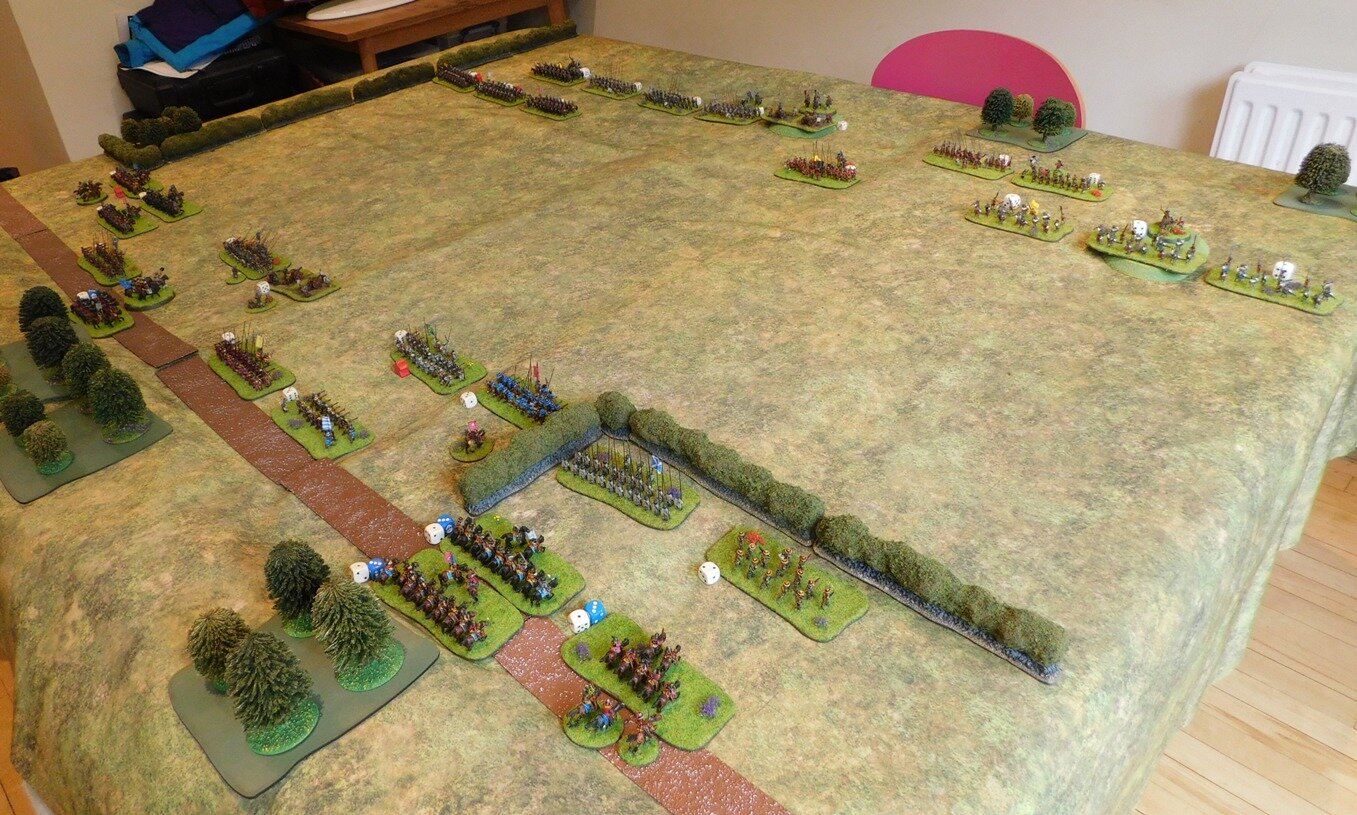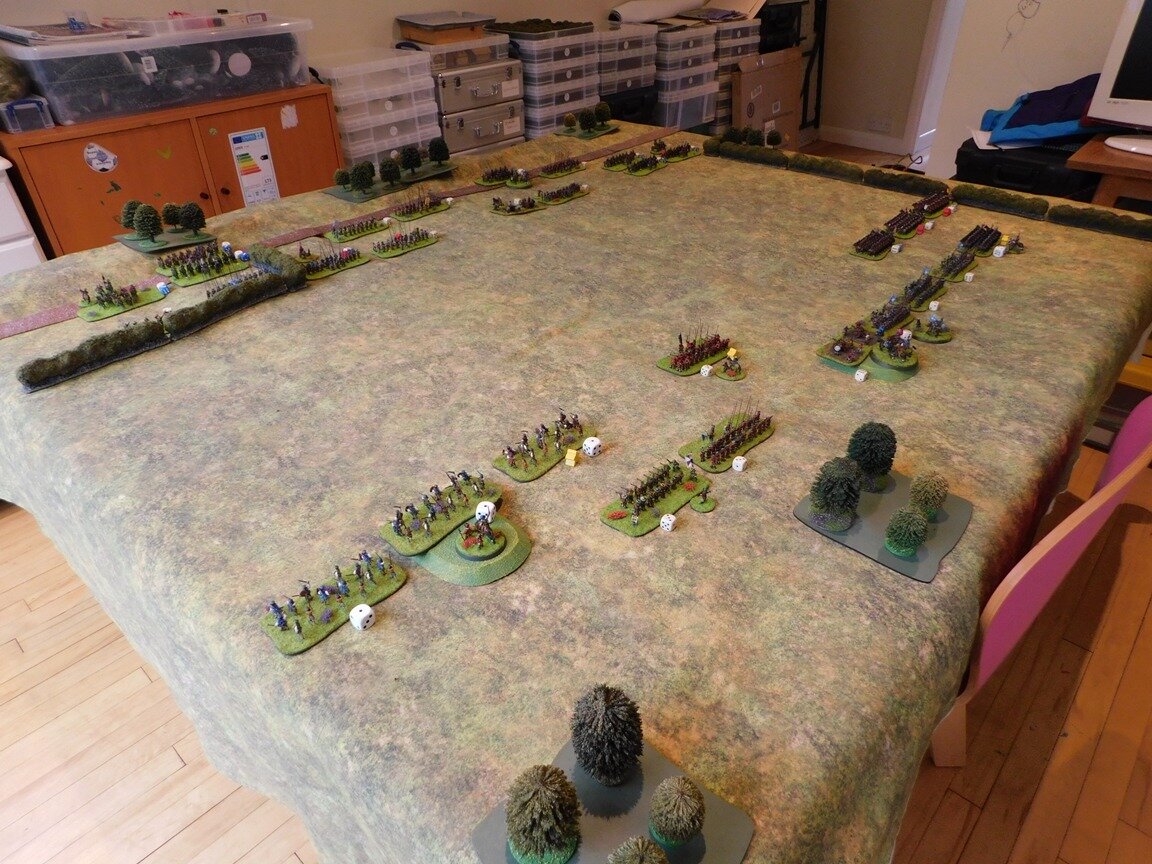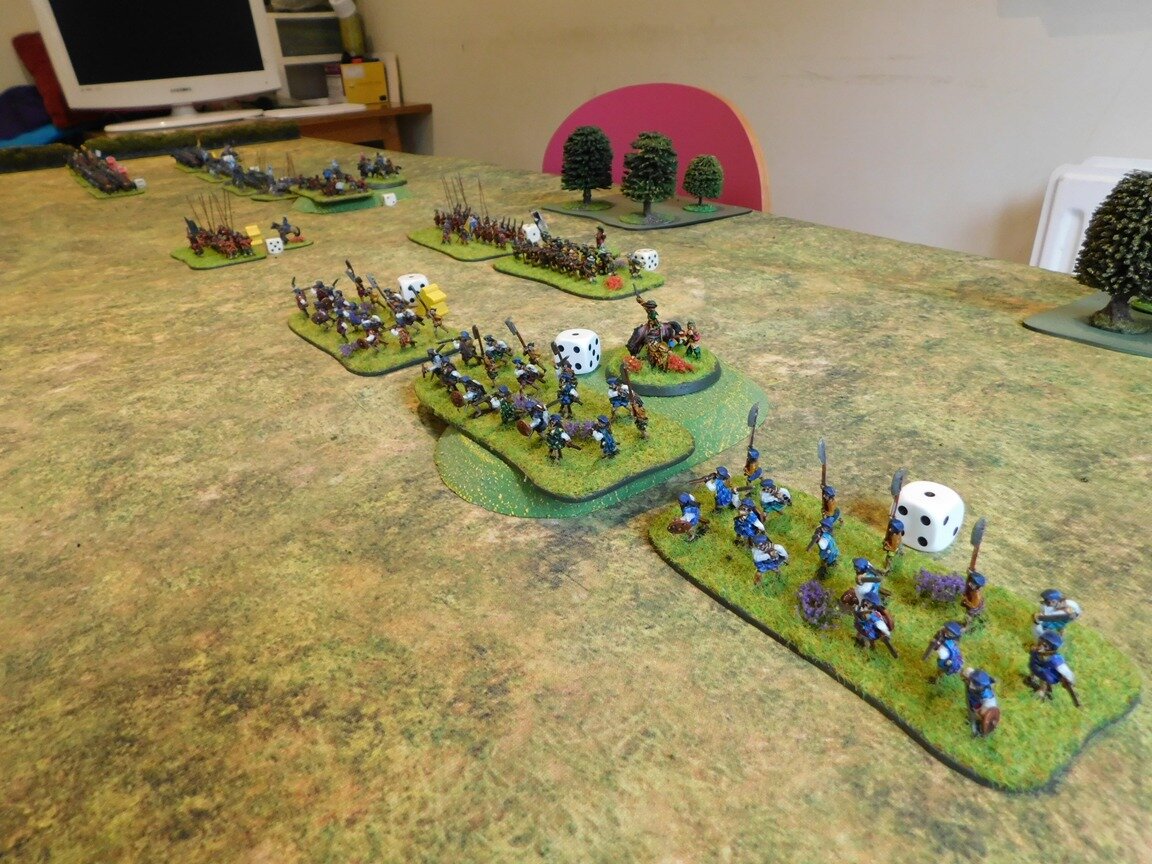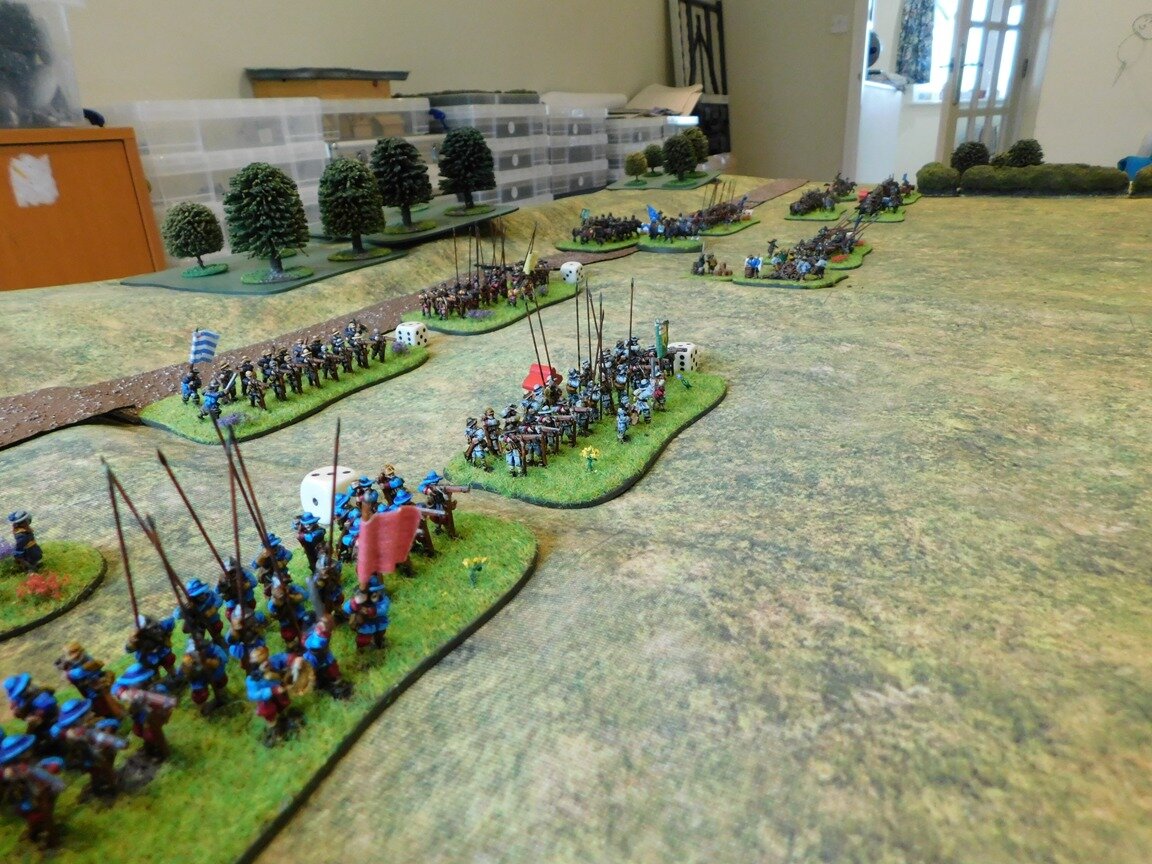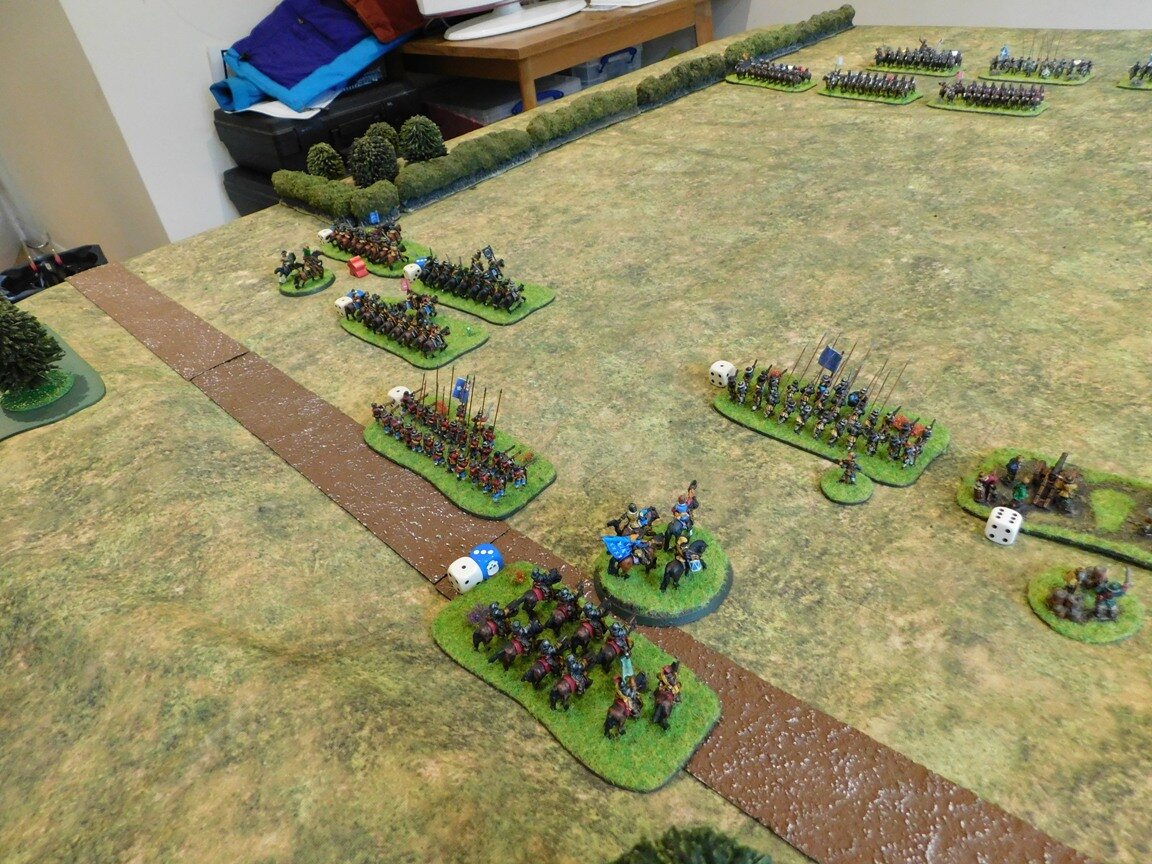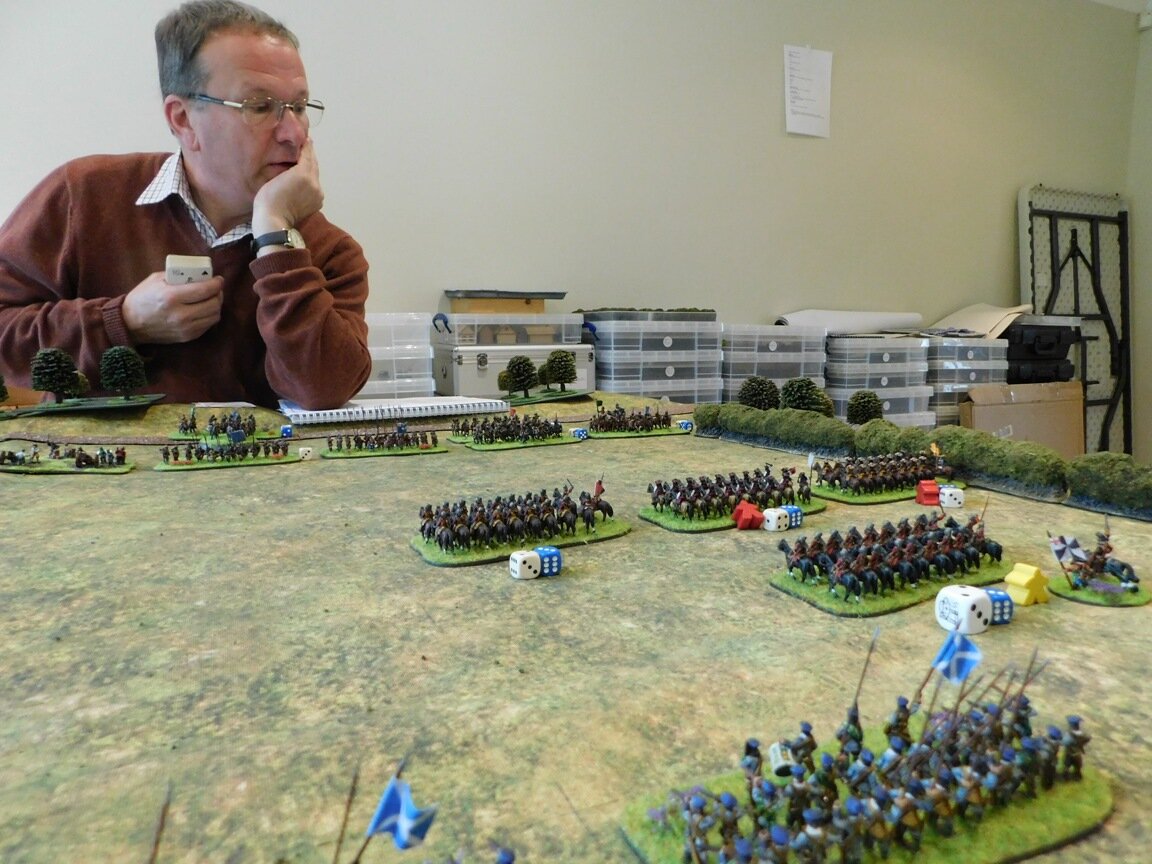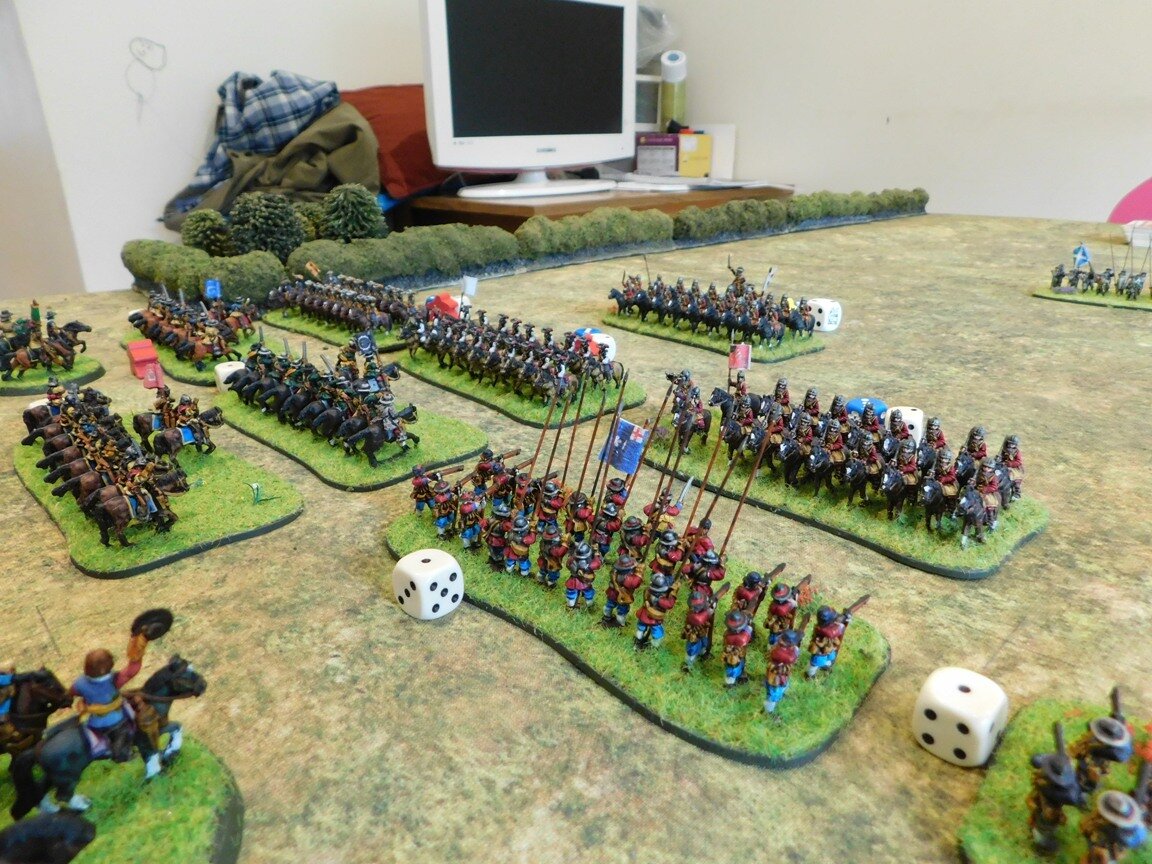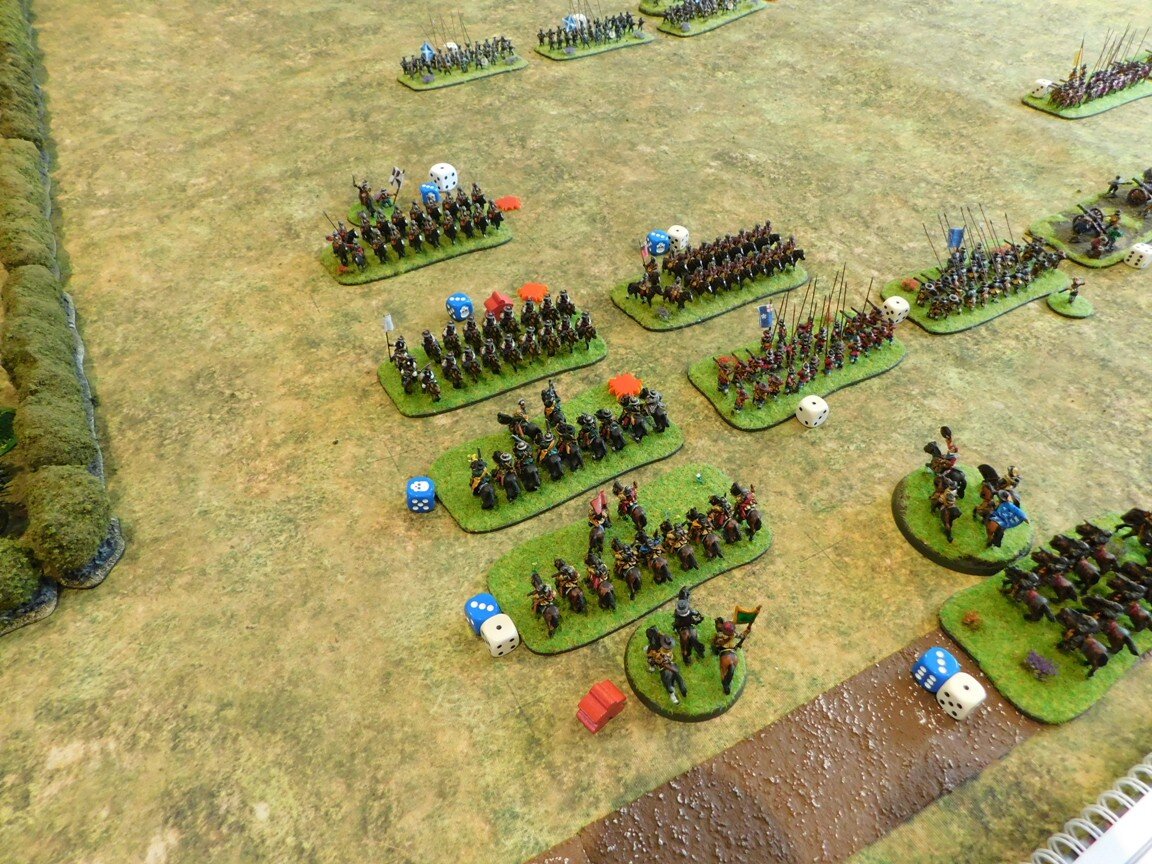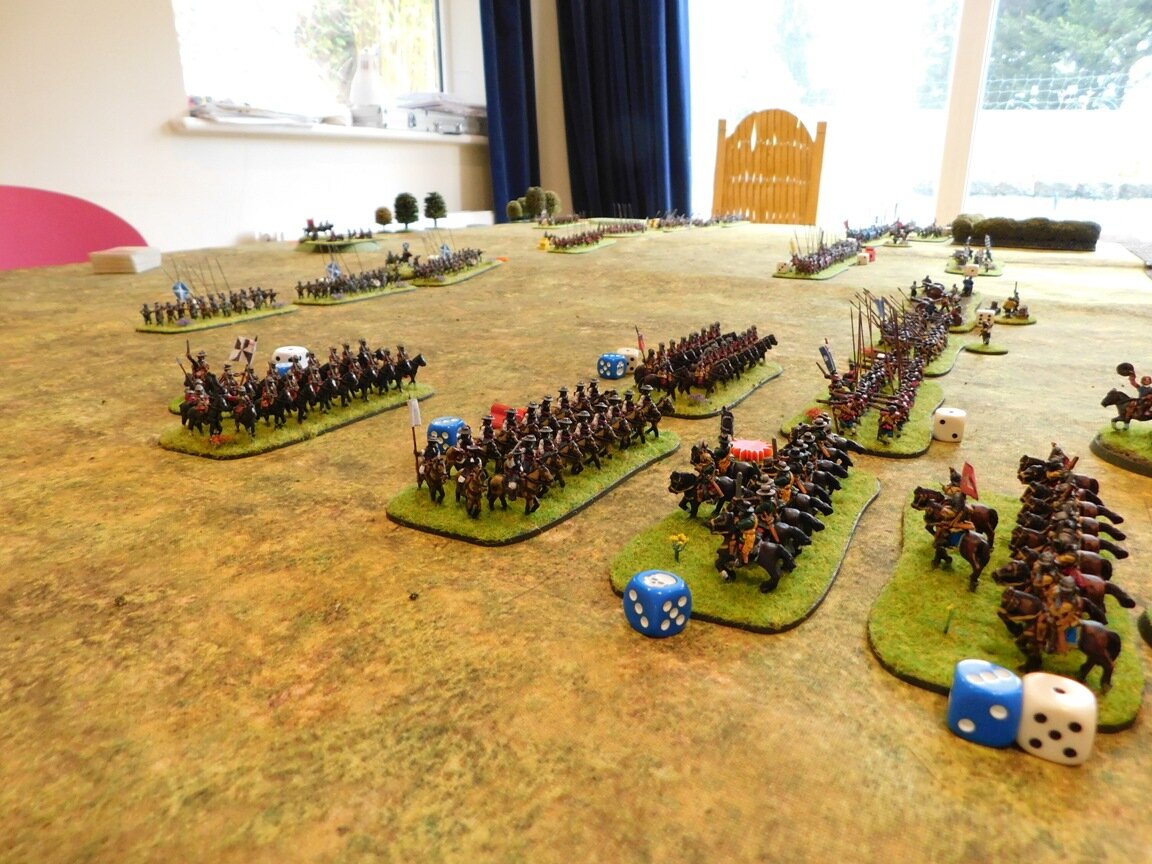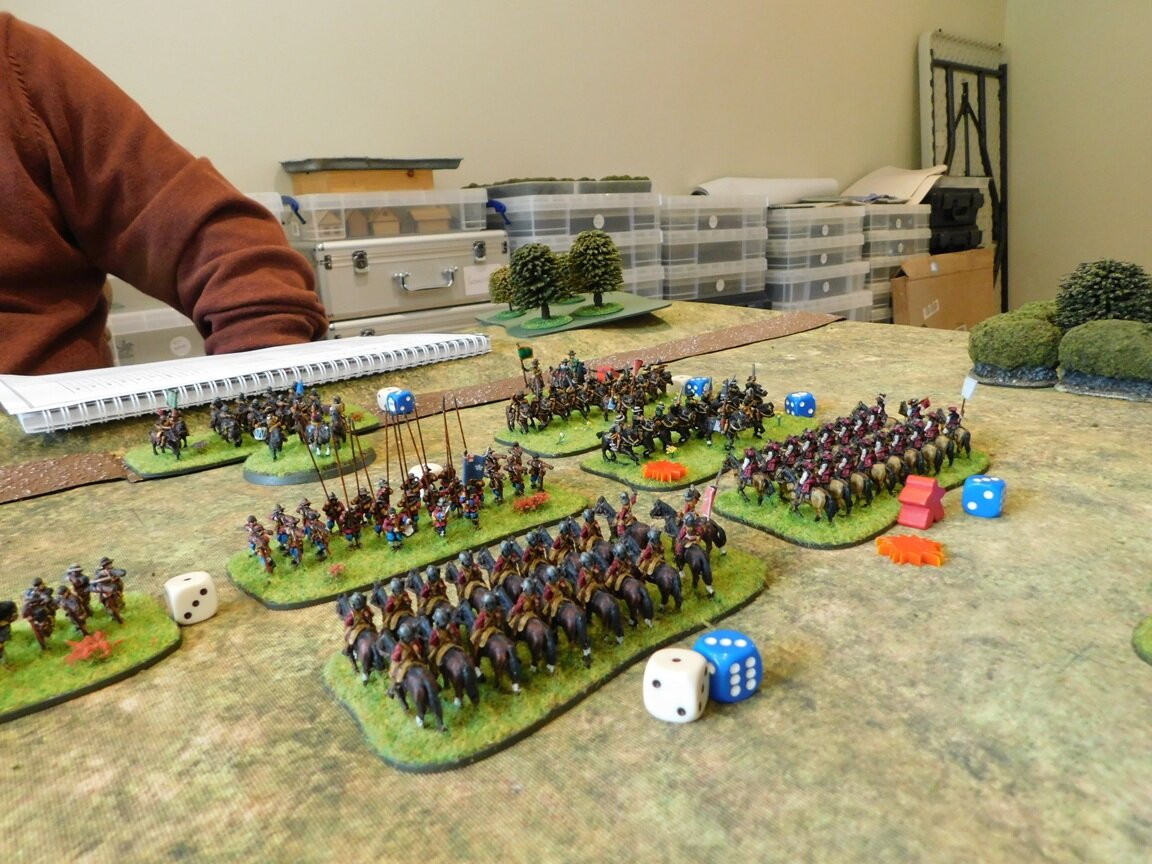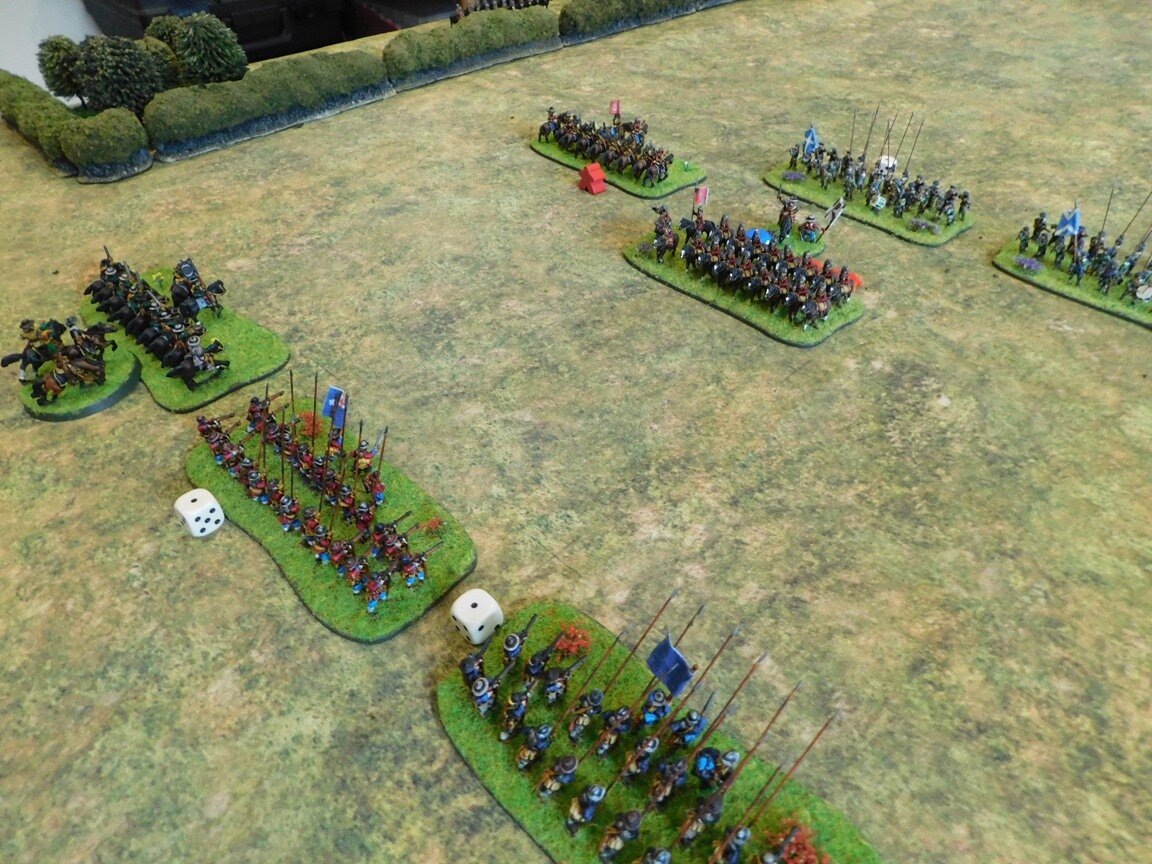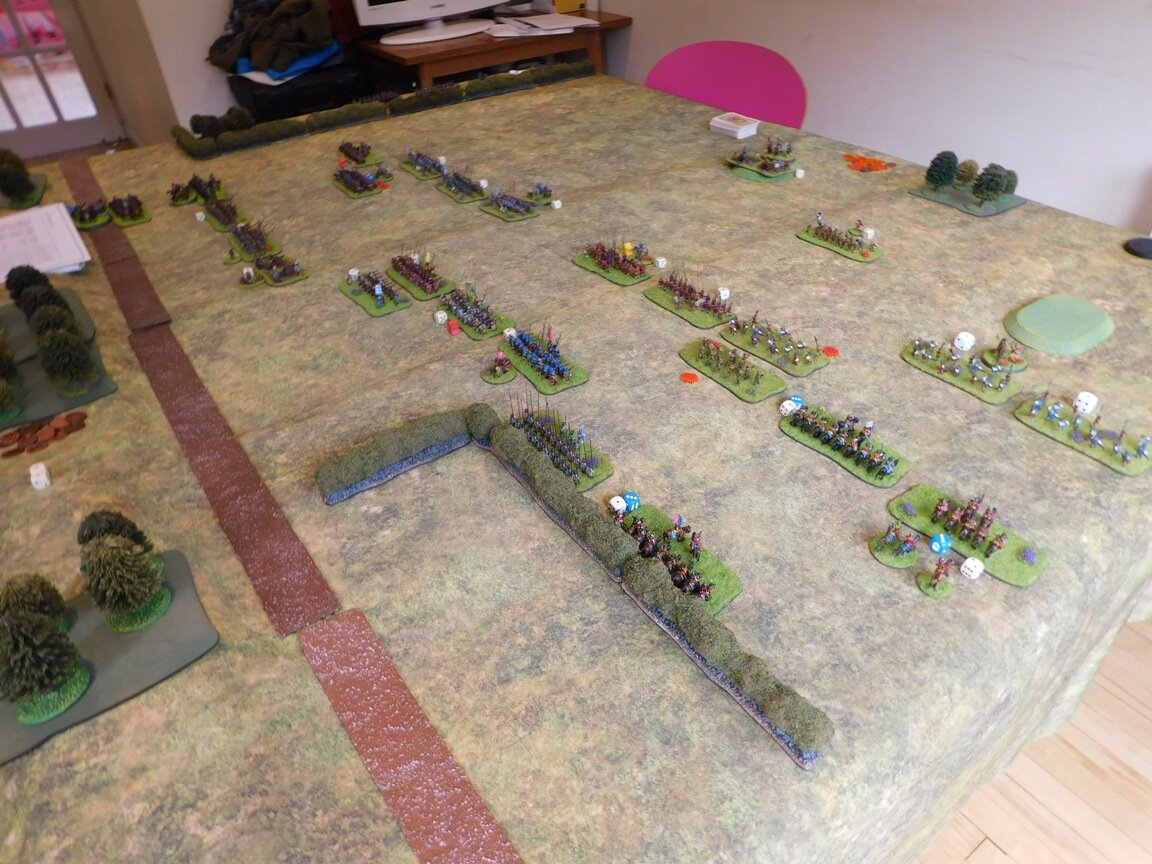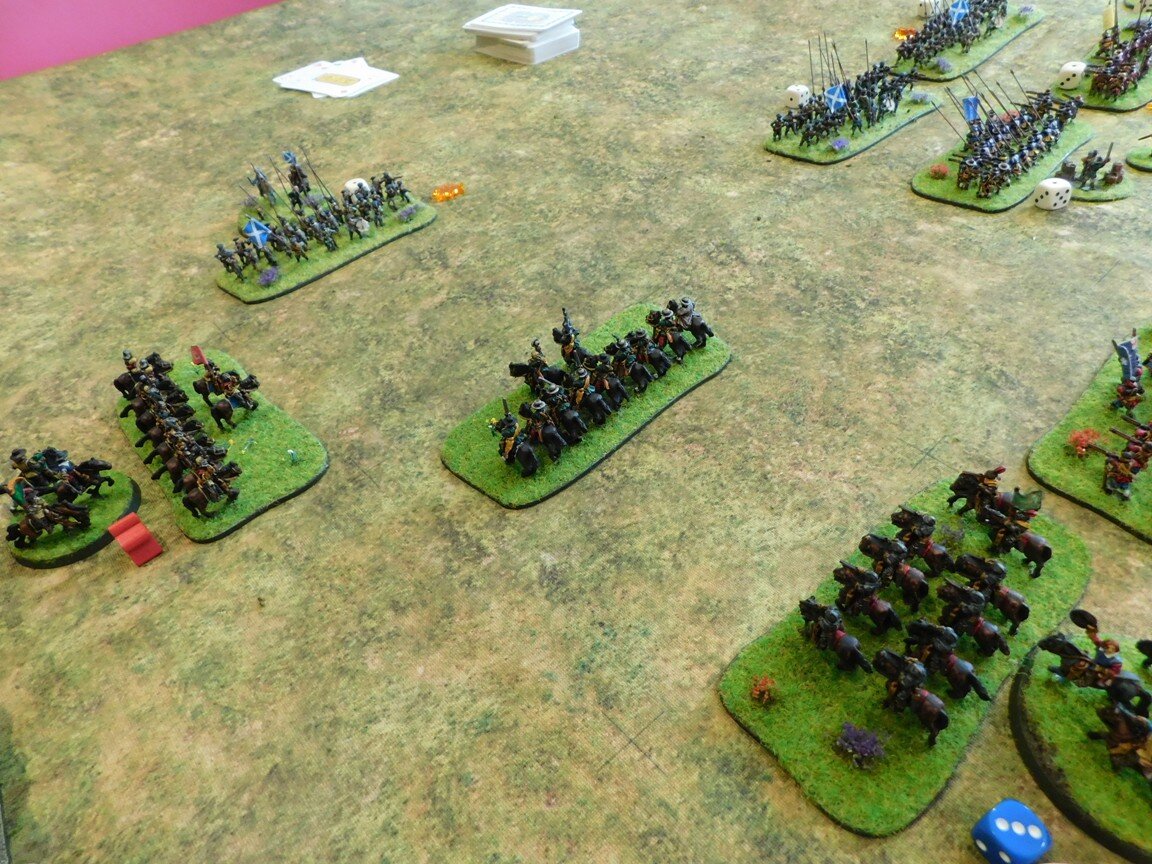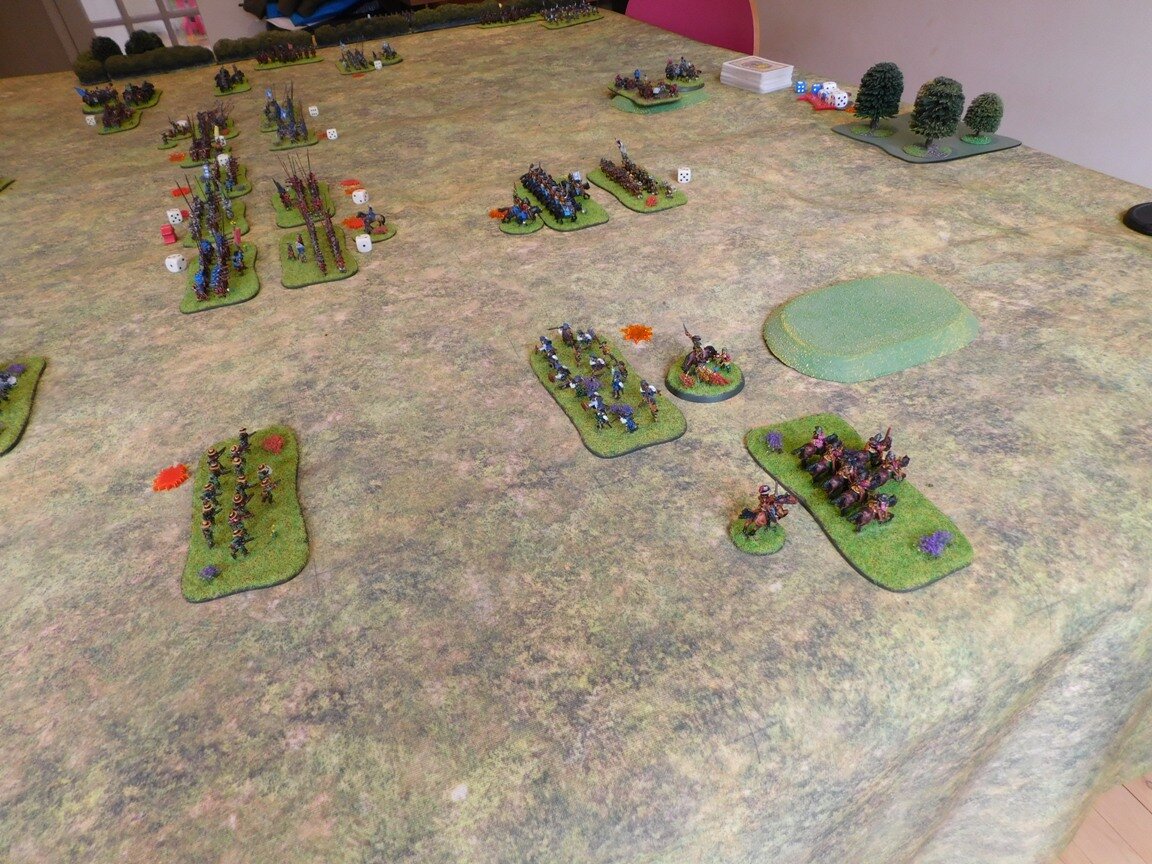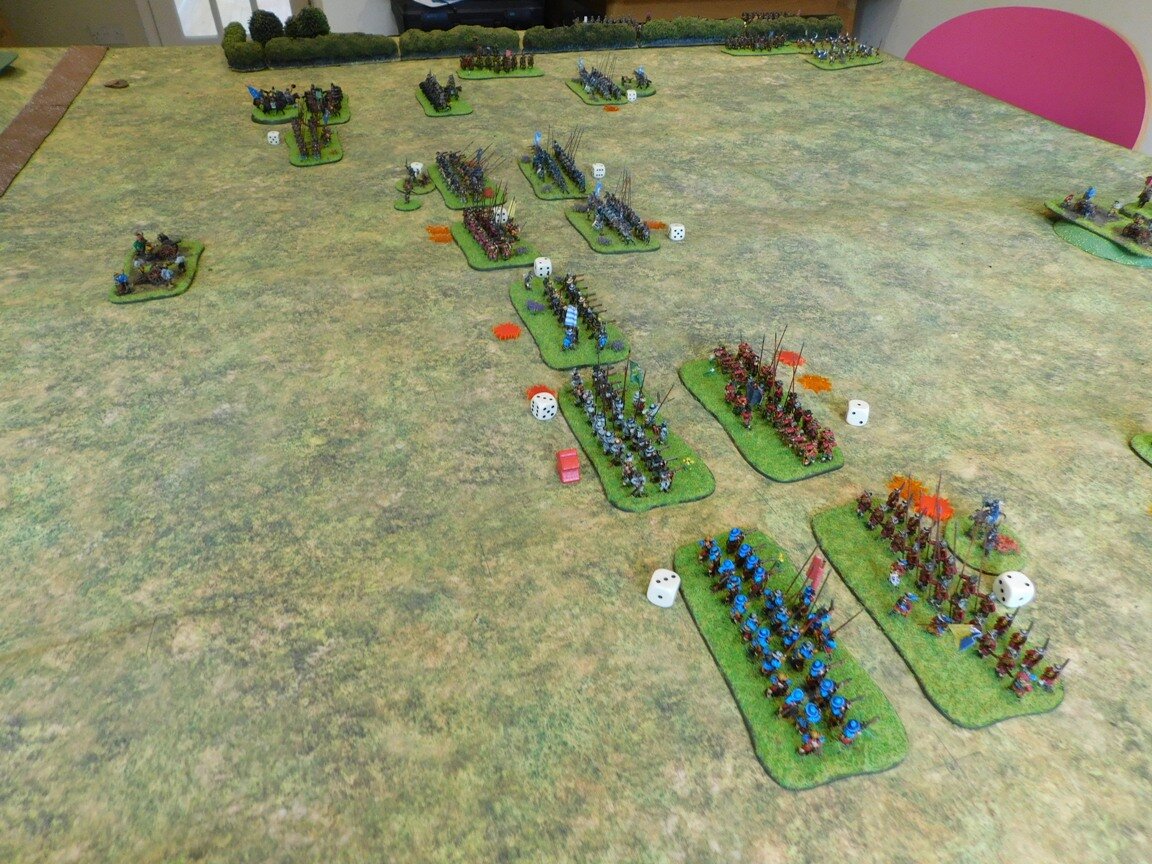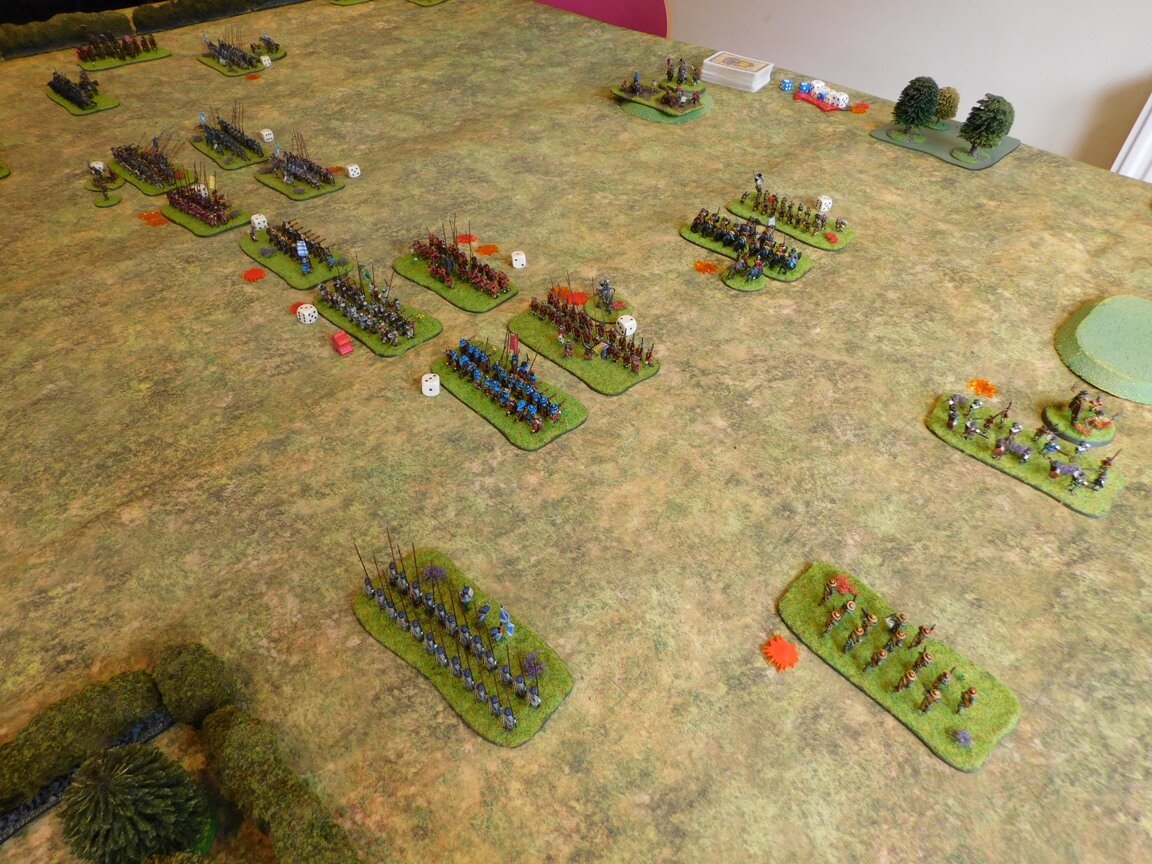The End
And that is, indeed where the battle ended.
Up to that last picture, we thought we’d been doing pretty well, but we were starting to come under lots of pressure.
Remembering the victory conditions, casualties were counted. We had taken 50% more than the opposition! Oops! Throwing Murat away like that had not been very helpful, and it was hard fighting all the way.
The Austro-Russians were claiming a glorious victory, but we thought that, situationally, we were on the cusp of a massive roll up, and we had taken the Heights and pushed the enemy back. That said, the victory claims from the French camp were much more muted: we knew that, whatever the situation, we had been quite badly roughed up.
Analysis
What did we do wrong?
Well, we deployed to perfection, but underestimated how long it would take to get our guns into play.
We were also a bit passive in issuing orders sometimes. I think we could have pushed some divisional orders onto our marshals to improve the tactical situation (although there wasn’t that much room for tactics given our charge forward!) and definitely used ADCs to get the guns and Bernadotte moving forwards more quickly.
Using Capitaine ‘Indsight again, Soult initial set back was a real surprise and really turned the tide against us really early on. The unit that turned him back was the Russian Guard, who were, to coin a phrase “immense” and held us up far too long. Without their resistance, we’d have been over the hill and into Austerlitz by lunchtime!
Our huge mistake, however, was not going to see what was going on with Murat. We left him to get on with it, even when things turned against him. we then threw him away…in that he should have disengaged and pinned the Russian right flank advance. That’s how cavalry do things, after all, but we just ordered him to keep fighting. Funnily enough, it’s what the Austrian cavalry did to Bernadotte on our right.
So, in summary, a good plan, that could have worked, but we should have been more active. I blame the hours I’d already spent on Zoom working that day: my equivalent of Napoleon’s Waterloo malaise!
Good play from the enemy too. We might have had a good plan, but I think it fair to say that they made no serious mistakes once battle was joined. Well done Dave, Trevor and Steve!
Anyway, onto…
The Result
For a final decision, let’s hear from the Umpire:
It was something of a heavy-weight bout, with both sides launching head-on attacks! It felt like two battering rams crashing into each other!
I'd call it a costly draw, although strategically more of a set-back for Napoleon perhaps.
To be honest, as one of the French players, I think we were relieved to be awarded a draw, but a draw had been declared and all that now remained was for Napoleon’s excellent propaganda machine to spin it into glorious victory!
To finish, my thanks to Edward and Bevan for running the game so smoothly, and to all the players for participating. It was a brilliant experience, and one I look forward to repeating soon.
From the Austro-Russians
A very enjoyable account, much like the reports I think Le Moniteur printed from time to time!
Very roughly, the Allies anticipated where your main attack would come from and placed our strongest Corps to block it. Sadly, Buxhowden was apparently a little hungover and they moved very slowly at the start. Our main plan was to hold the French on the Heights, with as compact a line as possible, whilst Bagration’s huge cavalry Corps savaged whatever you had on your left and then swung down the valley to smash into your advancing infantry on their flank. The Russian Imperial Guard were nicely positioned to help stop and then drive back the initial French attack.
Like a lot of things on the battlefield it don’t quite work out that way! Still Kutusov fought like a lion whilst always being outnumbered, Constantine’s Guards were magnificent, Bagration’s Cavalry did the business (Murat was always all trousers and whiskers) and once Buxhowden sobered up he know what to do. Oh and I suspect we got a few very timely dice rolls…
However our troops were all ordered to cut out the glorious but fatal charges on the French and to cause maximum casualties in defence. This seemed to work and according to our victory conditions it looked like an Allied victory – but half way through we would have settled on the draw, so no complaints about the decision.
Yes, a really good idea which produced a great game. Well done Edward & Bevan.
Finally…
Here are some final, Umpire’s, shots of the game:





